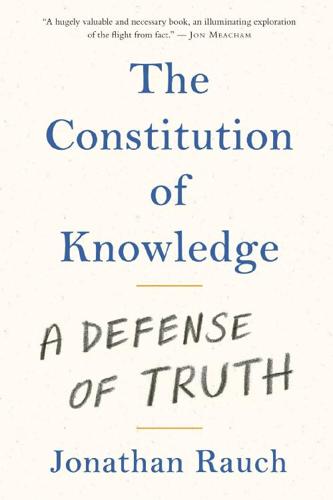
The Constitution of Knowledge: A Defense of Truth
by
Jonathan Rauch
Published 21 Jun 2021
It was a disinformation experiment by Russia’s Internet Research Agency, the infamous state-sponsored troll farm in St. Petersburg, whose humans and bots and algorithms worked around the clock to design and refine viral fakery. In 2015 an online disinformation campaign convinced millions of people—including the governor of Texas—that a routine federal military exercise might be an Obama administration plan to round up political dissidents. That, too, turned out to be a Russian dry run for the much larger disinformation campaign of 2016.14 Soon it became evident that countries around the world—big ones like Russia and Iran, small ones like Azerbaijan and Ecuador—were investing in what became known as state-sponsored trolling.15 This was a realm far removed from lulz.
…
The claims’ “contradictory character is not a flaw of the Kremlin’s propaganda, but a feature,” reported The Economist. “The purpose of the disinformation campaign is to drown Western intelligence in a cacophony of wild claims, rather than offer a coherent counter-narrative.”26 The Washington Post, publishing a flow chart of Russia’s kaleidoscopic inventions, summarized what the Russian campaigns were up to: “They fling up swarms of falsehoods, concocted theories, and red herrings, intended not so much to persuade people as to bewilder them.”27 A key to the success of any disinformation campaign is to trigger repetition and amplification in the target society’s own media and political ecosystems.
…
See correcting errors evolution, 27, 42 exclusivity of reality, 85–92, 103–04, 109, 115, 131 experimental method, 54, 58–59, 67–68, 97, 99 expertise, 91, 107, 111, 142. See also professionalism Facebook: advertising shift to, 137; conspiracy theories and, 135; content regulation and, 144–47, 150–51, 240; disinformation campaigns and, 168; institutionalization of, 150–52 FactCheck.org, 152 facts and factuality: conservative media and, 176; disinformation campaigns and, 165–66, 169; fact-checking, 152–53, 169–70; law and, 102; methodology for establishing, 116–17, 151–52; reality-based communities and, 112, 115–17, 233–34, 262; Royal Society and, 67–68; Trump and, 169–71 Fairness for All Act (2020), 238–39 fake news: conservative media and, 177–78; pre-digital, 136–37; proliferation of, 120, 185; Trump and, 6, 180.

Active Measures: The Secret History of Disinformation and Political Warfare
by
Thomas Rid
As late as September 1989, just weeks before the fall of the Berlin Wall, Department X argued in an internal meeting that the peak of the AIDS disinformation campaign had not yet been achieved.46 The X was right. Jakob Segal continued to spread the AIDS-was-made-in-the-USA theory until his death in 1995—the X and Service A had ceased to exist, but the academic remained a committed conspiracy activist. Ten years after that, the hip-hop icon Kanye West rapped, “I know that the government administer AIDS.” The KGB assessed the AIDS campaign as a major success. In 1992, the head of Russian foreign intelligence, Yevgeny Primakov, confirmed the KGB’s role in the AIDS disinformation campaign during a talk at MGIMO, an academic institute affiliated with the Ministry of Foreign Affairs in Moscow.
…
For the offender, campaigns have become harder to control, harder to contain, harder to steer, harder to manage, and harder to assess. For victims, disinformation campaigns have also become more difficult to manage, more difficult to assess in impact, and more difficult to counter. At the beginning of the third decade of the twenty-first century, both open and closed societies, many thrown into self-doubt and outright identity crises by the rise of the internet and its side effects, are both overstating and, more rarely, understating the threat and the potential of disinformation campaigns—and thus helping expand and escalate that very threat and its potential. This constructivist vortex is propelled by an unprecedented confluence of incentives that lead many victims—politicians, journalists, technologists, intelligence analysts, adversary operators, and most researchers—to highlight the potentials of disinformation over its limitations.
…
It was clear then, on June 16, that some of the world’s most experienced and aggressive intelligence operators were escalating a covert attack on the United States.3 Over the next days and weeks, I watched the election interference as it unfolded, carefully collecting some of the digital breadcrumbs that Russian operators were leaving behind. In early July, I decided to write up a first draft of this remarkable story. I published two investigative pieces on the ongoing disinformation campaign, the first in late July 2016, on the day of the Democratic Convention, and the second three weeks before the general election. But I noticed that I was not adequately prepared for the task. I had a good grasp of digital espionage and its history, but not of disinformation—what intelligence professionals used to call “active measures
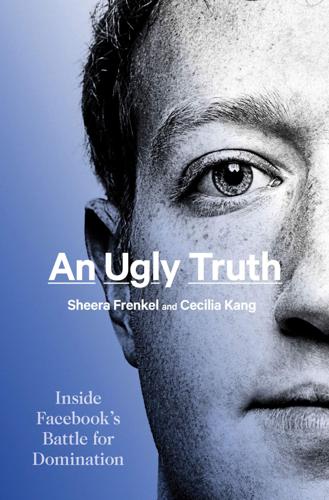
An Ugly Truth: Inside Facebook's Battle for Domination
by
Sheera Frenkel
and
Cecilia Kang
Published 12 Jul 2021
Stamos and other members of the security team—working under what was known as an XFN, or “cross-functional,” group—continued to search for Russian interference and broadened their scope to look for disinformation campaigns affecting other countries. The security team had already found that governments were actively using the platform to promote their own political agendas. In a separate report produced by the XFN team, Stamos included flags from nations such as Turkey and Indonesia as examples of governments that had used Facebook to run disinformation campaigns to sway public opinion and elections in their countries or those in nearby states. Facebook needed to go on the offensive.
…
Her handiwork was “a contagion,” the official added, echoing the words of academic and activist Shoshana Zuboff, who a year earlier had described Sandberg as playing “the role of Typhoid Mary, bringing surveillance capitalism from Google to Facebook, when she signed on as Mark Zuckerberg’s number two.”3 With scant competition to force the leaders to consider the wellbeing of their customers, there was “a proliferation of misinformation and violent or otherwise objectionable content on Facebook’s properties,” the attorneys general alleged in their complaint. Even when faced with major impropriety such as Russia’s disinformation campaign and the data privacy scandal involving Cambridge Analytica, users didn’t leave the site because there were few alternatives, the regulators maintained. As James succinctly described, “Instead of competing on the merits, Facebook used its power to suppress competition so it could take advantage of users and make billions by converting personal data into a cash cow.”
…
“However, with a bipartisan push in Congress for open hearings and President Obama ordering a review of Russian activity during the election, it is possible that Facebook will be publicly identified as a platform for both active and passive information operations.” The threat was only increasing, the report made clear: “We expect that our challenge with organized disinformation campaigns will only increase in 2017.” No one else spoke as Zuckerberg and Sandberg drilled their chief security officer. Why had they been kept in the dark? How aggressive were the Russians? And why, asked a visibly agitated Sandberg, had she not known that Stamos had put together a special team to look at Russian election interference?
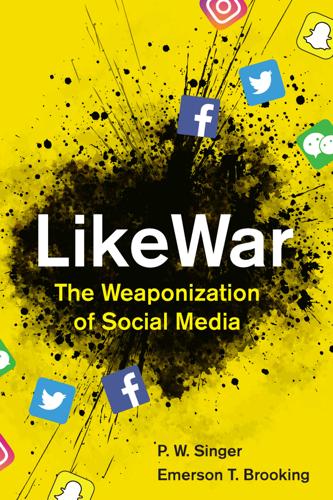
Likewar: The Weaponization of Social Media
by
Peter Warren Singer
and
Emerson T. Brooking
Published 15 Mar 2018
Much like the harassment campaigns inside Russia, sockpuppets also targeted Putin critics abroad. The most extreme efforts were reserved for those who investigated the disinformation campaigns themselves. After journalist Jessikka Aro published an exposé of the fake accounts, sockpuppets attacked her with everything from posts claiming she was a Nazi and drug dealer to messages pretending to be from her father, who had died twenty years earlier. When another group of Western foreign affairs specialists began to research the mechanics of disinformation campaigns, they found themselves quickly savaged on the professional networking site LinkedIn. One was labeled a “pornographer,” and another was accused of harassment.
…
Where bots became truly weaponized, though, was in how they expanded the work of Russian sockpuppets prosecuting their “information war” from afar. In 2017, growing public and congressional pressure forced the social media firms to begin to reveal the Russian campaign that had unfolded on their platforms during the 2016 election. The numbers, once begrudgingly disclosed, were astounding. The bot accounts were putting the disinformation campaign on steroids, allowing it to reach a scale impossible with just humans at work. Twitter’s analysis found that bots under the control of the Internet Research Agency (that lovely building in St. Petersburg where our philosophy major worked) generated 2.2 million “election-related tweets” in just the final three months of the election.
…
Recall the KGB’s Operation INFEKTION, the Cold War claim that the U.S. military invented AIDS. During that era, Ladislav Bittman served alongside the KGB in its allied Czechoslovakian intelligence service’s disinformation department. In a 1985 book, he explained how “every disinformation message must at least partially correspond to reality or generally accepted views.” The AIDS disinformation campaign, for example, didn’t invent a new threat; instead, it leveraged people’s fears about a well-known but then mysterious disease. The internet, and especially its memetic elements, enables this further. For instance, as bizarre as the #Pizzagate hoax may have seemed, it effectively leveraged a canon of Clinton-linked controversies that stretched across every social media platform for over a decade.
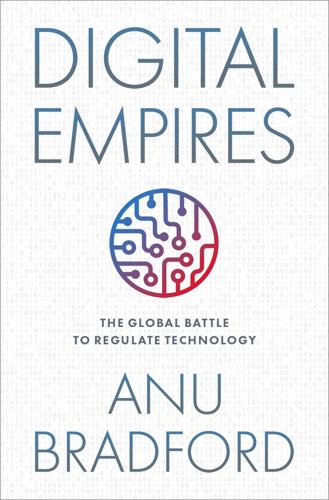
Digital Empires: The Global Battle to Regulate Technology
by
Anu Bradford
Published 25 Sep 2023
Very large platforms infringing the DSA can be fined up to 6 percent of their global turnover.91 For example, if Meta were to be fined the maximum 6 percent under the DSA, it could cost the social network $7.1 billion, based on its 2021 revenue.92 By resorting to binding rules and heavy fines, the DSA underscores the EU’s view that government intervention is needed for preserving democracy in a digital society—an approach that stands in stark contrast to the US government, which has been reluctant to intervene for the fear that any such limits on free speech present ultimately an even greater threat for democracy. The EU’s efforts to fight online disinformation through digital regulation are particularly relevant in its quest to protect the integrity of political elections. Politically motivated disinformation campaigns, including interference by foreign governments, present a serious threat to democracy.93 One particularly disturbing example of such election meddling is Russia’s disinformation campaign orchestrated to influence the outcome of the 2016 Brexit referendum,94 which further contributed to the EU’s resolve to address the problem with more robust regulation. A related concern for the EU is the manipulation of voter behavior, which can compromise citizens’ privacy, personal autonomy, and freedom to exercise free will in a political process.95 The infamous Cambridge Analytica scandal revealed how various actors can deploy psychometrics—often obtained without the target’s consent and hence infringing personal privacy—to engage in intricate micro-targeting of individuals aimed at influencing their electoral choices.96 As a result, citizens’ ability to partake in free and fair elections by exercising their full and autonomous political choice has become a central concern for the EU’s regulatory model.
…
The EU and other critics of the market-driven regulatory model can also point out how Facebook, Twitter, YouTube, and other platforms have repeatedly failed to remove dangerous disinformation on topics ranging from the COVID-19 pandemic to democratic elections. And they can replay the images of the January 6, 2021, insurrection at the US Capitol, which originated in a rampant social media–fueled disinformation campaign about a stolen election.31 Consequently, when looking strictly at innovation and economic growth, the American market-driven model can be praised for its ability to nurture tech companies, but that economic benefit comes at the expense of risking fundamental rights, human dignity, political autonomy, and democracy.
…
As long as these platforms tolerate disinformation, voters can be misled, causing them either to vote based on false information or refrain from voting if such disinformation undermines their faith in the integrity of the electoral process. There is no more vivid illustration of this than the January 6 insurrection at the US Capitol following a rampant social media–fueled disinformation campaign about a stolen election. The unregulated digital economy is also rife with privacy scandals. This is exactly what happened in the infamous Cambridge Analytica scandal that involved the harvesting of Facebook data to build psychological profiles that were then used in political campaigns—without obtaining consent of those individuals whose data had been used.185 While the Cambridge Analytica scandal was rather extreme in its scope and impact, large online platforms have tremendous leeway to infringe user privacy and individual autonomy on a daily basis.
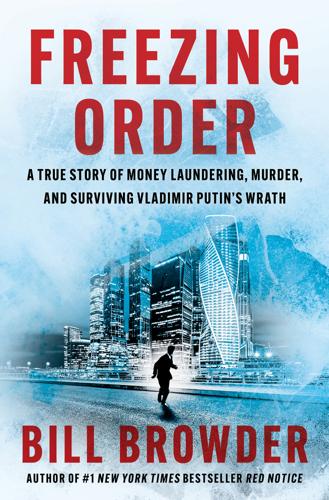
Freezing Order: A True Story of Money Laundering, Murder, and Surviving Vladimir Putin's Wrath
by
Bill Browder
Published 11 Apr 2022
If the film had caused Chairman Royce to remove the Global Magnitsky Act from his committee’s agenda, then, somehow, I had to convince him to ignore it. I called his office, but couldn’t pierce the thick layer of staff surrounding him. The best I could do was to get one of his junior people on the phone. I warned the staffer that Royce’s committee was the target of an active Russian disinformation campaign. He listened politely, promising to bring it up with the chairman. I’d experienced enough of these types of conversations to know that when a young staffer promises to bring it up with their boss, they have no intention of mentioning it to anybody. If I couldn’t get to Royce directly, I’d try getting to him indirectly.
…
The two of us boarded a Virgin Atlantic flight from Heathrow to Dulles on June 12, the day before the screening. We checked into the Grand Hyatt and prepared for a full slate of meetings the following day with members of Congress, government officials, and journalists. Our hope was to inoculate anybody who might be susceptible to Veselnitskaya’s disinformation campaign. She and her team seemed to be just as busy. As I rolled out of bed the next morning, I learned that Rohrabacher’s office had been working late into the night, emailing screening invitations to every single member of Congress. Veselnitskaya’s team had also been reaching out to the media.
…
He promised to send some of his staff to the screening and get them to write a report, which would make its way into an interagency memo, but that, along with his sympathy, was all he could offer. Everyone assumes that if a senior official at the State Department is aware of this type of operation, then the US intelligence community will actively be working to thwart it. It wasn’t as if the FBI didn’t know about the Russian disinformation campaign. Robert Berschinski may or may not have alerted them, but Kyle certainly had—in May—and now, a month later, they had still done nothing. The reality is that the US government is so mammoth, siloed, and bureaucratic that in order for anything to happen, someone extremely important has to intervene and declare, “This is unacceptable.
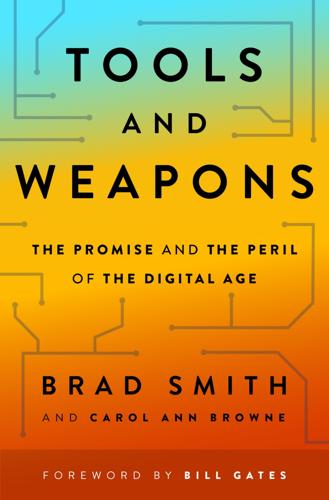
Tools and Weapons: The Promise and the Peril of the Digital Age
by
Brad Smith
and
Carol Ann Browne
Published 9 Sep 2019
Cyber-based threats around hacking of campaigns and disruption of voting were barely on the radar screen a decade ago. Today they are real risks that spill into daily news reports. Just as democratic governments and industry worked together to win a world war in the 1940s, today they must develop a unified response to protect the peace. And as authoritarian regimes experiment with disinformation campaigns, even more complex challenges lie ahead. Chapter 6 SOCIAL MEDIA: The Freedom That Drives Us Apart In a museum in the center of Tallinn, Estonia, which sits on the edge of the Baltic Sea, a young woman and man spin in perpetual motion, perched on opposite ends of a long, narrow plank.
…
It sounds a common chorus of people around the world yearning for freedom. And most important, it examines the constant tension between freedom and responsibility that the museum’s pair of floating mannequins so elegantly display. When we visited Estonia in the fall of 2018, the US Congress’s investigation into disinformation campaigns on Twitter and Facebook was at full throttle. The world had awoken to this new set of challenges and was asking questions. How had this happened? Why had it happened? And why hadn’t we realized it sooner? One answer to these questions came to us on a Saturday morning at the Vabamu Museum, the brainchild of an Estonian turned American named Olga Kistler-Ritso.
…
Repeatedly over time, technology has made the world a smaller place, but people are less connected with those living next door or under the same roof.8 This also creates new challenges for democracy. Spending more time online, sometimes with complete strangers, has made people more susceptible to disinformation campaigns that play to their likes, desires, and sometimes their prejudices, with real-world consequences. For decades one of the strengths of the world’s republics had been the ability to use open communication and public discussion to ensure broad and even bipartisan understanding, support for foreign policy issues, and a commitment to democratic freedoms.

Reset
by
Ronald J. Deibert
Published 14 Aug 2020
Army), and which were executed as part of clandestine regime change and other military and intelligence programs throughout the Third World. As happens today, commercial and nation-state disinformation campaigns periodically overlapped. In the 1940s, the United Fruit Company hired Edward Bernays, who later used his public relations expertise to help foment a coup in Guatemala after the election of a president who was unfavourable to the company. Bernays helped mount a multi-pronged disinformation campaign designed to discredit the democratically elected president, Jacobo Árbenz, as a communist puppet and to motivate U.S. lawmakers and thought leaders to support an overthrow.
…
The WHO went so far as to label COVID-19 an “infodemic,” explaining that “the outbreak and response has been accompanied by … an over-abundance of information — some accurate and some not — that makes it hard for people to find trustworthy sources and reliable guidance when they need it.”83 Even a colleague of mine whose judgement I trust sent me an email from the news website CCN (yes, that’s CCN, not CNN) claiming that the virus was the result of an accidental release of a secret Chinese military biological weapons test. Meanwhile, Russian propaganda outlets spread disinformation across social media that the virus is actually a U.S.-made bioweapon deliberately designed to target China.84 The latter had echoes of a much earlier, KGB-sourced disinformation campaign from the pre–social media age, codenamed Operation Denver, which propagated the false theory that AIDS was the product of a U.S. bioweapons experiment gone wrong. By April 2020, the Chinese Communist Party had so heavily promoted the same conspiracy theory over social media and state TV that journalists reported it was inescapable and widely accepted throughout Chinese society.85 Meanwhile, a conspiracy theory linking the spread of COVID-19 to 5G cellular services sailed through global social media, with disturbing consequences.
…
Cambridge Analytica, alongside its parent company, Strategic Communications Laboratories (later SCL Group), voraciously sought clients for its services in the developing world, where it could experiment on live populations with real-word consequences, but without any type of meaningful oversight from local government authorities. Cambridge Analytica itself was destroyed by its own sloppy hubris, and the conscience of a few whistleblowers. But countless other companies like it roll on, following variations on the same successful model. BuzzFeed News, which has studied online disinformation campaigns extensively, discovered that “since 2011, at least 27 online information operations have been partially or wholly attributed to PR or marketing firms.169 Of those, 19 occurred in 2019 alone.” Their investigation profiled the Archimedes Group, an Israeli “black PR firm” that boasts it can “use every tool and take every advantage available in order to change reality according to our client’s wishes.”
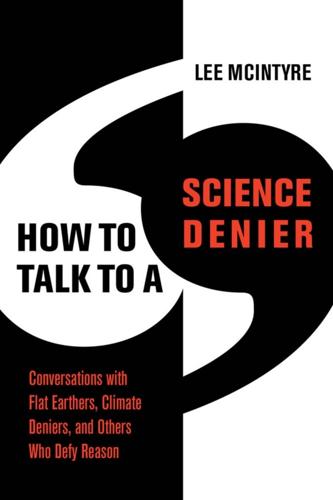
How to Talk to a Science Denier: Conversations With Flat Earthers, Climate Deniers, and Others Who Defy Reason
by
Lee McIntyre
Published 14 Sep 2021
See also Global warming belief conversion and, 75–76, 78–79, 106–115, 118–119 cherry-picking evidence and, 35, 91 China and, 105–106, 115 climate skepticism, 50–51, 92, 129 coal miners and, 106–115 conspiracy theories and, 38–39, 91 corporate influence on, 86–88 COVID-19 and, 116–117, 169–171 disinformation campaigns and, 86, 88–89, 92, 116 economic self-interest and, 86–88, 103–106 illogical reasoning and, 91 insistence that science must be perfect and, 44–45, 92 media campaign and, 216n42 misinformation and, 90–91, 116 NASA and, xv, 75, 83 , 86 overview of, 84–89 Paris Agreement and, 81, 83, 85, 118, 183, 211n3 partisanship and, 49, 87, 118–119, 123, 157 reliance on fake experts and, 91 technique rebuttal strategy, 106–115 Trump and, xv, 38, 83–84 Coal miner conversations, 106–115 Cognitive dissonance, 17, 47, 61, 67, 129, 194n34, 204n4 Confirmation bias, 13, 35, 49, 122, 204n7, 206n27 “Conservative and Liberal Views of Science” (Hamilton), 154–156, 235n15, 236n20 Conspiracy theories belief conversion and, 207n39 cafeteria skepticism and, 38, 44, 50 climate change denial and, 38–39, 91 COVID-19 and, 163–164 disinformation and, 77 Flat Earthers and, 38, 194n31 GMO resistance and, 128–131, 133, 228n34 great fire of Rome and, 37 hidden knowledge and, 39–40 partisanship and, 49 “real” conspiracies vs. false conspiracies, 197n10, 198n11 reliance on fake experts and, 41–42 science denial and, 33, 36–40, 198n20 scientific reasoning and, 37–38, 198n14 skepticism and, 38, 44, 50 use of term, 35, 36–40 warrant concept and, 13 Conspiracy Theory Handbook, The (Lewandowsky and Cook), 78, 199n23, 207n39 Content rebuttal, xii–xiii, xv, 30–31, 68, 71, 73, 174, 181 Conway, Erik, 46, 90, 216n42 Cook, John, 33, 78, 85, 172, 207n39 Corporate influence cigarette companies and, 36, 40, 43, 46, 54, 86, 90, 179, 232n75 on climate change denial, 54, 86–88, 118 Flat Earthers and, 130 GMOs and, 126, 128, 132, 133–134, 143–144, 159, 228n34 Corrective information, 63–67 COVID-19 denial anti-maskers, 167–168, 175–176 anti-vaxxers and, 166–167 belief conversion and, 169–174 cherry-picking evidence and, 163–164 climate change denial and, 116–117, 169–171 conspiracy theories and, 163–164 disinformation campaigns, 116, 165–169, 174 economic self-interest and, 170 face-to-face engagement and, 171 foreign influence and, 168 illogical reasoning and, 165 insistence that science must be perfect and, 165 partisanship and, 165–166, 167–169, 172–173, 174–175, 177 reliance on fake experts and, 164–165 social media and, 168–169 Trump administration and, 164, 165–166 vaccination and, 166–167 Creationism, 44, 54, 121, 122, 224n14 Dark Money (Mayer), 87 Darwin, Charles, 44, 54, 118, 121, 215n34 Davidson, Robbie, 2–3, 24, 196n52 Day After, The (Meyer, dir.), 113 Death of Expertise, The (Nichols), 40–41, 48–49 “Democrats Have a Problem with Science, Too” (Haelle), 161, 224n15 Dhillon, Ranu, 176–177 Diethelm, Pascal, 33 Disinformation anti-vaxxers and, 77 Chinese disinformation campaigns, 116 cigarette companies and, 46, 54 climate change campaigns and, 86, 88–89, 92, 116 conspiracy theories and, 77 COVID-19 denial campaigns and, 116, 165–169, 174 disinformation campaigns, 68–72, 73, 84, 86, 106, 174, 181, 205n20 identity and, 54–55, 71–72 identity-preventive reasoning, 52 liberal science denial, 145 partisanship and, 165–168, 183–185 responding to, 54–55, 71–72, 77–78 Russian propaganda campaigns, 161–162, 165–169 social media and, 77–78, 168–169 use of term, 46 Dobzhansky, Theodosius, 44 Doran, Peter, 85 Doubt, 46, 90, 216n42 Douglas, Heather, 207n35 Dumb and Dumber (Farrelly, dir.), 45 “Earth Is Round, The” (McIntyre), 30 Economic self-interest.
…
I said that so much science denial came from the right (about climate change and evolution) that I wondered whether some could also come from the left. She laughed out loud. “Hell, yes,” she said. “The hippies have been doing that since the 1960s.” We talked a bit about the problem that so many people these days got their beliefs from disinformation campaigns, which led her to say something so profound that I made her repeat it so I could write it down word for word: “We are susceptible to conspiracy theories when we have no reason to trust.” I paused for a moment before asking the obvious question. “So, Linda, do you trust scientists?” “I trust some scientists,” she said.
…
Or—if that doesn’t work—perhaps we might exploit their predilection for conspiracist thought. Imagine a conversation in which you are talking to a COVID-19 denier (which means that the person is already predisposed to believe in conspiracy theories), and you share the fact that Russia and China are engaged in a massive disinformation campaign on social media in support of the idea that the coronavirus is a “hoax” and we need to “liberate” ourselves from lockdown restrictions. This is not a conspiracy theory, it is a real live conspiracy! Might this not appeal to them? I’ve cited some sources earlier in this chapter that you can print out and hand to them.

Climate Change
by
Joseph Romm
Published 3 Dec 2015
We have been headed for a tripling of atmospheric concentrations of carbon dioxide, and the dangerous consequences of doing so are widely understood and accepted by the world’s leading climate scientists and governments. The multidecade disinformation campaign funded by the fossil fuel industry is marked by a rejection of basic science and the constant repetition of flawed arguments that have been long debunked by scientists, even ones who were advising the fossil fuel industry. That disinformation campaign continues today with more money than ever. What are climate science deniers? The scientific community and leading governments of the world have repeatedly reported on the ever-strengthening body of research supporting our understanding of basic climate science.
…
This included funding from Exxon-Mobil and “at least $230,000 from the Charles G. Koch Charitable Foundation.” In books and documentaries such as “Merchants of Doubt: How a Handful of Scientists Obscured the Truth on Issues from Tobacco Smoke to Global Warming,” historians and journalists have shown (1) that this misinformation and disinformation campaign goes all the way back to the tobacco industry’s campaign to cast doubt on claims that cigarette smoking is bad for your health and (2) that in some cases it involves the same exact people.49 In 2009, the New York Times documented that the Global Climate Coalition, an anti-action lobbying group backed by industries that profit from fossil fuels, ignored its own climate scientists during the 1990s while spreading disinformation about global warming.50 An internal report stating that the human causes of global warming “cannot be denied” fell on the deaf ears of Coalition leaders.
…
In July 2015, we learned that oil giant Exxon understood the scientific reality of climate change as far back as 1981, many years before climate change became a political issue that they tried to spread confusion about. Over the years, fossil fuel companies and their executives were documented to have funneled tens of millions of dollars into this disinformation campaign. For a long time, the leading funder was the oil company Exxon-Mobil. However, they have been overtaken by Koch Industries—a company with large fossil fuel interests, run by billionaires Charles and David Koch—which spent more $48.5 million from 1997 to 2010 to fund disinformation. A report concluded that “From 2005 to 2008, Exxon Mobil spent $8.9 million while the Koch Industries-controlled foundations contributed $24.9 million in funding to organizations of the climate denial machine.”

Spies, Lies, and Algorithms: The History and Future of American Intelligence
by
Amy B. Zegart
Published 6 Nov 2021
See also counterterrorism interrogation methods; covert action by CIA; drone strikes by CIA Chambliss, Saxby, 195, 220 Child, Julia, 62 China: and AI, 2, 141; censorship in, 85, 275–76; COVID-19 disinformation campaign, 243, 266; cyberattacks, 4, 261–62; destruction of U.S. spy network in, 166–68; domestic spying by, 83; establishment of Communist government in, 112; and great power competition, 75, 177; intelligence cooperation with Russia, 166; Internet disinformation campaigns, 243; Internet influence campaigns, 266–67; Julia Child in, 62, 62f; monitoring of, 79, 80, 112; Nixon and, 157; and nuclear weapons, 227, 228, 230, 235, 238, 242–43; open-source intelligence on nuclear weapons, 235, 238, 242–43; persecution of Uighurs, 2; and quantum computing, 223; satellites operated by, 250; Silicon Valley views on, 9; spying on U.S., 141, 146–47, 154–55, 165; stealing of U.S. military secrets, 147, 261–62; technological advances of, 2, 3, 4, 141; trade, open-source information on, 6.
…
One expert study called Russia’s information warfare approach a “firehose of falsehood.”114 Russia was the first to embrace cyber weapons of mass deception, but it’s not alone anymore. China’s operations grew more sophisticated during the COVID-19 pandemic, which began in Wuhan in late 2019. Within months, China’s disinformation campaigns to shift blame for the virus had grown so widespread, the European Union called it an “infodemic.”115 At the same time, the U.S. National Counterintelligence and Security Center warned that foreign countries—led by Russia, but now also including China and Iran—were using online disinformation to “sway U.S. voters’ preferences and perspectives, to shift U.S. policies, to increase discord, and to undermine confidence in our democratic process” before the 2020 presidential election.116 Companies are also providing spying-for-hire services that use false identities and wage information warfare, spreading messages with the intent of influencing what people believe, even if the information isn’t true.
…
Hui Zhang, “The Defensive Nature of China’s Underground Great Wall,” Bulletin of the Atomic Scientists, January 16, 2012, https://thebulletin.org/2012/01/the-defensive-nature-of-chinas-underground-great-wall/. 82. Lewis, “Collected Thoughts on Phil Karber.” 83. Zhang, “Defensive Nature of China’s Underground Great Wall.” 84. Sandalow, “Remote Sensing and Foreign Policy.” 85. Zegart and Morell, “Spies, lies, and algorithms.” 86. Mike Isaac, “Facebook Finds New Disinformation Campaigns and Braces for 2020 Torrent,” New York Times, October 21, 2019, https://www.nytimes.com/2019/10/21/technology/facebook-disinformation-russia-iran.html. 87. Jessica Brandt and Torrey Taussig, “The Kremlin’s Disinformation Playbook Goes to Beijing,” Brookings, https://www.brookings.edu/blog/order-from-chaos/2020/05/19/the-kremlins-disinformation-playbook-goes-to-beijing/ (accessed September 26, 2020); Mark Scott, Laura Kayali, and Laurens Cerulus, “Brussels Accuses China of Peddling Disinformation,” Politico, June 10, 2020, https://www.politico.com/news/2020/06/10/brussels-accuses-china-of-peddling-disinformation-311303 (accessed September 26, 2020). 88.

Exponential: How Accelerating Technology Is Leaving Us Behind and What to Do About It
by
Azeem Azhar
Published 6 Sep 2021
Howard, The Global Disinformation Order: 2019 Global Inventory of Organised Social Media Manipulation, Working Paper 3 (Oxford, UK: Project on Computational Propaganda, 2019) <https://comprop.oii.ox.ac.uk/research/posts/the-global-disinformation-order-2019-global-inventory-of-organised-social-media-manipulation/#continue> [accessed 2 January 2021]. 35 Diego Martin et al., Trends in Online Influence Efforts (Empirical Studies of Conflict Project, 2020) <https://esoc.princeton.edu/publications/trends-online-influence-efforts> [accessed 2 January 2021]. 36 Gregory Winger, ‘China’s Disinformation Campaign in the Philippines’, The Diplomat, 6 October 2020 <https://thediplomat.com/2020/10/chinas-disinformation-campaign-in-the-philippines/> [accessed 3 January 2021]. 37 Jack Stubbs and Christopher Bing, ‘Facebook, Twitter Dismantle Global Array of Disinformation Networks’, Reuters, 8 October 2020 <https://www.reuters.com/article/cyber-disinformation-facebook-twitter-idINKBN26T2XF> [accessed 24 March 2021]. 38 Lorenzo Franceschi-Bicchierai, ‘Russian Facebook Trolls Got Two Groups of People to Protest Each Other In Texas’, VICE, 1 November 2017 <https://www.vice.com/en/article/3kvvz3/russian-facebook-trolls-got-people-to-protest-against-each-other-in-texas> [accessed 2 January 2021]. 39 ‘How Covid-19 Is Revealing the Impact of Disinformation on Society’, King’s College London, 25 August 2020 <https://www.kcl.ac.uk/news/how-covid-19-is-revealing-the-impact-of-disinformation-on-society> [accessed 3 January 2021]. 40 ‘Coronavirus: “Murder Threats” to Telecoms Engineers over 5G’, BBC News, 23 April 2020 <https://www.bbc.com/news/newsbeat-52395771> [accessed 2 January 2021]. 41 Wesley R.
…
In 2020, Facebook announced that it had uncovered a Chinese misinformation campaign in the Philippines, which seemed to have been designed to promote pro-China politicians.36 Countries like Thailand, Iran, Saudi Arabia and Cuba have also been accused of creating networks of misinformation.37 When used by states in this manner, misinformation becomes disinformation – that is, information that is actively malicious rather than merely inaccurate. These disinformation campaigns can have a troubling real-world impact. In 2016, Russian internet trolls were able to organise a protest and counter-protest in Houston, Texas. More than 60 people showed up – not the instigators, though, who were sat at their computers thousands of miles away.38 But the consequences can be much more harmful than the odd small protest.
…
In this world, war is cheap – in financial and human terms. Unlike Colonel Raz and his F-16 pilots heading into Iraq, a malicious social media campaign that riles an opponent’s citizens puts no soldiers at risk. And the results can be varied, and disorientating: ranging from nuisance-level misinformation to meticulously planned disinformation campaigns; from cyberattacks against power and water infrastructures to drone-borne explosive attacks. Perhaps all foreshadowing a full-blown war. At the same time, our political order is tending towards instability – it is hard to predict what effect the re-localisation of global society will have on warfare, but it seems unlikely the outcome will be peaceful.
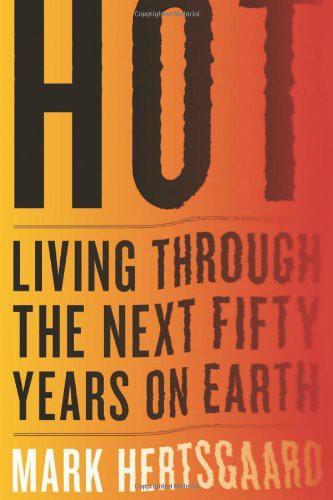
Hot: Living Through the Next Fifty Years on Earth
by
Mark Hertsgaard
Published 15 Jan 2011
Notwithstanding its studiously neutral name, the coalition would spend millions of dollars in the 1990s on a public disinformation campaign whose strategy and tactics recalled the tobacco industry's earlier efforts to persuade people that smoking cigarettes does not cause cancer. Indeed, Seitz and organizations he directed were paid more than $45 million for their work, first by tobacco and later by energy companies, as I'll describe later in this book. The goal of the disinformation campaign was to "reposition global warming as theory rather than fact," according to an internal strategy memo unearthed by journalist Ross Gelbspan, who exposed the campaign in his 1997 book The Heat Is On.
…
Although Ross Gelbspan and other journalists published occasional exposés of the coalition's funding sources and political agenda, the deniers' assertions were generally taken at face value in congressional hearings, news stories, and other public forums and ended up having considerable effect. "The goal of the disinformation campaign wasn't to win the debate," Gelbspan later explained. "The goal was simply to keep the debate going. When the public hears the media report that some scientists believe warming is real but others don't, its reaction is, 'Come back and tell us when you're really sure.' So no political action is taken."
…
U.S. media coverage of global warming had begun to improve in early 2006, when, in the aftermath of Hurricane Katrina and emboldened by the release of Gore's documentary An Inconvenient Truth, many news organizations finally made it clear that an overwhelming majority of scientists believed man-made global warming is real, already under way, and very dangerous. But the improvement turned out to be short-lived. By late 2009, key parts of the media in the United States and internationally had reverted to their long-standing posture of scientific illiteracy and de facto complicity with the deniers' disinformation campaign. As the Copenhagen climate summit began in December 2009, almost every major news organization in the world gave front-page coverage to the deniers' unfounded accusations of widespread fraud on the part of leading climate scientists. Quoting people out of context and cherry-picking data, the deniers accused scientists at the Climate Research Unit of the University of East Anglia in Britain of falsifying results and then lying about it, and of conspiring to suppress dissenting views.

The Wires of War: Technology and the Global Struggle for Power
by
Jacob Helberg
Published 11 Oct 2021
Department of Defense, December 2018, https://media.defense.gov/2019/Jan/14/2002079292/-1/-1/1/EXPANDING-GLOBAL-ACCESS-REPORT-FINAL.PDF. 149 Neil MacFarquhar, “Playing on Kansas City Radio: Russian Propaganda,” New York Times, February 13, 2020, https://www.nytimes.com/2020/02/13/us/russian-propaganda-radio.html. 150 Renee DiResta, Carly Miller, Vanessa Molter, John Pomfret, and Glenn Tiffert, “Telling China’s Story: The Chinese Communist Party’s Campaign to Shape Global Narratives,” 2020, https://fsi-live.s3.us-west-1.amazonaws.com/s3fs-public/sio-china_story_white_paper-final.pdf. 151 DiResta, Miller, Molter, Pomfret, and Tiffert, “Telling China’s Story: The Chinese Communist Party’s Campaign to Shape Global Narratives.” 152 Craig Silverman and Jane Lytvynenko, “Reddit Has Become a Battleground of Alleged Chinese Trolls,” BuzzFeed News, March 14, 2019, https://www.buzzfeednews.com/article/craigsilverman/reddit-coordinated-chinese-propaganda-trolls. 153 Kate Conger, “Twitter Removes Chinese Disinformation Campaign,” New York Times, June 11, 2020, https://www.nytimes.com/2020/06/11/technology/twitter-chinese-misinformation.html?action=click&module=Alert&pgtype=Homepage. 154 Conger, “Twitter Removes Chinese Disinformation Campaign.” 155 Jeff Horwitz, “ ‘Live’ Facebook Protest Videos Drew Millions of Views, but Some Footage Was Years Old,” Wall Street Journal, June 2, 2020, https://www.wsj.com/articles/live-facebook-protest-videos-drew-millions-of-views-but-some-footage-was-years-old-11591118628. 156 DiResta, Miller, Molter, Pomfret, and Tiffert, “Telling China’s Story: The Chinese Communist Party’s Campaign to Shape Global Narratives.” 157 Tereza Dvorakova, “HispanTV: Iran’s Attempts to Influence the Spanish Speaking World,” Radio Farda, April 19, 2020, https://en.radiofarda.com/a/hispantv-iran-s-attempts-to-influence-the-spanish-speaking-world-/30564208.html. 158 Carly Nyst and Nick Monaco, “State-Sponsored Trolling,” 2018, http://www.iftf.org/fileadmin/user_upload/images/DigIntel/IFTF_State_sponsored_trolling_report.pdf. 159 Ibid. 160 Ibid. 161 Ibid. 162 “Chinese and Russian Foreign Ministry Spokespersons Held Consultations and Agreed to Cooperate in Combating Disinformation,” Ministry of Foreign Affairs of the People’s Republic of China, https://www.fmprc.gov.cn/mfa_eng/wjbxw/t1800619.shtml. 163 Joel Schectman, Raphael Satter, Christopher Bing, and Joseph Menn, “Exclusive: Microsoft believes Russians that hacked Clinton targeted Biden campaign firm—sources,” Reuters, September 10, 2020, https://www.reuters.com/article/us-usa-election-cyber-biden-exclusive-idUSKBN2610I4. 164 Sean Lyngaas, “Industry alert pins state, local government hacking on suspected Russian group,” CyberScoop, October 19, 2020, https://www.cyberscoop.com/russia-temp-isotope-election-security-mandiant/. 165 David Corn, “Giuliani and the New York Post Are Pushing Russian Disinformation.
…
During the 1984 election, KGB agents tried to prevent Reagan’s reelection.58 Notoriously, the Soviet Operation Denver propagated the lie that the U.S. government had cooked up the AIDS virus at Maryland’s Fort Detrick59 (an eerie forerunner to China’s more recent claim that the Pentagon had created COVID at the same installation).60 By 1985, CIA analysts conservatively estimated that the USSR was spending $3 to $4 billion a year on active measures around the globe,61 culminating in an estimated 10,000 disinformation operations throughout the Cold War.62 Soviet disinformation campaigns were often effective, but there were limits. The former FBI agent and national security analyst Clint Watts notes, “Soviet propaganda outlets took many years or even decades to grow their audiences,” costing time and money Moscow didn’t have. “Active measures could and would work,” Watts says.
…
It boasts a graphics department, a data analytics division, a search engine optimization section—even an IT desk for tech support.27 At 41,000 rubles a month (roughly $775), the salaries were initially equivalent to what a tenured Russian university professor would earn.28 Still, workers have been particularly aggrieved that they have to bring lunch from home; it turns out that Putin’s chef doesn’t provide his employees a cafeteria.29 The philosophy behind Russia’s aggressive disinformation campaign is embodied in an unlikely source. In an interview with the New York Times, Dmitry Peskov, one of Putin’s closest advisors, singled out “this girl, from show business, Kim Kardashian.” Now with more than 215 million followers on Instagram and nearly 70 million followers on Twitter, Kardashian epitomized to Peskov the power of social media.

Aftershocks: Pandemic Politics and the End of the Old International Order
by
Colin Kahl
and
Thomas Wright
Published 23 Aug 2021
For the Chinese Communist Party (CCP), this was the second global crisis in the span of a dozen years (along with the global financial crisis) that allowed it to gain on the United States. Overseas, China flexed its muscles almost as soon as the virus took root in Wuhan. Beijing waged a massive disinformation campaign against the West, alleging that the virus had come to China from the United States and casting doubt on American-made vaccines. Beijing capitalized on the pandemic to crush the protest movement in Hong Kong, effectively dissolving the “one country, two systems” model that had provided Hong Kongers with autonomy and freedom since the end of British rule in 1997.
…
Most people around the world do not pay all that much attention to geopolitics, but in this case their lives were upended because of something that happened in China. Governments across the globe knew that they could not trust the information coming out of Beijing—now or in the future. SOWING DISINFORMATION China supplemented its so-called mask diplomacy with a massive global disinformation campaign. The centerpiece of this effort was to raise doubts about the virus’s origins. On February 27, Zhong Nanshan, a Chinese infectious disease expert, told a press conference, “The infection was first spotted in China but the virus may not have originated in China.”75 On March 8, China’s ambassador to South Africa tweeted: Although the epidemic first broke out in China, it did not necessarily mean that the virus is originated from China, let alone “made in China.”76 Foreign Ministry spokesperson Zhao Lijian, a particularly brash and assertive Chinese diplomat, tweeted out to his 300,000 followers on March 12: CDC was caught on the spot.
…
American intelligence agencies believe that in mid-March 2020, China actively pushed out false text messages telling Americans that a friend of a friend or a relative had confided that the federal government was about to shut down the entire country once they had the military ready to enforce it.84 This prompted a National Security Council tweet in response: “Text message rumors of a national #quarantine are FAKE. There is no national lockdown.”85 Trump, however, seemed unconcerned. When asked on Fox News about China’s disinformation campaign, he said, “They do it and we do it and we call them different things. Every country does it.”86 Laura Rosenberger, who was then leading the Alliance for Securing Democracy Project at the German Marshall Fund, described the disinformation strategy’s goals: “to deflect blame from Beijing’s own failings and to highlight other governments’ missteps, portraying China as both the model and the partner of first resort for other countries.”

This Is How They Tell Me the World Ends: The Cyberweapons Arms Race
by
Nicole Perlroth
Published 9 Feb 2021
In the years following its implementation, researchers found that Japanese devices were better protected than other countries with similar GDPs. We will never build resilience to cyberattacks—or foreign disinformation campaigns, for that matter—without good policy and nationwide awareness of cyber threats. We should make cybersecurity and media literacy a core part of American curriculum. Too many cyberattacks rely on vulnerable American systems, running on software that is not up-to-date or which has not been patched. This is, in large part, an education problem. The same goes for information warfare. Americans are being coopted by disinformation campaigns and conspiracy theories because Americans lack the tools to spot influence operations, foreign and domestic, in real time.
…
Ukraine had become their digital test kitchen, a smoldering hellscape where they could test out every hacking trick and tool in Russia’s digital arsenal without fear of reprisal. In the first year, 2014, alone, Russian state media and trolls barraged Ukraine’s presidential election with a disinformation campaign that alternately blamed the country’s mass pro-Western uprisings on an illegal coup, a military “junta,” or “deep states” in America and Europe. Hackers stole campaign emails, prowled for voter data, infiltrated Ukraine’s election authority, deleted files, and implanted malware in the country’s election reporting system that would have claimed victory for a far-right fringe candidate.
…
They were stealing a page from their old Cold War playbooks, and as my taxi made its way from Boryspil to Kyiv’s center, Independence Square, the bleeding heart of Ukraine’s revolution, I wondered which page they might read from next, and if we’d ever get to a place where we might anticipate it. The crux of Putin’s foreign policy was to undercut the West’s grip on global affairs. With every hack and disinformation campaign, Putin’s digital army sought to tie Russia’s opponents up in their own politics and distract them from Putin’s real agenda: fracturing support for Western democracy and, ultimately, NATO—the North Atlantic Treaty Organization—the only thing holding Putin in check. The more disillusioned Ukrainians became—where were their Western protectors, after all?
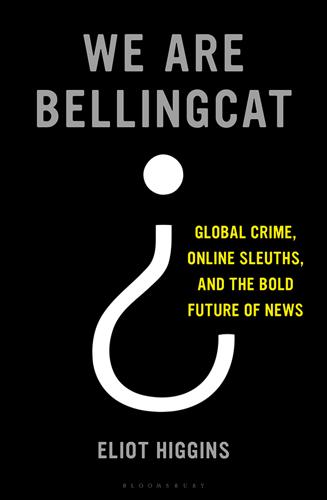
We Are Bellingcat: Global Crime, Online Sleuths, and the Bold Future of News
by
Eliot Higgins
Published 2 Mar 2021
THE COUNTERFACTUAL COMMUNITY Little illustrates how disturbing the Information Wars had become than attempts to portray volunteer rescuers in the Syrian civil war – people who risked their lives to dig innocent victims from the rubble – as murderers, even traffickers in human organs. Accusations against the Syria Civil Defence, better known as the White Helmets, sounded absurd. But scrutiny showed that something sinister was afoot: a leaderless disinformation campaign, with claims leaping from conspiracy theorists to state propagandists to alternative-media outlets and back – an ecosystem I call the Counterfactual Community. The White Helmets, operating in rebel-held areas where Syrian government services no longer existed, numbered a few thousand volunteers, about 250 of whom died on duty.10 What made them targets for supporters of Damascus and Moscow were their helmet cams and a practice of uploading clips to social media when attacks harmed civilians: they were documenting war crimes.
…
Imagine a moderator jumping into the middle of an online argument, which could be on any subject. Is hexamine a marker of sarin gas produced by the Assad regime? What about the treatment of members of Falun Gong imprisoned in China? Is France illegally supplying arms used in Saudi airstrikes in Yemen? What a moderator must evaluate could be part of a disinformation campaign or part of a genuine public debate. It could be a genuine debate based on disinformation. The depth of this problem feeds into internet miserabilism, the dread that our tech future is an unfixable mess. At Bellingcat, we recognise that fact-based information will not always prevail. Yet our efforts are making a difference.
…
To become paranoid about deepfakes would itself have disastrous consequences, leading people to judge all documentation cynically. What quicker way to discredit a conclusive open-source investigation than to claim that nothing is to be believed? I am certain this tactic will soon become routine in disinformation campaigns. I already see tweets dismissing videos from Syria, saying, But how do you know this isn’t a deepfake? The uninformed give this technology powers beyond its current capabilities. A leading expert on synthetic media and its possible misuse, Sam Gregory of the human-rights organisation WITNESS, contends that we still have the chance to do better against this threat than we did in society’s recent online collision with disinformation.
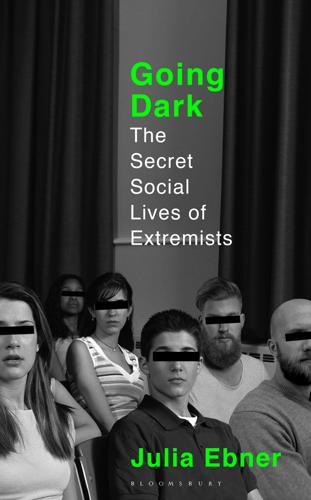
Going Dark: The Secret Social Lives of Extremists
by
Julia Ebner
Published 20 Feb 2020
Disinformation doesn’t necessarily mean outright lying; it can also include information that is misleading.29 Inaccurate information, severe biases and logical fallacies often reinforce misleading narratives. In the tradition of the Soviet strategic-deception technique of dezinformatsiya, modern-day disinformation campaigns seek to obfuscate, distort or conceal facts.30 The founding counter-intelligence chief of the CIA, James Jesus Angleton, claimed that their goal is to create an information landscape ‘where fact and illusion merge, a kind of wilderness of mirrors’.31 In October 2018, I enter a plain white house in Riga, Latvia that looks like a detached family home.
…
Many of today’s far-right operations are, however, amplified by state-backed bots and media networks. For example, the Russian news outlets Sputnik and Russia Today (RT) frequently help far-right campaigners to spread their messages by amplifying their themes and hashtags.34 Some accounts pushing disinformation campaigns operate like cyborgs – semi-automated, human-operated accounts. For example, a Twitter account that operates under the handle @thebradfordfile tweets over 300 times per day, has a network of more than 100,000 followers and a core group of hundreds of amplifiers. Its messages, which reach from far-right propaganda to conspiracy theories, have been retweeted by Donald Trump and quoted by major US media outlets to illustrate the alt-right’s social media successes.35 There are too many elections for the few people at the DFR Lab to monitor.
…
The thought of extremists using its infrastructure to brainwash users, spread dehumanising ideas and call for violence seems surreal. But, increasingly, tech giants like Facebook have begun to realise that their platforms have been systematically used to hack people’s minds. Facebook failed to protect its users from personal data breaches and targeted manipulation, Twitter ignored the disinformation campaigns launched by fake profiles and bot nets on its platform and YouTube was reluctant to combat extremist and violence-inciting content. The Cambridge Analytica scandal and social-media-inspired terrorist attacks were among the many virtual earthquakes that have shaken the democratic pillars of the real world.

The Coming Wave: Technology, Power, and the Twenty-First Century's Greatest Dilemma
by
Mustafa Suleyman
Published 4 Sep 2023
A legal AI might be able to parse this against multiple legal systems, figure out every possible infraction, and then hit that company with multiple crippling lawsuits around the world at the same time. AIs could develop automated trading strategies designed to destroy competitors’ positions or create disinformation campaigns (more on this in the next section) engineering a run on a bank or a product boycott, enabling a competitor to swoop in and buy the company—or simply watch it collapse. AI adept at exploiting not just financial, legal, or communications systems but also human psychology, our weaknesses and biases, is on the way.
…
Eventually entire and rich synthetic histories of seemingly real-world events will be easy to generate. Individual citizens won’t have time or the tools to verify a fraction of the content coming their way. Fakes will easily pass sophisticated checks, let alone a two-second smell test. STATE-SPONSORED INFO ASSAULTS In the 1980s, the Soviet Union funded disinformation campaigns suggesting that the AIDS virus was the result of a U.S. bioweapons program. Years later, some communities were still dealing with the mistrust and fallout. The campaigns, meanwhile, have not stopped. According to Facebook, Russian agents created no fewer than eighty thousand pieces of organic content that reached 126 million Americans on their platforms during the 2016 election.
…
According to Facebook, Russian agents created no fewer than eighty thousand pieces of organic content that reached 126 million Americans on their platforms during the 2016 election. AI-enhanced digital tools will exacerbate information operations like these, meddling in elections, exploiting social divisions, and creating elaborate astroturfing campaigns to sow chaos. Unfortunately, it’s far from just Russia. More than seventy countries have been found running disinformation campaigns. China is quickly catching up with Russia; others from Turkey to Iran are developing their skills. (The CIA, too, is no stranger to info ops.) Early in the COVID-19 pandemic a blizzard of disinformation had deadly consequences. A Carnegie Mellon study analyzed more than 200 million tweets discussing COVID-19 at the height of the first lockdown.
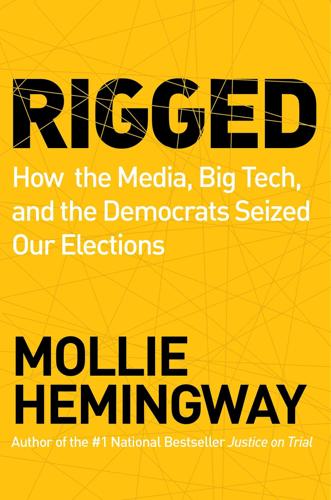
Rigged: How the Media, Big Tech, and the Democrats Seized Our Elections
by
Mollie Hemingway
Published 11 Oct 2021
Less than forty-eight hours after the release of the Veritas video, the New York Times’s coverage of the report began with this sentence: “A deceptive video released on Sunday by the conservative activist James O’Keefe, which claimed through unidentified sources and with no verifiable evidence that Representative Ilhan Omar’s campaign had collected ballots illegally, was probably part of a coordinated disinformation effort, according to researchers at Stanford University.”60 The headline was even more declarative: “Project Veritas Video Was a ‘Coordinated Disinformation Campaign,’ Researchers Say.”61 The article offered no proof that Project Veritas’s report was a “disinformation campaign.”62 The Times’s entire report was premised on speculation. Since Project Veritas’s report came out soon after a big New York Times report on President Trump’s leaked tax returns, the Times hubristically assumed the voter fraud report was released for the sole purpose of stealing the limelight from its own reporting.
…
Throw in the fact that the Russians bought a few hundred thousand dollars’ worth of election ads on Facebook, and all of a sudden social media was to blame for the election of Donald Trump to the nation’s highest office. For Trump’s entire presidency, the hysteria never died down. In March 2020, The Atlantic’s McKay Coppins published an eight-thousand-word deep dive into the president’s 2020 digital campaign operation titled “The Billion-Dollar Disinformation Campaign to Reelect the President.”19 The tone of Coppins’s article was alarmist—and lots of liberal voters agreed with it. Among them was former president Obama. Obama, who felt no compunction about urging Americans to interrogate their neighbors about their political views and record their responses on his campaign’s app, tweeted out a link to Coppins’s article accompanied by a typically grandiose and hypocritical judgment of the Trump campaign: “Even if the methods are new, sowing the seeds of doubt, division, and discord to turn Americans against each other is an old trick.”20 * * * If there were any technological “tricks” in the Trump years, it was abundantly obvious that they were being pulled on the president and his voters.
…
That same day, the New York Times also reported, “Trump Said to Be Warned That Giuliani Was Conveying Russian Disinformation,” and, further, that Trump had “shrugged off” the warning about his aide who was involved in bringing the laptop story to light.79 These reports were naturally buttressed by more outspoken members of the “intelligence community.”80 The default media explanation for the laptop became—yet again—a Vladimir Putin–backed conspiracy, where the laptop was invented as part of a Russian disinformation campaign to meddle in American elections. By contrast, the notion that erratic Hunter Biden, who once left his drugs and crack pipe in a rental car, had forgotten to pick up his laptop at a computer repair shop a short distance from his house was deemed too far-fetched. The managing editor of taxpayer-funded NPR declared it a “waste of time” to report on the Hunter Biden allegations.81 Vice tried to tell readers “why almost none of this actually matters and you should go outside and stare into the sun” rather than read the New York Post’s story on Biden.82 The Atlantic’s Anne Applebaum assured us, “Those who live outside the Fox News bubble and intend to remain there do not, of course, need to learn any of this stuff [about Hunter Biden].”83 David Frum, Applebaum’s colleague at The Atlantic, went even further.

Four Battlegrounds
by
Paul Scharre
Published 18 Jan 2023
Emboldened by the crisis, Chinese diplomats stepped up their coercive diplomacy to pressure countries to play by China’s rules. Chinese medical supplies were frequently accompanied by requests that receiving governments praise China. Chinese officials convinced European Union lawmakers to tone down a report whose early drafts criticized China’s “global disinformation campaign.” When Australia called for an independent inquiry into the origins of the virus, China responded by restricting imports of Australian products into China. When Venezuelan officials referred to the “Chinese coronavirus,” the Chinese embassy launched an angry Twitter thread concluding with the demand that China’s critics “put on a mask and shut up.”
…
U.S. senators warned that Russia’s “information warfare campaign” was designed to “sow fear, discord, and paralysis that undermines democratic institutions and weakens critical Western alliances” and was “a threat to the foundations of American democracy.” The United States spends over $700 billion annually on defense, but information warfare threatened to go around America’s military and directly attack the nervous system of American democracy, the free and open exchange of ideas. In practice, the effects of disinformation campaigns were hard to measure and hotly debated, but even the perception of foreign influence in an election could—and did—polarize, divide, and paralyze the U.S. political system. Even worse, U.S. national security experts worried that Russian disinformation in the 2016 election was only a prelude of more to come.
…
Instead of cybercriminals faking a CEO’s voice to defraud a company, a malicious actor could release a fake video or audio clip of a politician doing or saying something that might sway an election, or worse, authorize a bad policy or military attack. Deepfakes did not feature heavily in the 2020 U.S. presidential election, but security researchers worry it won’t be long before they’re used in disinformation campaigns online, throwing gasoline on the already raging dumpster fire that is false information on social media. Manipulated media has already become a flashpoint in U.S. politics, with crudely manipulated videos of House Speaker Nancy Pelosi or White House press correspondent Jim Acosta making the rounds on social media.

Operation Chaos: The Vietnam Deserters Who Fought the CIA, the Brainwashers, and Themselves
by
Matthew Sweet
Published 13 Feb 2018
Under Operation Edgar Allan Poe, the two Bills produced a theory attuned to their own paranoia and narcissism: that the Soviets were behind Palme’s killing and were now working hard to achieve their second objective: “laying the blame at the doorstep of the ELP [European Labor Party], as a first step in dismantling the LaRouche movement globally.” LaRouche liked this theory, because it was all about him. Their hefty report, A Classical KGB Disinformation Campaign, proved nothing about the assassination, but contained much evidence that the LaRouchians inhabited a Ptolemaic universe with themselves as its center. Legitimate press interest in the European Labor Party was “a coordinated wave of lies and innuendo” unleashed from Moscow. Journalists who described the party’s gruesome methods were subject to personal attacks.
…
In 1985 he had taken on the running of the Labor Committees Biological Holocaust Task Force, in which capacity he advocated putting AIDS patients into quarantine camps and insisted, against scientific evidence, that the disease could be spread by insect bites and casual human contact. (He made a panic-mongering tour of Europe, recycling stories about the synthetic nature of the virus, a theory born in a disinformation campaign by the KGB.) His most operatic act of fealty occurred in September 1990, when delegates from the Labor Committees took over the Hyatt Regency Hotel in Arlington, Virginia, to listen to a speech recorded by LaRouche in his cell. During this period the organization decided, under the influence of LaRouche’s wife Helga, to make overtures toward right-wing Catholic organizations.
…
a four-page exposé on the organization: David Gelman, “Lyndon LaRouche: Beyond the Fringe,” Newsweek, April 7, 1986. “a form of terrorism”: Rogan Kersh, “A Mockery of U.S. Politics,” Old Gold and Black, April 4, 1986. “laying the blame at the doorstep of the ELP”: William Engdahl, Göran Haglund, and William Jones, A Classical KGB Disinformation Campaign: Who Killed Olof Palme? (Wiesbaden, West Germany: EIR Research, 1986), p. 8. “a coordinated wave of lies and innuendo”: Ibid., p. 59. “the public activities of the ELP”: Ibid., p. 32. a federal investigation in Boston: David Gelman, “Lyndon LaRouche: Beyond the Fringe,” Newsweek, April 7, 1986; John Mintz, “The Lash of LaRouche,” Washington Post, April 7, 1986; “Washington Report Traces LaRouche Money to Leesburg,” Loudoun (VA) Times-Mirror, July 3, 1986.

System Error: Where Big Tech Went Wrong and How We Can Reboot
by
Rob Reich
,
Mehran Sahami
and
Jeremy M. Weinstein
Published 6 Sep 2021
If you want to improve something, you have to be able to measure it.” He went on to suggest that Twitter would try to take on that challenge. But his message came two years after Russian operatives had flooded the platform with disinformation during the 2016 US presidential election, paving the way for domestic disinformation campaigns in 2020. In one of our classroom conversations at Stanford, Nicole Wong, who had served as vice president and deputy general counsel at Google before joining Twitter as legal director of products and eventually being appointed deputy chief technology officer of the United States in the Obama administration, discussed the emphasis on user engagement in online platforms such as YouTube.
…
An investigation by ProPublica in 2020 found that although Facebook has policies that oppose voter suppression, misinformation that might suppress voting flourishes on its platform, with posts concerning fraud via mail-in ballots and conspiracy theories about stolen elections gaining wide traction. Yet one person’s disinformation campaign is another person’s attack ad, and nowhere is free speech more sacred than in the political realm. The upshot is that we now face a trilemma, a tension among three important values. The first is the value of free expression, the individual right to speak and be heard without censorship, which brings with it the benefits of a broad and diverse marketplace of ideas.
…
Yet in the digital age a strong commitment to free speech puts a second value—democracy itself—at risk. The decision by tech companies to permit nearly unconstrained user-generated content in the name of freedom of expression has yielded interference in elections in many democratic societies by hostile foreigners and standing misinformation and disinformation campaigns on issues of all stripes. Should the political posts in the 2016 US election by Macedonian teenagers and Russia’s Internet Research Agency be protected by free speech norms? Should it matter if the identical material is circulated by US citizens rather than foreign agents? Should the speech of elected leaders or candidates for public office be treated differently than the speech of ordinary citizens?

After the Fall: Being American in the World We've Made
by
Ben Rhodes
Published 1 Jun 2021
The corruption that Szabolcs described functions like a disease within the globalization that America spread, rapidly outpacing the capacity of national regulators or law enforcement to treat it. Ill-gotten wealth can easily be laundered into undeclared shell companies, or invested in things like real estate—the developers who remake an old Budapest neighborhood, or put up glass towers in New York. It can also be used to mount disinformation campaigns against your opponents, or to hire private espionage companies to discredit them. This is the cold reality of how power and wealth interact; if there is a governing ideology in the world today, it is this crude transactionalism. Unless he is able to do away with the veneer of democracy entirely, Orban will have to face voters in 2022.
…
It was hard not to think of Fox News in the United States with their relentless campaigns against Hillary Clinton and Barack Obama over private email servers and golf games, amplified online by Russian bots. “It was the first time when propaganda worked out very well,” Zhanna said. Of course I thought this was an overstatement; propaganda has been around as long as politics. But perhaps it was the start of something: the brute force of a new kind of Russian disinformation campaign, intent on destroying anyone who posed a danger to the new, corrupt order of things. * * * — The 1990s were a chaotic time for Russians. The oppressive veil of Soviet totalitarianism was lifted. But the transition to what would come next was turbulent. The privatization of the state’s assets—the nation’s industry and natural resources—resembled a rigged fire sale.
…
The more you look, the more you see how the last thirty years of American hegemony has designed, wittingly or unwittingly, a system that others could easily manipulate—from big banks that are bailed out, to Putin and his cronies moving vast sums of oil money around an infrastructure of shell companies, real estate interests, and opaque corporations facilitated by a poorly regulated global economy, to the service industry that profits by running interference for the wealthy and powerful, be it disinformation campaigns, private espionage, or the occasional act of violence. Seeing all that, you can either decide, rationally, to dive into the system—as I had done in 2008—and accept its structural flaws while trying to make some discernible impact on it; or you can step outside it and give voice to your rage at the injustice of it all.
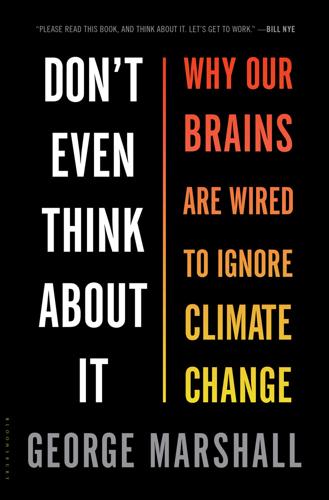
Don't Even Think About It: Why Our Brains Are Wired to Ignore Climate Change
by
George Marshall
Published 18 Aug 2014
When I invited him to find a metaphor for this struggle, he settled, without any hesitation, on The Lord of the Rings. “It’s a classic tale of the struggle between good and evil, but the stakes are the earth itself. The CEOs of fossil fuel companies who fund a disinformation campaign to confuse the public are the forces of Mordor. The scientists are Gandalf.” I would add that, with his goatee beard and twinkling eyes, Mann could also find a place in that battle—a climatological faun, maybe. This disinformation campaign, often referred to as the “denial machine,” contains a wide network of think tanks such as CEI, media outlets, and politicians. But of late, campaigners have consistently set their sights on its most prominent and nefarious funders: David and Charles Koch, sibling inheritors of the second largest privately owned company in the United States.
…
This argument is often called the information-deficit model, because it sees people, in the words of Ward, as “empty vessels who will respond appropriately once informed of the facts.” In recent years, with the continued lack of political or social action, scientists have become even more convinced that the problem lies with the distortion of this information by what they call “disinformation campaigns.” This, they believe, is best countered with more information. Announcing a new report by the Potsdam Institute for Climate Impact Research, the research team leader declared his confidence that his data would “put to rest a misconception popular in some quarters, that global warming has slowed down.”
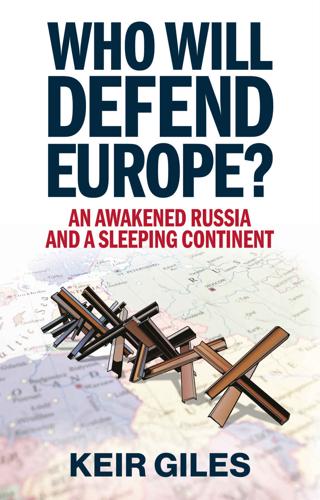
Who Will Defend Europe?: An Awakened Russia and a Sleeping Continent
by
Keir Giles
Published 24 Oct 2024
In each case I found that they referred to decisions taken before Trump’s arrival in power but implemented during his tenure, or initiatives taken by branches of the US government that he criticised or actively opposed once he discovered them. By contrast, the list of Trump’s actions that favour Russia is long.42 Trump worked hard to undermine the US role in securing Europe. Actions like building a border wall, or mounting a disinformation campaign against Joe Biden’s son Hunter, seemed diverse and discrete but all had one thing in common: they all served to block defensive measures against Russia. Funding for the wall came from sources including diverting funds earmarked for bolstering the defence of eastern Europe. And Trump successfully blocked defensive aid to Ukraine by linking it to a demand to cooperate in the campaign against Hunter Biden, based on disinformation that originated with an agent of Russian intelligence.43 More direct assistance to Russia included passing classified information straight to its representatives – an action which in many other countries would alone have been sufficient to disqualify someone from ever standing for office again.
…
The year 2023 saw the steady rolling back of many of the institutional protections the US had put in place against foreign malign influence and disinformation, after its damaging potential became clear during the 2016 presidential election and beyond. Given how much Trump has benefited from Russian disinformation campaigns, dismantling the US’s defences against Russian information warfare is a perfectly logical step even if he is not doing so under direction from Moscow.45 In fact, during Trump’s presidency, the only reason greater damage was not done was the resilience of checks and balances within the US system of government.
…
“Russia – Future Directions”, Advanced Research and Assessment Group, Defence Academy of the United Kingdom, 1 October 2008, https://oajonsson.com/wp-content/uploads/2014/03/20081001-russia_future_directions.pdf INDEX 9/11 attacks, 174 A2AD (“anti-access and area denial”), 161 AASM air-launched missiles, 144 active protective systems (APS), 100 Afghanistan, 36, 65, 130 air-launched cruise missiles (ALCMs), 136 Åland archipelago, 164 Apache attack helicopters, 198 Arcadia conference, 206 Arkin, William, 79 Armed Forces Support Fund, 198 Army Catering Corps, 177 Army Tactical Missile System (ATACMS), 72 Ash, Timothy, 51–2 Avdiivka, 69 Axis powers, 206–7 Baerbock, Annalena, 140 Baltic states, 21, 22, 23, 26, 42, 54, 81, 119–20, 182–3 Northern Europe and military preparations, 186–91 Barrons, Richard, 109 Belarus, 25, 183 Belgium, 49, 133–4, 140 Biden administration, 71–7, 78, 79–80 Biden, Hunter, 65 Biden, Joe, 33, 42, 59, 63–4, 74, 76, 79–80 State of the Union Address (Mar 2024), 80–1 Billingslea, Marshall, 64 Black Sea Fleet, 17, 39 Black Sea, 17, 42, 106, 158 Boeing aircraft, 157 Bolsheviks, 25 Bolton, John, 62 Borrell, Josep, 130 Bremerhaven, 178 Breton, Thierry, 130–1 Breuer, Carsten, 22 Brexit referendum (2016), 58–9 Brussels, 4, 38 Bucha, 36, 46, 145 Budapest Memorandum (1994), 49 Bundeswehr, 144 Cameron, David, 70, 125 Canada, 123, 147–9, 187 Capita, 98 Carter, Nick, 96 Casablanca Conference (1943), 206 Cavoli, General Christopher G., 14 “Chatham House Rule”, 3–4 Chechnya, 36 China, 5, 18, 21, 44, 45, 55, 56–7, 68, 82, 142, 206–7, 210–11 Colby, Elbridge, 61–2 Cold War, 47, 53 “Continuous At Sea Deterrent” (CASD), 102, 104 Covid pandemic, 7, 86–7 Crimea, seizure of (2014), 23 Crocus City Hall terrorist attack (Mar 2024), 20 “cyber defence”, 176 Cyprus, 160 Czechia, 184–6 Czechoslovakia, 5 Defence Cooperation Agreements (DCA), 195 Defence Intelligence (UK), 14–15 demographic transformation, 7–8 Denmark, 123–4, 128, 184 Diamond, HMS, 103, 134 Donbas, 114 Donetsk, 48 Dublin, 148 Duda, Andrzej, 199 “East Shield”, 199 EDF enlargement, 188 Enhanced Forward Presence (eFP), 23, 183 Esper, Mark, 58 Estonia, 53, 85, 101, 128, 139, 156, 162, 185, 188 Northern Europe and military preparations, 186–91 Estonian Defence Force, 22, 187–8 Estonian Defence League, 188 Eswatini, 163 EU Council, 38–9 European Defence Industrial Strategy (EDIS), 131 European Defence Industry Programme (EDIP), 131 European trade, 55 European Union (EU), 54, 83, 125, 185 EU funds, 193 Exercise Trifecta, 127 “extended deterrence”, 107 Falkland Islands, 101 Fico, Robert, 38 Finland, 5, 26, 128, 133, 136, 166, 181–2 National Defence Courses, 168–70 Finnish Defence Forces (FDF), 167 Flightradar 24, 158 Flynn, Michael, 62–3 France, 22, 39, 49, 73, 121, 133, 143–7, 186 armed forces, 6 nuclear weapons, 197 parliamentary elections (2024), 9 Frederiksen, Mette, 184 front-line states, 2–3, 50, 81, 114 Gaza, 76 GBAD [ground-based air defence] systems, 96 Georgia, 31, 212 Germany, 5, 48, 59, 65, 86, 121, 123, 133, 135, 139, 143, 186 civil defence, 178 support agreements, 49 Girkin, Igor, 20 Gotland, 163 Grafenwöhr, 156 Greene, Marjorie Taylor, 78 “grey zone warfare”, 154 GUR military intelligence, 158 Healey, John, 89–90, 91 Heappey, James, 92 Heidelberg, 155 Heiskanen, Mikko, 167 Helsinki, 166 Herem, Martin, 188 Hessen, 134 HIMARS artillery systems, 16, 72, 188 Hitler, Adolf, 5 Hodges, Ben, 139, 206 Home Guard, 172 Homeland Defence Act [Poland], 197 House of Commons Defence Committee, 90, 111 Houthi movement, 57, 68 Howitzers, Caesar, 144 Huawei, 142 Hungary, 38–9, 42 Hunt, Jeremy, 89 “hybrid threats”, 154 Iceland, 128, 149 IMT Defence, 157 India, 18, 55 Indian Ocean, 57 Ingersoll, 157 International Monetary Fund, 71 Iran, 5, 19, 22, 29, 31, 44, 56, 206, 210–11 drone attacks on Israel (Apr 2024), 76 Ireland, 148–9 Irpin, 36 Israel, 101, 160, 206 Hamas attack (Oct 2023), 76 Iranian drone attacks (Apr 2024), 76 Italy, 123 Poland and crash rearmament, 196–203 Iver Huitfeldt, HDMS, 134–5 Japan, 5, 44–5, 49, 55, 67, 83 Javelin anti-armour missiles, 85 JDAM bombs, 191–2 “JEF Response Options” (JROs), 128–9 Johnson, Boris, 86–7, 144 Johnson, Mike, 69 Joint Air-to-Surface Standoff Missile (JASSM), 131, 191–2, 199 Joint Air-to-Surface Standoff Missile-Extended Range (JASSM-ER), 136 “Joint Expeditionary Force” (JEF), 128–9, 194 JSOW glide bombs, 191–2 Kaitseliit, 188 Kaliningrad, 140 Kallas, Kaja, 42, 125, 150–1, 183–4 Karelia Brigade, 25, 195 Karta nashey Rodiny (“Map of Our Motherland”), 24–5 Kasapoğlu, Can, 16 Kauffmann, Sylvie, 149 Kharkiv, 73, 74–5 Kupka, Martin, 162 Kuusk, Kaimo, 179, 184 Kyrgyzstan, 19 Landsbergis, Gabrielius, 184 Latvia, 128, 156, 162, 172 Northern Europe and military preparations, 186–91 Le Monde, 149 Lecornu, Sébastien, 22 Leyen, Ursula von der, 59, 125 “liminal operations”, 154 Lindley-French, Julian, 93 Lithuania, 50–1, 113, 128, 143–4, 155, 162 “little green men”, 172 Loch Striven Oil Fuel Depot, 164 Louise-Marie, 134 Lucas, Edward, 80 Luhansk, 48 Lute, Douglas, 79 Maanpuolustuskoulutusyhdistys (MPK), 192 Macron, Emmanuel, 9, 124–5, 140, 144–6 “Mad Max warfighting tech”, 16 Mais, Alfons, 141 map, of Russia, 24–5 Mariupol, 50 Martlet missiles, 86 Matisek, Jahara, 16 McMaster, H.R., 43 Middle East, 43, 56, 68 Ministry of Defence (MOD), 86, 89, 90, 91–5, 96, 105, 109–10, 116, 176–7 transparency, lack of, 93–4 See also United Kingdom (UK) MLRS rocket artillery systems, 99–100 “model Cajander”, 133 Moscow Rules, 1–2, 66 Munich Security Conference, 10 Nammo munitions company, 131–2, 193 Narew air defence system, 199 National Defence Courses, 168 National Defence Training Association, 192 National Guard, 186 National Health Service (NHS), 88, 174–6 National Security Act [UK], 155 National Security Council (NSC), 124 NATO (North Atlantic Treaty Organization), 3, 4, 8, 9, 17, 31, 54, 71, 83 Article 5, 119–25 drones, 113 NATO enlargement and Russian aggression, 26 Northern Europe and military preparations, 186–91 Russia’s next target, 21 strength of, 59 Trump and, 58, 59 Washington NATO summit, 90 Navalny, Alexei, 10 the Netherlands, 128, 135, 139, 140 Niinistö, Sauli, 170–1 North America, 129, 165, 200 North American Aerospace Defense Command (NORAD), 147 North Korea, 5, 19, 22, 29, 31, 44, 45, 206, 210–11 Norway, 127–8, 155, 167 Northern Europe and military preparations, 186–91 Russia, GPS outages, 158–61 nuclear threat, 31–2, 36, 45, 80 Ontario, 157 Orbán, Viktor, 38, 39, 67 Pacific, 57 “Partygate”, 86–7 Patriot missile launchers, 198 Pennsylvania, 157 Permanent Structured Cooperation (PESCO), 138–9 Philippines, 67, 83 Pilica+, 199 Pistorius, Boris, 142–3 Poland, 5, 23, 42, 54, 60, 100, 113, 119, 123, 131, 136, 139, 156–7, 162, 181–3 and crash rearmament, 196–203 “security guarantees”, 49 Portsmouth, 102 Poulsen, Troels Lund, 22 Prince of Wales, HMS, 103 Przydacz, Marcin, 201–2 public debt, 7 “Putin tax”, 179 Putin, Vladimir, 51, 66, 126–7, 140, 145, 208 ambition, 2–3, 4, 30, 81 confrontation with the West, 20–1 genocidal intent, 39–40 justification for the invasion, 25–6 Munich Security Conference (2007), 10 Orbán and, 39 Queen Elizabeth, HMS, 103 Radakin, Tony, 119–20 RAND, 133 “Rapid Deployment Capacity” (2025), 129 Red Sea, 57, 68, 76, 103, 105, 134 Republican Party, 78 Robertson, George, 21 Romania, 42, 53, 127, 162 Royal Air Force (RAF), 6, 94, 96–7, 101, 104 Royal Fleet Auxiliary (RFA), 102, 103 Royal Marines, 94, 97, 104 Royal Navy, 94–5, 97, 102–4, 106 RFA tankers, 103 Royal Netherlands Air Force (RNLAF), 136 Royal Netherlands Navy, 134 Royal Observer Corps, 173 RUSI, 174 Russia air force, 16–17 ammunition, 114 armed forces, 36, 51 armed forces, expansion of, 14–15, 22 armoured vehicles, 15, 19 borders, 27 defence spending, 17–18 disinformation campaigns, 65 economy, 18–19, 51 factors deterring, 32–3 future war with, 30, 114 genocidal intent, 39–40 GPS outages, 158–61 Long Range Aviation (LRA) force, 17 long range bombers, 96–7 military capabilities, 14–17 military-industrial build-up, 18 Northern Europe and military preparations, 186–91 nuclear threat, 31–2, 36, 45, 80 oil refineries, 73 oil revenues, 18, 19 resilience, 28–9 sanctions, 19 Western views on Russia’s military, 14–16 Russia’s War on Everybody, 2, 19, 64 “Russian hybrid warfare”, 159 Russian Orthodox Church, 26 Russia–Ukraine War ceasefire, 47–8 civilian targets, excuses for strikes on, 20 defeat for Ukraine, 42 “Holy War”, 26 ideal outcome, 40–6 justice and fairness, 40 Zelenskyy’s plan for peace (Oct 2022), 41 Rutte, Mark, 126 Salisbury, 154 Salm, Kusti, 188 Sanders, Patrick, 99, 106, 175 SCALP, 143 Scholz, Olaf, 67, 124–5, 143 Scotland, 164 Scranton Army Ammunition Plant, 157 Second World War, 25, 42, 48, 49, 55, 71, 91, 139, 173, 206 Séjourné, Stéphane, 146–7 SHAPE, 122 Shapps, Grant, 22, 89, 94, 95, 96, 159 Shoigu, Sergei, 14 “show the flag”, 134 Sikorski, Radosław, 149, 202 Skripal, Sergei, 154 Slovakia, 156 SM-2 interceptor missiles, 57 South Korea, 67, 83, 198 Spain, 49, 123, 155 Starmer, Keir, 90 StarStreak air defence missiles/launchers, 86 Steadfast Defender exercise, 127 Stoltenberg, Jens, 31, 60, 73 Stringer, Edward, 113 Stubb, Alexander, 194 “sub-threshold attacks”, 154 Sunak, Rishi, 48, 89, 92, 175–7 Sweden, 128, 162–3, 167 civil preparedness, 171–3 Swedish Defence Research Agency (FOI), 111, 161 Syria, 17, 31, 36, 65 Taiwan, 45, 61, 62, 67, 83 Taliban, 65 tanks Abrams, 198 Challenger 2 and 3, 100, 198 K2, 198 K2PL, 198 Leopard 2, 144 M1 Abrams 156, 185, 198, 201 PT-91, 201 “Tarcza Wschód”, 199 Taurus missiles, 142–3 Techau, Jan, 11 Territorial Defence Forces, 197 Thys, Marc, 133 TikTok, 132 Timmermans, Frans, 125 Toro, Carlos Del, 112 Toveri, Pekka, 166 Townsend, Jim, 10 Transcarpathia, 78 Trump, Donald, 10, 71, 82, 107, 120 campaign (2024), 60–1 conviction for falsifying business records, 63 favours Russian policy objectives, 65–6 his next cabinet, 61–2 re-election and Europe’s defence, 57–67, 69, 70, 83 and Taiwan issue, 61–2 “tough on Russia”, 64 Turkey, 32 “Tusk Line”, 199 Tusk, Donald, 3, 137, 199 UAE (United Arab Emirates), 19 Uighur minority, 62 UK Defence Academy, 194 Ukraine, 124–6, 137, 143–4 air defence resources, lack of, 70 counter-offensive (mid-2023), 16 economy, 39, 76 foreign support for, 24, 36, 37, 54, 72, 75–6, 85–7, 100–1 global coalition backing, 37–8 investment and risk, 51–2 military drone industry, 7 NATO membership for, 48, 77 nuclear weapons, 45–6 resilience of the Ukrainian people, 36 “security guarantee”, 48–50, 86 UAV operations, 113 US military support, end of, 83 US weapons usage, limitations, 72–5 as victim, 5–6, 46 Ukraine, invasion of factors shaped Putin’s decision, 33 as historical “corrections”, 25–6 preparations for, 2 Russian liberal’s views, 26–7 Russian military strength, 14–16 Ukrainian language, 39 UN Human Rights Council (UNHRC), 71 UNESCO, 71 United Kingdom (UK), 39, 85–117, 121–3, 128, 131–3, 143, 155–6, 159, 164, 186 air defence question, 96–7 Armed Forces, 88–9, 90, 96, 97, 111, 112–13, 115–16 armoured vehicles, 100 Army & Navy recruitment, 98, 104 Army’s infantry, 99–100 civil defence, 177–8 D-Day, 80th anniversary of, 89, 101–2 defence cuts, 108 defence planning, 95–104 defence spending, 87–95 “Exercise Agile Stance”, 96 exercises and public events, 101 “full-spectrum” military capability, 104 immigration, recognition of, 88 military capability, 104–8 military personnel, decline in numbers of, 97–8, 106 National Health Service (NHS), 88, 174–6 Northern Europe and military preparations, 186–91 nuclear weapons, 106–8 rearmament plans, 109–10 rearmament programme, 6–7 rebuilding the force, 108–17 Red Sea shipping attacks, response to, 76, 105 Russian oil in, 19 “Select Committees”, 90 shipbuilding, 94 support agreements, 48 support to Ukraine, 37, 85–7, 100–1 tanks, 100 United Nations (UN), 71 United States (US), 8, 19, 24, 30, 33, 48, 52, 95, 105, 124, 131, 143, 146 aid to Ukraine, block on, 39, 64, 65, 69–70 Biden administration, 71–7, 78, 79–80 Chinese threat, 56–7 commitment to European defence, 53–83 defence spending for Europe, 55 economy, 55, 68 “extended deterrence”, 107 impact of Ukraine’s defeat, 42–4 military commanders, 71, 75 military support to Ukraine, 36, 54, 72, 75–6 NATO commitment, 58 nuclear capability, 68–9 possible futures, 57–69 presidential election (Nov 2024), 9 public perception of US action, 74 Red Sea shipping attacks, response to, 76, 105 re-election of Trump and Europe’s defence, 57–67, 69, 83 support agreements, 49 US military and allies support, 57 withdrawal from the defence of Europe, 77–8 US Army in Europe (USAREUR), 53–4 US European Command (EUCOM), 71, 165 US Intelligence Community, 81 USSR, collapse of, 41 Vance, J.D., 62 Varadkar, Leo, 148 Vekarajärvi, 195 Vengeance, HMS, 102 Vilnius, 50, 122, 183 Vimont, Pierre, 146 “Voluntary Compulsory Military Service” (DZSW) scheme, 197 Wales summit (2014), 122–3 Wales, 157 Wallace, Ben, 86, 95, 112 Warsaw, 35, 157, 202–3, 207 Watling, Jack, 96 West Germany, 53 Wisła air defence system, 199 Wolters, Tod, 57 World Bank, 71 World Economic Forum, 80 World Health Organisation (WHO), 71 World War II see Second World War WOT Territorial Defence Force, 197 WTO (World Trade Organization), 71 Xi Jinping, 62 Yemen, 68, 76, 105 Zelenskyy, Volodymyr, 41, 79, 80, 87, 157

Losing Earth: A Recent History
by
Nathaniel Rich
Published 4 Aug 2018
When it comes to the United States, which has not deigned to make any binding commitments whatsoever, the dominant narrative for the last quarter century has concerned the unrestrained efforts of the fossil fuel industry, compounded by the ingratiating abetment of the Republican Party, to suppress scientific fact, confuse the public, and bribe politicians. The mustache-twirling depravity of these campaigns has left the impression that the industry always operated thus. But while the Exxon scientists and American Petroleum Institute clerics of the seventies and eighties were hardly good Samaritans, they did not initiate multimillion-dollar disinformation campaigns, pay scientists to prevaricate, or try to brainwash elementary school children, as their successors would. The germ of this onslaught can be traced to Jim Hansen’s testimony before Congress on June 23, 1988. After Exxon’s Duane LeVine consulted on strategy with a public relations officer, he gave a presentation on the greenhouse effect to Exxon’s board of directors in February 1989, emphasizing “the uncertainty in scientific conclusions.”
…
Investments in persuasion peddling rose to the level of a line item during the run-up to the 1992 Rio Earth Summit, where Bush refused for the final time to commit to specific emissions reductions. The following year, after President Bill Clinton proposed an energy tax in the hope of meeting the goals of the Rio treaty, API’s number two, William O’Keefe, assumed control of the GCC and directed a $1.8 million API investment in a GCC disinformation campaign. Senate Democrats from oil and coal states joined Republicans to defeat Clinton’s tax proposal, which was widely blamed for the Democrats’ rout in the midterm congressional elections in 1994—the first time the Republicans had won control of both houses in forty years. Through the rest of the decade, the GCC spent at least $1 million a year to crush public support for climate policy.
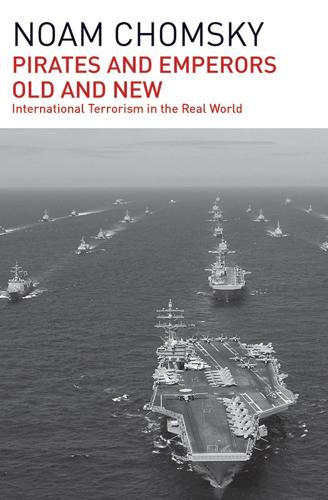
Pirates and Emperors, Old and New
by
Noam Chomsky
Published 7 Apr 2015
The attitude towards the public is revealed by what one Reagan official called “a vast psychological warfare operation” designed to set the agenda for debate over Nicaragua—a disinformation campaign called “Operation Truth”; Goebbels and Stalin would have been amused.10 Disinformation has been an Administration specialty since the earliest days, though the media and Congress always profess to be shocked when a new example is exposed, recently during the 1986 disinformation campaign concerning Libya (see chapter 3). In this case, the display of outraged surprise necessitated a slight case of amnesia; as early as August 1981, Newsweek had reported a government “disinformation program designed to embarrass Qaddafi and his government” along with assorted acts of U.S. terrorism within Libya to try to “demonstrate that Qaddafi was opposed by an indigenous political force.”
…
In this case, the display of outraged surprise necessitated a slight case of amnesia; as early as August 1981, Newsweek had reported a government “disinformation program designed to embarrass Qaddafi and his government” along with assorted acts of U.S. terrorism within Libya to try to “demonstrate that Qaddafi was opposed by an indigenous political force.” There have also been extensive disinformation campaigns, quite successful thanks to media cooperation, on the arms race and numerous other matters.11 We derive further insights from current revelations about the sophisticated program to evade Congressional restrictions on military aid to the terrorist proxy army attacking Nicaragua—or the “resistance,” as it is termed by the government and the loyal press, a “resistance” organized by the Hemispheric Enforcer to attack Nicaragua from bases established outside its borders (the term “proxy army,” in contrast, is used in internal White House documents, and its terrorism is also not concealed in secret reports).

Chasing the Moon: The People, the Politics, and the Promise That Launched America Into the Space Age
by
Robert Stone
and
Alan Andres
Published 3 Jun 2019
But this time the biological specimens died when the cabin depressurized during the return voyage, a detail unreported to the world press at the time. The reentry was equally problematic, ending with a parachute failure and crash landing. Nevertheless, the Russians made every effort to save face by celebrating Zond 6 as a success. The Soviet Union then commenced a disinformation campaign designed to convince the world that Russia would attempt a piloted circumlunar mission in December. In fact, no such plans were being considered. In addition, a KGB colonel stationed in the United States was instructed to plant rumors at Cape Kennedy that Apollo 8’s Saturn V had been sabotaged.
…
On East German television, a news program informed its viewers that space stations and unmanned satellites were far more important; the Moon was a pointless destination and Apollo little more than a symptom of capitalism’s failure. But, unlike some sensationalist American magazines that had made the case that the entire Soviet space program was, in fact, a clever propaganda hoax, there was no active Soviet disinformation campaign to spread rumors that the American government and media had faked the moon landing. Within the privileged inner circles of the Soviet scientific world, 16mm copies of the Apollo moon-landing film were studied and discussed. And among those with access to the film was Sergei Khrushchev.
…
Motivated by anger about the Pentagon’s deception in Vietnam, Kaysing decided to write something “outrageous,” hoping that it might prompt Americans to no longer blindly accept as truth the official word out of Washington, D.C. Ironically, this was one rumor the Soviet Union hadn’t tried to cultivate as part of their disinformation campaign against the United States. At the time of the moon landing, few voiced rumors of it being a hoax, although as early as 1968 just such a secret government conspiracy had served as part of the plot of a darkly satiric BBC television drama, The News-Benders. Author Norman Mailer may have sensed the growing paranoia when he joked a year after Apollo 11, “In another couple of years there will be people arguing in bars about whether anyone even went to the Moon.”
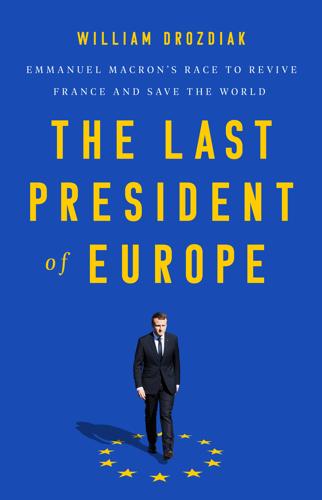
The Last President of Europe: Emmanuel Macron's Race to Revive France and Save the World
by
William Drozdiak
Published 27 Apr 2020
The massive and coordinated hacking operations used by Russia to interfere in American, French, and other European elections highlighted the vulnerability of Western democracies to clandestine attacks by clever adversaries. Although Macron believed that Trump was in fact correct in his frequent harangues about Europeans needing to spend more for their own defense, he realized that purchasing more troops, tanks, bombs, and submarines would not protect Europe from cyber-attacks and disinformation campaigns. If Europe was ever going to achieve an enduring strategic partnership with Russia, there would have to be a greater level of cooperation and understanding with Moscow about the uses and abuses of advanced technologies in the future. As one of the West’s youngest and most consequential leaders, Macron felt comfortable thinking in terms of the next three decades, unlike most of his peers.
…
Putin and his military strategists have expressed amazement at how effective their methods have been in sowing discord and disarray across Europe. The Kremlin’s financial and political support for right-wing populist nationalist parties, such as France’s National Rally, the Northern League in Italy, Austria’s Freedom Party, Hungary’s ruling Fidesz Party, and the Alternative for Germany, has targeted voter resentments in its disinformation campaigns. Moscow has capitalized on the failure of mainstream parties in the West to respond effectively to public anxieties about the impact of immigration on national identity, the growing divide between rich and poor, and the frustrations of young people seeking sustainable employment. These social problems are exploited by Moscow’s social media campaigns in ways that elicit a sympathetic response from aggrieved groups in the West.
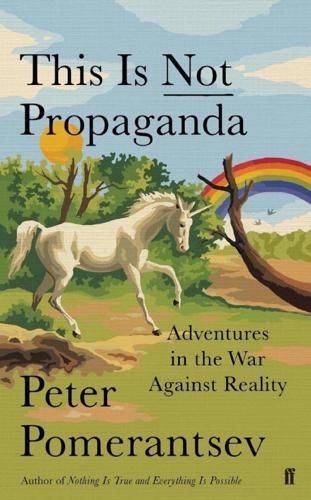
This Is Not Propaganda: Adventures in the War Against Reality
by
Peter Pomerantsev
Published 29 Jul 2019
Throughout the spring of 2014 town after town in the east was being taken by separatists backed by Russian special forces, the flags of the independent Donetsk and Luhansk ‘People’s Republics’ hoisted over local administration buildings. Babar kept on waiting for a sign from Kiev, but none came. He began to suspect the Donbas had been traded in for some deal with Moscow. He kept on calling his contacts, explaining to them that he’d done all the preparatory work – the disinformation campaign, building up the alliance of different groups … In May the separatists took power in Severodonetsk. The local administration welcomed them, took down the Ukrainian flag and replaced it with the tricolour of the Luhansk People’s Republic. The thing that hurt Babar the most was that when the separatists came for him, they only sent three men.
…
It would reel off statistics from Communist Party plenums about the supposed success of the Soviet Economy, the Onward March of Socialism across the world; state that the Objective, Scientific Progress of History was still inevitable … Even when it peddled what the KGB called ‘active measures’ – disinformation campaigns that claimed, for instance, that the US had invented AIDS as a weapon – it would do so with a Soviet seriousness, including interviews with fake scientists providing fake evidence, but all determined to keep up a facade of factuality. In 1983 BBC Monitoring noticed something most unusual: a presenter on Radio Moscow’s English Service began to call Soviet soldiers who had invaded Afghanistan ‘occupiers’ rather than the official ‘limited contingent’ of ‘internationalist warriors’ bringing help to the ‘fraternal people of Afghanistan’.17 What the presenter, a previously unassuming man called Vladimir Danchev, was doing was unheard of.

Twitter and Tear Gas: The Power and Fragility of Networked Protest
by
Zeynep Tufekci
Published 14 May 2017
However, these gatekeepers had normative standards to judge factual error, and many newspapers published investigations later about how they got the reporting in the run-up to the war so wrong. Their failures were recognized as failures, or at least as departures from standards they were supposed to uphold. However, these failures have contributed to declining trust in traditional media, making the public sphere even more vulnerable to disinformation campaigns. Our new era is marked by the multitude of people and institutions with the capacity to broadcast, each with different normative standards—and some with no concerns about accuracy even as a standard that is not always upheld—with a polarized public with little trust in any intermediary, and drawn to information that confirms preexisting biases.
…
The United States has often been accused of deliberately spreading misinformation against regimes it wanted to overthrow or destabilize in many countries. Politicians have been known to resort to starting rumors about their opponents. None of this is without precedent. However, what is more striking in the twenty-first century is that the disinformation campaigns are not necessarily carried out to persuade people or to make them believe any particular set of alleged facts. Instead, the goal is often simply to overwhelm people with so many pieces of bad and disturbing information that they become confused and give up trying to figure out what the truth might be—or even the possibility of finding out what is true.
…
A survey taken shortly after the 2016 election showed that almost a third of Americans remembered seeing such stories, and that upwards of 80–90 percent of the people who remembered those stories could not tell that they were fake. This group included supporters of Hillary Clinton, even though an overwhelming majority of the fake stories seemed to be in favor of Donald Trump, who would go on to win the electoral college by the small margin of about a hundred thousand votes in three states.12 Such disinformation campaigns exploiting the affordances of search and social media platforms’ architecture, algorithms, and ad-financed business models that make it lucrative to spew false propaganda can have consequences beyond one presidential election: viral misinformation is also part of ongoing ethnic cleansing campaigns in Myanmar.13 After the election, with outrage over such misinformation becoming a public relations nightmare for Facebook, Mark Zuckerberg tentatively announced some early steps to curb this traffic.
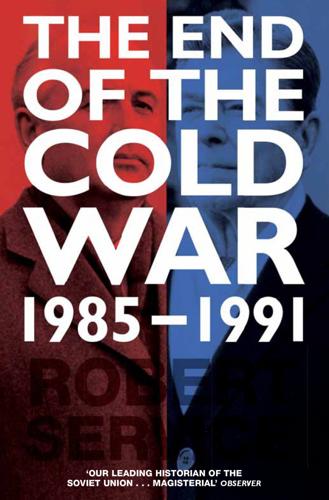
The End of the Cold War: 1985-1991
by
Robert Service
Published 7 Oct 2015
Casey, speech to Dallas World Affairs Council, 18 September 1985, pp. 1–17: RRPL, John Lenczowsky Files, box 1, Active Measures. 32. A. A. Snyder, Warriors of Disinformation: American Propaganda, Soviet Lies, and the Winning of the Cold War: An Insider’s Account, p. xiii. 33. Chapter and verse was supplied in a USIA memo, ‘Soviet Disinformation Campaigns in 1987’, n.d., pp. 1–4: John O. Koehler Papers (HIA), box 16, folder: Eastern Europe, 1974–1995. See also ‘The USSR’s Disinformation Campaign’: Foreign Affairs Note, State Department, July 1987: Citizens for International Civil Society (HIA), box 89, folder 1. The Pravda cartoon appeared on 31 October 1986. 34. Snyder, Warriors of Disinformation, pp. 93–4. 35.
…
At the same time he stuck to his programme of strategic military modernization, which under Gorbachëv served to increase Moscow’s desire for a rapprochement with Washington. Reagan consistently pushed Gorbachëv further and faster than he had planned to move with regard to regional conflicts, to Soviet abuses in human rights, to disinformation campaigns and to contacts between East and West. The elites in the party, government, KGB and even the armed forces approved of much of the diagnosis and course of treatment that he recommended during his early years in power. Meanwhile Gorbachëv and Reagan, with Shevardnadze and Shultz in support, developed a degree of confidence in each other; and lessons were accepted on both sides as the USSR deepened its commitment to self-reform and ceased to quarantine its politics and media from the rest of the world.
…
W. ref1, ref2, ref3 and August 1991 coup against Gorbachëv ref1 background and political career ref1 and Baltic states ref1, ref2, ref3, ref4, ref5, ref6 and Camp David summit (1990) ref1 and Chinese–US relations ref1 cutting of military budget and reducing troops and weaponry ref1 and Eastern Europe ref1, ref2 and Ermath’s review of foreign policy ref1, ref2 and German reunification ref1, ref2, ref3 and Gorbachëv ref1, ref2, ref3, ref4, ref5, ref6, ref7, ref8 and Helsinki summit (1990) ref1 and Iraq’s invasion of Kuwait (1990) ref1, ref2, ref3, ref4, ref5 and Lithuania ref1 and Malta summit (1989) ref1 marriage ref1 and nuclear disarmament ref1, ref2, ref3, ref4, ref5, ref6, ref7 and Poland ref1 reluctance to give direct financial assistance to USSR ref1, ref2, ref3, ref4 Soviet policy ref1, ref2, ref3, ref4, ref5, ref6, ref7 and Strategic Defense Initiative ref1 sworn in as President (1989) ref1 and Thatcher ref1 and Ukraine ref1 as Vice President ref1, ref2 viewpoint on perestroika ref1 visit to China (1989) ref1 visit to Poland (1987) ref1 Bush, George W. ref1 Bykaŭ, Vasil ref1 Cambodia ref1, ref2, ref3, ref4, ref5 Camdessus, Michel ref1 Camp David summit (1990) ref1 Campaign for Nuclear Disarmament (CND) ref1 Canada ref1, ref2 Carlucci, Frank ref1, ref2, ref3, ref4, ref5, ref6, ref7 Carrington, Lord ref1 Carter, Jimmy ref1, ref2, ref3, ref4, ref5 Casaroli, Cardinal ref1, ref2, ref3, ref4 Casey, Bill ref1, ref2, ref3, ref4, ref5, ref6, ref7, ref8, ref9, ref10, ref11, ref12, ref13 Castro, Fidel ref1, ref2, ref3, ref4, ref5, ref6, ref7, ref8 Ceauşescu, Nicolae ref1, ref2, ref3, ref4, ref5, ref6, ref7, ref8, ref9, ref10, ref11, ref12, ref13, ref14, ref15, ref16, ref17, ref18 censorship in USSR ref1 Central Committee see under Communist Party of the Soviet Union Central Intelligence Agency see CIA Cervetti, Gianni ref1 Chakovski, Alexander ref1 Chalupa, Leopold ref1, ref2 Chebrikov, Viktor ref1, ref2, ref3, ref4, ref5, ref6, ref7 Cheney, Dick ref1, ref2, ref3 Chernavin, Vladimir ref1 Chernenko, Konstantin ref1, ref2, ref3, ref4, ref5, ref6, ref7, ref8, ref9 Chernobyl power station disaster (1986) ref1, ref2, ref3, ref4, ref5, ref6 Chernyaev, Anatoli ref1, ref2, ref3, ref4, ref5, ref6, ref7, ref8, ref9, ref10, ref11 Chervov, Nikolai ref1, ref2 Chilean communism see Communist Party of Chile China ref1, ref2, ref3, ref4, ref5 Bush’s visit to (1989) ref1 economic reforms ref1, ref2, ref3, ref4, ref5, ref6, ref7 Gorbachëv’s visit to (1989) ref1 Reagan’s visit to (1984) ref1 relations with US ref1, ref2, ref3, ref4, ref5 relations with USSR ref1, ref2, ref3, ref4, ref5, ref6, ref7, ref8, ref9, ref10, ref11 selling of advanced military technology to by US ref1, ref2 Shevardnadze’s visit to (February 1989) ref1 Tiananmen Square massacre (1989) ref1, ref2 and Vietnam ref1 Chirac, Jacques ref1 CIA (Central Intelligence Agency) ref1, ref2, ref3, ref4, ref5, ref6, ref7, ref8, ref9, ref10 Clark, William ref1, ref2 Cliburn, Van ref1 CoCom (Coordinating Committee for Export Controls) ref1 Comecon ref1, ref2, ref3, ref4, ref5 its Complex Programme of Scientific-Technical Progress ref1, ref2, ref3 dissolution of (1991) ref1 Committee on the Present Danger ref1 communism ref1, ref2 Eurocommunism ref1, ref2, ref3 world ref1, ref2, ref3, ref4 Communist International ref1 communist parties, Soviet subsidies and grants to ref1 Communist Party of Chile ref1 Communist Party of Great Britain ref1 Communist Party of the Soviet Union Central Committee ref1, ref2, ref3, ref4, ref5, ref6, ref7, ref8, ref9, ref10, ref11, ref12, ref13, ref14, ref15, ref16, ref17, ref18, ref19, ref20, ref21, ref22, ref23, ref24, ref25, ref26, ref27, ref28, ref29, ref30, ref31, ref32, ref33, ref34, ref35, ref36, ref37, ref38 Defence Department ref1, ref2, ref3, ref4, ref5, ref6, ref7 Department for Links with the Communist and Workers’ Parties ref1 General Department ref1 International Department ref1, ref2, ref3, ref4, ref5, ref6, ref7, ref8, ref9, ref10, ref11, ref12, ref13 Politburo ageing of ref1 Afghan Commission ref1, ref2, ref3, ref4, ref5 Arms Limitation Commission ref1 see also Big Five discussions ref1, ref2, ref3, ref4, ref5, ref6. ref7, ref8, ref9, ref10, ref11, ref12, ref13, ref14, ref15, ref16, ref17, ref18, ref19, ref20, ref21, ref22, ref23, ref24, ref25, ref26, ref27, ref28, ref29, ref30, ref31, ref32, ref33, ref34, ref35, ref36, ref37, ref38, ref39, ref40, ref41, ref42, ref43, ref44, ref45, ref46, ref47, ref48, ref49, ref50, ref51, ref52, ref53, ref54, ref55, ref56, ref57, ref58, ref59, ref60, ref61, ref62, ref63, ref64, ref65, ref66, ref67, ref68, ref69, ref70 Ethiopian Commission ref1 organization of ref1, ref2, ref3, ref4, ref5, ref6, ref7, ref8, ref9, ref10, ref11, ref12, ref13 perks and routines of members of ref1, ref2 Polish Commission ref1, ref2 reports to ref1, ref2, ref3, ref4, ref5, ref6, ref7, ref8, ref9, ref10, ref11, ref12, ref13, ref14, ref15, ref16, ref17, ref18, ref19, ref20 Secretariat ref1, ref2, ref3, ref4, ref5, ref6, ref7, ref8, ref9, ref10, ref11, ref12, ref13, ref14, ref15, ref16, ref17, ref18, ref19, ref20 Propaganda Department ref1, ref2 see also Andropov, Yuri; Brezhnev, Leonid; Chernenko, Konstantin; Gorbachëv, Mikhail Communist Refoundation Party (Italy) ref1 Conference on Security and Cooperation ref1 Congress of People’s Deputies ref1, ref2 elections to (1989) ref1 Conquest, Robert ref1 Conventional Armed Forces in Europe Treaty ref1, ref2, ref3, ref4, ref5 Coordinating Committee for Export Controls see CoCom Council of Ministers (USSR) ref1, ref2, ref3, ref4, ref5 Cradock, Percy ref1 Craxi, Bettino ref1, ref2 Crowe, William ref1 Crozier, Brian ref1 Cuba ref1, ref2, ref3, ref4 ref5 see also Castro, Fidel Cuban missile crisis (1962) ref1, ref2, ref3 cultural reform (USSR) ref1, ref2, ref3, ref4 Czechoslovakia ref1, ref2, ref3, ref4, ref5, ref6, ref7 Gorbachëv’s visit (1987) ref1 Soviet invasion (1968) ref1 withdrawal of Soviet troops ref1 Danilevich, Andrian ref1, ref2, ref3 Daniloff, Nicholas ref1, ref2 Davies, Richard ref1 de Gaulle, Charles ref1, ref2 de Maizière, Lothar ref1 Dead Hand system ref1 Deaver, Mike ref1 Defence Department (USSR) see under Communist Party of the Soviet Union Defense Department (US) ref1, ref2, ref3, ref4, ref5, ref6, ref7, ref8, ref9, ref10, ref11 see also Carlucci, Frank; Cheney, Dick; Perle, Richard; Weinberger, Caspar Deng Xiaoping ref1, ref2, ref3, ref4, ref5, ref6, ref7, ref8, ref9, ref10, ref11 Department for Links with the Communist and Workers’ Parties see under Communist Party of the Soviet Union D’Estaing, Giscard ref1, ref2, ref3 detente ref1, ref2, ref3, ref4, ref5, ref6 Detinov, Nikolai ref1, ref2, ref3 Directoire de la Surveillance Territoire (DST) ref1 Discriminate Deterrence report (1988) ref1 disinformation campaigns ref1 Dobrynin, Anatoli ref1, ref2, ref3, ref4, ref5, ref6, ref7 Dole, Bob ref1 Dos Santos, Jose Eduardo ref1 Dubček, Alexander ref1, ref2 Dubinin, Ambassador ref1, ref2, ref3, ref4 Dukakis, Michael ref1 Eagleburger, Lawrence ref1, ref2 East Germany ref1, ref2, ref3, ref4, ref5, ref6, ref7, ref8, ref9 demonstrations and political crisis (1989) ref1, ref2, ref3 elections (1990) ref1 fall of Berlin Wall (1989) ref1, ref2 and Gorbachëv ref1, ref2 relations with USSR ref1, ref2, ref3 relations with West Germany ref1 see also German reunification; Honecker, Erich Eastern Europe ref1, ref2, ref3 and Andropov ref1, ref2 and Brezhnev ref1, ref2 and Bush ref1, ref2 and European Economic Community ref1, ref2 and Gorbachëv ref1, ref2, ref3, ref4, ref5, ref6, ref7, ref8 political crisis in ref1, ref2 and Reagan ref1, ref2 relations with US ref1, ref2, ref3, ref4 relations with USSR ref1, ref2, ref3, ref4, ref5 relations with West Germany ref1, ref2 restrictions on travel into USSR ref1 revolutions in (1989) ref1, ref2, ref3, ref4, ref5, ref6, ref7, ref8, ref9 signing of National Security Decision Directive by Reagan ref1 withdrawal of Soviet forces question ref1, ref2, ref3, ref4, ref5, ref6, ref7 see also individual countries Eastern Europe, policies towards United States ref1, ref2, ref3, ref4 USSR ref1, ref2, ref3, ref4, ref5, ref6 Western Europe ref1, ref2, ref3, ref4, ref5, ref6, ref7, ref8, ref9, ref10, ref11 economic decline (USSR) ref1, ref2, ref3, ref4, ref5, ref6, ref7, ref8, ref9, ref10, ref11, ref12, ref13, ref14 economic expansion (US) ref1, ref2, ref3, ref4, ref5, ref6, ref7 economic reform (USSR) ref1, ref2, ref3, ref4, ref5, ref6, ref7, ref8, ref9, ref10, ref11, ref12, ref13, ref14, ref15, ref16, ref17, ref18, ref19, ref20, ref21, ref22 EEC see European Economic Community enemy, images of the American images of USSR ref1, ref2, ref3, ref4, ref5, ref6, ref7, ref8 Soviet images of United States ref1, ref2 Ermath, Fritz ref1, ref2, ref3, ref4, ref5 espionage ref1, ref2, ref3, ref4 American ref1, ref2 industrial ref1, ref2, ref3, ref4 Soviet ref1, ref2, ref3, ref4, ref5, ref6, ref7, ref8 see also CIA; Directoire de la Surveillance Territoire; GRU; KGB; MI6 Estonia ref1, ref2, ref3, ref4, ref5, ref6, ref7 Ethiopia ref1 Eurocommunism ref1, ref2, ref3 European Economic Community (EEC) ref1 and Eastern Europe ref1, ref2 ‘export of revolution’ ref1 al-Faisal, Saud ref1 Falin, Valentin ref1, ref2, ref3, ref4, ref5, ref6, ref7, ref8, ref9, ref10 Falklands War (1982) ref1, ref2 Fiat ref1 Finnish Communist Party ref1 First World War ref1 Fischer, Oscar ref1 Fitzwater, Marlin ref1 Foot, Michael ref1 Ford, Gerald ref1, ref2, ref3 foreign policy, reform of American ref1, ref2, ref3, ref4, ref5, ref6, ref7, ref8, ref9, ref10, ref11 Soviet ref1, ref2, ref3, ref4, ref5, ref6 ff.: passim see also Gorbachëv, Mikhail; Reagan, Ronald; Shevardnadze, Eduard; Shultz, George; Yakovlev, Alexander France Eureka project ref1 Gorbachëv’s visit to (1985) ref1 relations with US ref1 relations with USSR ref1, ref2, ref3, ref4 see also Mitterand, François French Communist Party ref1, ref2 Friedman, Milton ref1, ref2 Frolov, Ivan ref1, ref2 G7 summits (1990) (Houston) ref1, ref2 (1991) (London) ref1, ref2 Gaddafi, Muammar ref1, ref2, ref3 Gandhi, Rajiv ref1, ref2, ref3, ref4, ref5 Gapurov, Mukhamednazar ref1 Garland, Sean ref1 Gates, Robert ref1, ref2, ref3, ref4, ref5, ref6, ref7, ref8 General Department (USSR) see under Communist Party of the Soviet Union General Staff Academy ref1 Geneva summit (1985) ref1, ref2, ref3, ref4, ref5, ref6 Genscher, Hans-Dietrich ref1, ref2, ref3, ref4, ref5, ref6 Georgia (USSR) ref1, ref2, ref3 Armenians in ref1 history of ref1 relations with USSR ref1, ref2 ref3 Russian invasion (2008) ref1 and Shevardnadze ref1, ref2, ref3, ref4, ref5, ref6, ref7, ref8, ref9, ref10, ref11, ref12, ref13 Tbilisi massacre (1989) ref1, ref2, ref3, ref4, ref5 German Democratic Republic see East Germany German reunification ref1, ref2, ref3, ref4, ref5, ref6, ref7, ref8, ref9, ref10, ref11, ref12, ref13 and Bush ref1, ref2, ref3 and Gorbachëv ref1, ref2, ref3, ref4, ref5, ref6, ref7 Gorbachëv’s deal with Kohl over ref1 and Kohl ref1, ref2, ref3, ref4, ref5, ref6, ref7 Kohl’s Ten-Point Plan for ref1, ref2, ref3 Germany ref1, ref2 and NATO membership ref1, ref2, ref3, ref4, ref5 recognizing of post-war border with Poland ref1 see also East Germany; West Germany Gierek, Eduard ref1, ref2 Glavlit ref1, ref2 Gorbachëv, Mikhail ref1, ref2 American opinion on ref1 and Afghan war ref1, ref2, ref3, ref4, ref5, ref6, ref7, ref8, ref9 and Africa ref1 and agriculture ref1, ref2, ref3 and Andropov ref1, ref2 and Armed Forces leaders ref1 and Asia ref1 appeal for economic assistance ref1, ref2, ref3, ref4 appointment of reformers to leading posts ref1 ‘asymmetrical response’ programme ref1 attributes and qualities ref1, ref2, ref3, ref4, ref5, ref6, ref7, ref8 awarded Nobel Peace Prize ref1 background ref1, ref2 and Baltic states ref1, ref2 and biological weapons question ref1 and Bush ref1, ref2, ref3, ref4, ref5, ref6, ref7, ref8 and Camp David summit (1990) ref1 change in title from Chairman of Supreme Soviet Presidium to President ref1 and Chernobyl power station disaster ref1, ref2, ref3 and Chinese–Soviet relations ref1, ref2, ref3, ref4, ref5, ref6, ref7, ref8 and constitutional reform ref1, ref2 contribution to end of Cold War ref1 coup against, failed (1991) ref1, ref2, ref3 criticism of his policies ref1, ref2, ref3, ref4, ref5, ref6, ref7, ref8, ref9, ref10, ref11 and Cuba ref1 decline in international status ref1 as deputy leader to Chernenko ref1 and dismantling of Soviet Union ref1 and East Germany ref1, ref2 and Eastern Europe ref1, ref2, ref3, ref4, ref5, ref6, ref7, ref8 and the Eastern Europe revolutions ref1, ref2, ref3 economy and economic reforms ref1, ref2, ref3, ref4, ref5, ref6, ref7, ref8, ref9, ref10, ref11, ref12, ref13 elected as leader (1985) ref1 and Ethiopia ref1 and 500 Days programme ref1, ref2 and Geneva Summit (1985) ref1 German reunification and deal with Kohl over ref1, ref2, ref3, ref4, ref5, ref6, ref7, ref8 and Germany’s NATO membership ref1, ref2 global image and popularity ref1 government structure reforms ref1 and Gromyko ref1, ref2, ref3, ref4, ref5 and Helsinki summit (1990) ref1 and human rights ref1, ref2 industrial reforms ref1, ref2 and Intermediate-Range Nuclear Forces Treaty negotiations ref1 and internal political reform ref1 invited to London by Thatcher (1984) ref1 and Iraq’s invasion of Kuwait (1990) ref1, ref2, ref3 January declaration ref1, ref2, ref3, ref4, ref5, ref6, ref7, ref8 and Kohl ref1, ref2, ref3, ref4, ref5, ref6, ref7 and Libyan crisis ref1, ref2 and Lithuania ref1, ref2 and Malta summit (1989) ref1 marriage ref1, ref2 and Marxism-Leninism ref1, ref2 meeting with John Paul II (1989) ref1 and Mitterrand ref1, ref2 and Moscow summit (1988) ref1 and nuclear disarmament and arms reduction ref1, ref2, ref3, ref4, ref5, ref6, ref7, ref8, ref9, ref10, ref11, ref12, ref13, ref14, ref15, ref16, ref17, ref18, ref19, ref20, ref21, ref22, ref23 and perestroika ref1, ref2, ref3, ref4, ref5, ref6, ref7, ref8 Perestroika (book) ref1 and Polish crisis ref1, ref2, ref3, ref4 political career ref1, ref2 public appeal ref1, ref2 and Reagan ref1, ref2, ref3, ref4, ref5, ref6, ref7, ref8, ref9, ref10, ref11 reduction of Soviet forces and withdrawal of troops from Eastern Europe ref1, ref2, ref3, ref4, ref5, ref6 reform team behind ref1 resignation ref1 retreat over reform and dropping of prominent reformers ref1, ref2 and Reykjavik summit (1986) ref1, ref2, ref3, ref4 Rust affair and sackings initiated in armed forces ref1 and Schultz ref1, ref2, ref3 and Shevardnadze ref1, ref2, ref3, ref4, ref5, ref6, ref7, ref8, ref9 and Soviet–Far East relations ref1 speeches to Party Congress ref1, ref2 and Strategic Defense Initiative ref1, ref2, ref3, ref4, ref5, ref6, ref7, ref8, ref9, ref10, ref11, ref12, ref13, ref14, ref15 temperament ref1 and Thatcher ref1, ref2, ref3, ref4, ref5, ref6 and trade relations with US ref1 and Ustinov ref1 visit to China (1989) ref1 visit to Czechoslovakia (1987) ref1 visit to London (1989) ref1 visit to New York and speech to UN General Assembly (1988) ref1 visit to Paris (1985) ref1 and Warsaw Pact ref1 and Washington summit (1987) ref1, ref2, ref3 and West European leaders ref1, ref2, ref3, ref4, ref5, ref6, ref7, ref8, ref9, ref10, ref11, ref12, ref13 and Western Europe ref1, ref2, ref3, ref4, ref5, ref6, ref7 and withdrawal of troops from Afghanistan ref1, ref2, ref3, ref4, ref5, ref6 and withdrawal of troops from East Germany ref1, ref2 and world communist movement ref1, ref2 and Yeltsin ref1, ref2, ref3 Gorbachëva, Raisa ref1, ref2, ref3, ref4, ref5, ref6, ref7, ref8, ref9, ref10, ref11, ref12, ref13 Gordievski, Oleg ref1, ref2, ref3 grain embargo, lifting of (1981) ref1, ref2, ref3 Grenada, US invasion of (1983) ref1 Grey, Earl ref1 Grinevski, Oleg ref1, ref2, ref3 Grishin, Viktor ref1 Gromov, Boris ref1 Gromyko, Anatoli ref1 Gromyko, Andrei ref1, ref2, ref3, ref4, ref5, ref6, ref7 and Afghan War ref1, ref2, ref3 and arms control talks ref1 becomes Chairman of the Supreme Soviet ref1 criticism of Gorbachëv’s arms reduction stance ref1, ref2 and Czechoslovakia ref1 easing out of the Politburo by Gorbachëv ref1 and Gorbachëv ref1, ref2, ref3, ref4, ref5 and Ministry of Foreign Affairs ref1, ref2, ref3 and Poland ref1, ref2 visit to US (1984) ref1 Grósz, Károly ref1, ref2, ref3 GRU (Main Intelligence Administration) ref1, ref2 Haig, Alexander ref1, ref2, ref3, ref4 Hall, Gus ref1, ref2 Hannaford, Pete ref1, ref2 Hart, Gary ref1 Hartman, Arthur ref1, ref2, ref3 Havel, Václav ref1, ref2 Healey, Denis ref1, ref2 Helms, Jesse ref1, ref2, ref3 Helsinki Final Act (1975) ref1, ref2, ref3 Helsinki summit (1990) ref1 Heritage Foundation ref1 Heston, Charlton ref1 Hill, Charles ref1, ref2, ref3, ref4 Hinckley, John ref1 Holland, Stuart ref1 Honecker, Erich ref1, ref2, ref3, ref4, ref5, ref6, ref7, ref8, ref9, ref10, ref11, ref12, ref13, ref14 Hong Kong ref1 Howe, Geoffrey ref1, ref2, ref3, ref4, ref5 Hoxha, Enver ref1 human rights in United States ref1 in USSR ref1, ref2, ref3, ref4, ref5, ref6, ref7, ref8, ref9, ref10, ref11, ref12, ref13, ref14, ref15, ref16, ref17, ref18, ref19, ref20 Humphrey, Gordon ref1 Hungary ref1, ref2, ref3, ref4, ref5, ref6, ref7, ref8, ref9, ref10 Hurd, Douglas ref1, ref2 Husák, Gustáv ref1, ref2, ref3, ref4, ref5, ref6, ref7, ref8, ref9, ref10 Hyett, Nell ref1 Iklé, Fred ref1, ref2 Iliescu, Ion ref1, ref2 intelligence ref1 Inter-Departmental Working Group (‘Little Five’) ref1 Intermediate-Range Nuclear Forces Treaty ref1, ref2, ref3 negotiations ref1 savings made by ref1 Senate and Supreme Soviet ratification of ref1, ref2, ref3 signing of ref1, ref2 International Department see under Communist Party of the Soviet Union International Fund of Assistance ref1 International Harvester Company ref1 International Monetary Fund ref1 Iran ref1 Iran–Contra scandal (1986) ref1, ref2, ref3 Iran–Iraq War ref1, ref2 Iraq ref1 invasion of Kuwait (1990) ref1, ref2, ref3, ref4, ref5 relations with USSR ref1, ref2, ref3 Islamic fundamentalism ref1 Israel ref1 Italian Communist Party ref1, ref2, ref3, ref4, ref5 Italy ref1 Jackson–Vanik amendment ref1, ref2, ref3, ref4, ref5, ref6, ref7, ref8 Jakes, Miklos ref1 jamming, radio and TV ref1, ref2, ref3, ref4, ref5 Japan ref1, ref2, ref3 and China ref1 economic success ref1, ref2, ref3 relations with US ref1 relations with USSR ref1, ref2 Shevardnadze’s visit to (1986) ref1 and South Kuriles question ref1 Toshiba scandal (1980) ref1 Jaruzelski, Wojciech ref1, ref2, ref3, ref4, ref5, ref6, ref7, ref8, ref9, ref10, ref11, ref12, ref13, ref14, ref15, ref16, ref17 Jiang Zemin ref1 John Paul II, Pope ref1, ref2, ref3, ref4, ref5, ref6 and Lithuania ref1 meeting with Gorbachëv (1989) ref1 visit to Poland (1987) ref1, ref2 Johnson, Lyndon ref1 Johnson, Thomas ref1, ref2 Kádár, János ref1, ref2, ref3, ref4, ref5, ref6, ref7, ref8 Kampelman, Max ref1, ref2, ref3, ref4 Kania, Stanisław ref1 Karmal, Babrak ref1, ref2, ref3, ref4 Karpov, Viktor ref1, ref2, ref3, ref4, ref5 Kataev, Vitali ref1, ref2, ref3, ref4, ref5, ref6 Katusev, Alexander ref1, ref2 Kaunda, Kenneth ref1 Kazakhstan ref1 Kendall, Dr Henry ref1 Kennedy, John ref1 Kennedy, Paul ref1 KGB ref1, ref2, ref3, ref4, ref5, ref6, ref7, ref8, ref9, ref10, ref11, ref12, ref13, ref14, ref15, ref16 Khomeini, Ayatollah ref1 Khrushchëv, Nikita ref1, ref2, ref3, ref4 Kim Il-sung ref1, ref2 Kinnock, Neil ref1, ref2, ref3 Kirilenko, Andrei ref1 Kirkland, Lane ref1 Kirkpatrick, Jeane ref1, ref2, ref3, ref4 Kissinger, Henry ref1, ref2, ref3, ref4, ref5, ref6, ref7, ref8, ref9, ref10 Kiszczak, Czesław ref1, ref2 Kohl, Helmut ref1, ref2, ref3, ref4, ref5, ref6, ref7, ref8 deal with Gorbachëv over German reunification ref1 and East Germany ref1, ref2, ref3, ref4 and financial assistance to Soviet Union ref1, ref2, ref3 and German reunification ref1, ref2, ref3, ref4, ref5, ref6, ref7, ref8, ref9 and Gorbachëv ref1, ref2, ref3, ref4, ref5, ref6 and Reagan ref1 and Strategic Defense Initiative ref1 Ten-Point Plan for German unity ref1, ref2, ref3, ref4 and Thatcher ref1, ref2, ref3 visit to Moscow (1990) ref1 Kokoshin, Andrei ref1, ref2 Kolbin, Gennadi ref1 Korean War ref1 Kornienko, Georgi ref1, ref2, ref3, ref4, ref5, ref6, ref7, ref8 Kosygin, Alexei ref1 Kovalëv, Anatoli ref1, ref2, ref3, ref4, ref5, ref6 Krasnoyarsk radar station ref1, ref2, ref3, ref4, ref5, ref6, ref7, ref8, ref9, ref10, ref11 Krenz, Egon ref1, ref2, ref3, ref4 Kristol, Irving ref1 Kryuchkov, Vladimir ref1, ref2, ref3, ref4, ref5, ref6, ref7, ref8, ref9, ref10, ref11, ref12, ref13, ref14, ref15, ref16, ref17, ref18 Kukliński, Ryszard ref1 Kulikov, Viktor ref1, ref2 Kuwait, Iraqi invasion of (1990) ref1, ref2, ref3, ref4 Labour Party (Britain) ref1 Lance nuclear missiles ref1, ref2, ref3 Landsbergis, Vytautas ref1, ref2, ref3, ref4, ref5, ref6 Lange, David ref1 Latvia ref1, ref2, ref3, ref4, ref5, ref6, ref7 Lenin, Vladimir ref1, ref2, ref3 Li Peng ref1, ref2, ref3, ref4 Libya ref1, ref2, ref3 Ligachëv, Yegor ref1, ref2, ref3, ref4, ref5, ref6, ref7, ref8, ref9, ref10, ref11, ref12 Lithuania ref1, ref2, ref3, ref4, ref5, ref6, ref7, ref8, ref9, ref10, ref11, ref12 blockade initiated by Gorbachëv on (1990) ref1 demand for independence ref1, ref2, ref3 Jews in ref1 relations with USSR ref1 restrictions on number of foreigners entering ref1 setting up of popular front (Sajūdis) ref1, ref2 suspension of independence declaration ref1 and the Vatican ref1, ref2 Vilnius massacre (1991) ref1 Yakovlev’s visit to (1988) ref1 Little Five see Inter-Departmental Working Group Long-Term Grain Agreement ref1, ref2 Lungren, Dan ref1 MacEachin, Douglas ref1 McFarlane, Robert ref1, ref2, ref3, ref4, ref5, ref6 McLennan, Gordon ref1 McNamara, Robert ref1 Madison Group ref1 Main Intelligence Administration see GRU Main Military Council (USSR) ref1 Major, John ref1, ref2, ref3 Malta summit (1989) ref1, ref2, ref3, ref4, ref5, ref6, ref7 Marchais, Georges ref1, ref2 Marxism-Leninism ref1, ref2, ref3, ref4, ref5, ref6, ref7, ref8 Maslyukov, Yuri ref1, ref2, ref3, ref4 Massie, Suzanne ref1 Matlock, Jack ref1, ref2, ref3, ref4, ref5, ref6, ref7, ref8, ref9, ref10, ref11 Mazowiecki, Tadeusz ref1, ref2 Medvedev, Vadim ref1, ref2, ref3, ref4, ref5, ref6, ref7 Meese, Ed ref1, ref2, ref3 Melnikov, Alexander ref1 Mengistu, Haile ref1, ref2 Mensheviks ref1 MI6 ref1 Middle East ref1 Militaru, Nicolae ref1, ref2 Mitchell, George ref1 Mitkin, Nikolai ref1 Mitterrand, François ref1, ref2, ref3, ref4, ref5, ref6, ref7, ref8, ref9, ref10 and German reunification ref1, ref2 and Gorbachëv ref1, ref2 and nuclear disarmament ref1, ref2, ref3, ref4 and Strategic Defense Initiative ref1, ref2, ref3 and Thatcher ref1 visit to Moscow (1984) ref1 visit to Moscow (1986) ref1 visit to Moscow (1988) ref1 Mladenov, Petar ref1, ref2 Modrow, Hans ref1, ref2, ref3 Moiseev, Mikhail ref1, ref2, ref3, ref4 mole, false (American) see Matlock, Jack Mondale, Walter ref1 Mongolia conference (1988) ref1 Morning Star (newspaper) ref1 Moro, Aldo ref1 Moscow summit (1988) ref1, ref2, ref3 Mulroney, Brian ref1, ref2 Murphy, George ref1 mutual acquaintance, process of (US and USSR) ref1, ref2, ref3, ref4, ref5 mutually assured destruction (MAD) ref1, ref2, ref3, ref4 Najibullah, Mohammad ref1, ref2, ref3, ref4, ref5 Nakasone, Yasuhiro ref1 Namibia ref1, ref2 Napolitano, Giorgio ref1 national question in the USSR ref1, ref2, ref3, ref4, ref5 see also Estonia; Georgia; Latvia; Lithuania National Security Advisor see Allen, Richard; Carlucci, Frank; Clark, William; McFarlane, Robert; Poindexter, John; Powell, Colin; Scowcroft, Brent National Security Council (US) ref1, ref2, ref3, ref4, ref5, ref6, ref7, ref8, ref9, ref10, ref11, ref12, ref13, ref14, ref15, ref16, ref17, ref18, ref19, ref20, ref21, ref22, ref23 National Security Decision Directive (No. 75) ref1 National Security Decision Directive (No. 210) ref1 National Union of Mineworkers ref1, ref2 NATO (North Atlantic Treaty Organization) ref1, ref2, ref3, ref4, ref5, ref6 command post exercise (Able Archer 83) (1983) ref1, ref2 and de Gaulle ref1, ref2 and deployment of Pershing-2 and Tomahawk missiles ref1 expansion eastwards ref1, ref2 Germany’s membership question ref1, ref2, ref3, ref4, ref5 and nuclear disarmament ref1 and nuclear war ref1 Nazi–Soviet Pact (1939) ref1, ref2 Németh, Miklós ref1, ref2 New York Times ref1 New Zealand ref1 Nicaragua ref1, ref2, ref3, ref4, ref5, ref6, ref7, ref8, ref9 Nicholson, Major, shooting of (1985) ref1 Nitze, Paul ref1, ref2, ref3, ref4, ref5, ref6, ref7, ref8, ref9 Nixon, Richard ref1, ref2, ref3, ref4, ref5, ref6, ref7 Nofziger, Lyn ref1 non-aligned movement ref1, ref2 North, Oliver ref1, ref2 North Atlantic Treaty Organization see NATO North Korea ref1 Novosti ref1 nuclear disarmament advantages and savings ref1 Akhromeev’s January 1986 proposal and Gorbachëv’s assent ref1, ref2 and Bush ref1, ref2, ref3, ref4, ref5, ref6, ref7 and Geneva summit (1985) ref1, ref2, ref3 and Gorbachëv ref1, ref2, ref3, ref4, ref5, ref6, ref7, ref8, ref9, ref10, ref11, ref12, ref13, ref14, ref15, ref16, ref17, ref18, ref19, ref20, ref21, ref22, ref23 Gorbachëv’s declaration for global elimination by 2000 and reaction to ref1 inspections ref1 Intermediate-Range Nuclear Forces Treaty see Intermediate-Range Nuclear Forces Treaty and Malta summit (1989) ref1, ref2 and Politburo Arms Limitation Commission (Big Five) ref1, ref2, ref3, ref4, ref5, ref6, ref7, ref8, ref9, ref10, ref11, ref12, ref13, ref14, ref15, ref16 and Reagan ref1, ref2, ref3, ref4, ref5, ref6, ref7, ref8, ref9, ref10, ref11, ref12, ref13, ref14, ref15, ref16, ref17, ref18, ref19, ref20, ref21, ref22, ref23, ref24 Reagan’s commitment to Strategic Defense Initiative as stumbling block ref1, ref2, ref3, ref4, ref5, ref6 and Reykjavik summit (1986) ref1, ref2 and short-range missiles ref1, ref2, ref3, ref4, ref5 Stockholm and Vienna meetings ref1 strategic nuclear weapon talks ref1, ref2, ref3, ref4, ref5, ref6, ref7, ref8, ref9, ref10, ref11, ref12, ref13, ref14, ref15, ref16, ref17, ref18, ref19, ref20 Treaty on the Reduction and Limitation of Strategic Offensive Arms (START) (1991) ref1 and Washington summit (1987) ref1 withdrawal of SS-23s by Gorbachëv ref1 ‘zero’ option proposal ref1, ref2, ref3, ref4, ref5, ref6, ref7, ref8, ref9, ref10 nuclear war ref1 and NATO countries ref1, ref2 and Poland ref1 probable consequences ref1, ref2, ref3 Soviet preparations for ref1 nuclear weapons ref1, ref2 deployment of an extra B-52 bomber with cruise missiles by Reagan (1986) ref1 deployment of Pershing-2s and Tomahawks in Europe by US ref1, ref2, ref3, ref4, ref5 deployment of SS-20 missiles in Eastern Europe by USSR ref1, ref2 modernization question (US & USSR) ref1, ref2, ref3, ref4, ref5, ref6, ref7, ref8, ref9 non-realization of Dead Hand system ref1 peace movement ref1, ref2 Nunn, Sam ref1, ref2, ref3 Nyers, Resző ref1 Obama, Barack ref1 October Revolution (1917) ref1 Odom, William ref1 Ogarkov, Nikolai ref1, ref2, ref3, ref4 oil prices, fall of (1985–86) ref1, ref2 Oldfield, Barney ref1 O’Neill, Tip ref1, ref2 OPEC ref1 Open Skies Conference (1990) ref1 Organization of the Petroleum Exporting Countries see OPEC Orlov, Yuri ref1 Ortega, Daniel ref1, ref2, ref3 Orzechowski, Marian ref1 Packard, David ref1 Pakistan ref1, ref2, ref3, ref4 Palme, Olof ref1, ref2, ref3 Party Central Committee see under Communist Party of the Soviet Union Party of Democratic Socialism (Italy) ref1 Party Politburo (USSR) see Politburo under Communist Party of the Soviet Union Pasechnik, Vladimir ref1, ref2 Patiashvili, Dzhumber ref1 Patolichev, Nikolai ref1 Pavlov, Valentin ref1, ref2, ref3 peace movement ref1, ref2, ref3 Pelshe, Arvid ref1 Perle, Richard ref1, ref2, ref3, ref4, ref5, ref6, ref7, ref8, ref9, ref10, ref11 Pershing-2 missiles ref1, ref2, ref3, ref4, ref5, ref6, ref7 Petrakov, Nikolai ref1 Petrovski, Boris ref1 Petrushenko, Nikolai ref1, ref2 Pióro, Tadeusz ref1 Pipes, Richard ref1 Podhoretz, Norman ref1 Poindexter, John ref1, ref2, ref3, ref4, ref5, ref6, ref7, ref8 Poland ref1, ref2, ref3, ref4, ref5, ref6, ref7, ref8, ref9 crisis (1989) ref1 economy ref1, ref2, ref3, ref4, ref5, ref6 ending of martial law (1983) ref1 Gorbachëv’s visit to Warsaw (1986) ref1 Gorbachëv’s visit to Warsaw (1988) ref1 government talks with Solidarity and legal status given to (1989) ref1, ref2 introduction of martial law by Jaruzelski (1981) ref1, ref2 John Paul II’s visit to (1987) ref1, ref2 Solidarity revolution and repression of ref1, ref2, ref3, ref4, ref5 and Soviet preparations for nuclear war ref1 strikes and political protests (1988) ref1 Thatcher’s visit to (1988) ref1 and USSR ref1, ref2, ref3 winning of election by Solidarity and new government formed (1989) ref1, ref2 Polish United Workers Party ref1, ref2 Politburo see under Communist Party of the Soviet Union political reform, internal (USSR) ref1, ref2, ref3, ref4, ref5, ref6, ref7, ref8, ref9, ref10, ref11, ref12, ref13, ref14, ref15, ref16, ref17, ref18, ref19, ref20, ref21 political right ref1, ref2, ref3, ref4, ref5, ref6, ref7, ref8, ref9 Ponomarëv, Boris ref1, ref2, ref3, ref4, ref5, ref6 popular front ref1 Powell, Charles ref1 Powell, Colin ref1, ref2, ref3, ref4 Pozner, Vladimir ref1 Primakov, Yevgeni ref1, ref2, ref3, ref4, ref5, ref6, ref7, ref8 Prokofev, Yuri ref1 propaganda ref1, ref2, ref3, ref4, ref5, ref6, ref7, ref8, ref9, ref10, ref11 US ref1, ref2 USSR ref1, ref2, ref3, ref4, ref5, ref6, ref7, ref8, ref9 see also disinformation campaigns; Communist Party of the Soviet Union: Propaganda Department; United States Information Agency Propaganda Department see under Communist Party of the Soviet Union Pugo, Boris ref1, ref2 Putin, Vladimir ref1, ref2 Qian Qichen ref1 Quad, The ref1 Quayle, Dan ref1 quarantine, cultural and informational (USSR) ref1 lifting of ref1 see also under censorship in USSR; jamming, radio and TV; travel permits (USSR) Radio Free Europe ref1, ref2, ref3 radio jamming see jamming, radio and TV Rakowski, Mieczysław ref1, ref2, ref3, ref4 Ratushinskaya, Irina ref1 Razumovski, Georgi ref1 Reagan, Nancy ref1, ref2, ref3, ref4, ref5 Reagan, Ronald ref1, ref2, ref3 acting career ref1, ref2 addresses to the nation ref1, ref2 and Afghan War ref1, ref2, ref3 anticommunism and anti-Soviet rhetoric ref1, ref2, ref3, ref4, ref5, ref6, ref7, ref8 appearance and character ref1, ref2, ref3, ref4, ref5, ref6, ref7 attempted assassination of (1981) ref1, ref2 background ref1 and China ref1, ref2 contribution to end of Cold War ref1, ref2 critics of rapprochement with USSR ref1 demand for Berlin Wall to be pulled down ref1 and Eastern Europe ref1, ref2 elected President (1981) ref1, ref2 and expansion of military expenditure ref1, ref2 and Geneva summit (1985) ref1, ref2, ref3 and Gorbachëv ref1, ref2, ref3, ref4, ref5, ref6, ref7, ref8, ref9, ref10 and Haig ref1 health concerns ref1 horse-riding fall (1989) ref1 and Intermediate-Range Nuclear Forces Treaty negotiations ref1, ref2 and Iran–Contra scandal (1986) ref1, ref2 and Kohl ref1 leadership credentials ref1 and Libyan raid (1986) ref1 marriage ref1 and Moscow summit (1988) ref1 and nuclear disarmament and arms reduction ref1, ref2, ref3, ref4, ref5, ref6, ref7, ref8, ref9, ref10, ref11, ref12, ref13, ref14, ref15, ref16, ref17, ref18, ref19, ref20, ref21, ref22, ref23, ref24 Orlando speech (1983) ref1 and Polish crisis ref1 political philosophy and approach ref1, ref2 reaction to Gorbachëv’s declaration on eliminating nuclear weapons ref1, ref2 and reading ref1 and Reykjavik summit (1986) ref1, ref2, ref3 seen as a warmonger ref1, ref2 and Shevardnadze ref1, ref2 and Shultz ref1, ref2 Soviet policy ref1, ref2, ref3 Springfield speech (1988) ref1 and Strategic Defense Initiative ref1, ref2, ref3, ref4, ref5, ref6, ref7, ref8, ref9, ref10, ref11, ref12, ref13, ref14, ref15, ref16, ref17, ref18, ref19, ref20, ref21, ref22, ref23 and Thatcher ref1, ref2, ref3, ref4, ref5, ref6, ref7 and US–Soviet trade relations ref1 visit to China (1984) ref1 visit to West Berlin and Brandenburg Gate speech ref1 and Washington summit (1987) ref1 and Weinberger ref1, ref2 wins second term in office (1984) ref1 Reaganauts ref1 Red Brigades ref1 Regan, Don ref1, ref2, ref3 Reykjavik summit (1986) ref1, ref2, ref3, ref4, ref5 Ridgway, Rozanne ref1, ref2 Robinson, Peter ref1 Rockefeller, David ref1 Rogers, Bernard ref1 Romania ref1, ref2, ref3, ref4, ref5, ref6, ref7, ref8, ref9, ref10 Ceauşescu’s oppressive regime ref1 protests (1989) ref1 relations with USSR ref1, ref2 uprising against Ceauşecu and collapse of communism (1989) ref1 see also Ceauşescu, Nicolae Romanov, Grigori ref1 Romerstein, Herb ref1 Rostow, Eugene ref1 Rowen, Harry ref1 Rowny, Ed ref1, ref2, ref3, ref4, ref5, ref6, ref7 Rusakov, Konstantin ref1 Russia ref1 relations with US ref1, ref2 Rust, Mathias ref1, ref2 Ryzhkov, Nikolai ref1, ref2, ref3, ref4, ref5, ref6, ref7, ref8, ref9, ref10, ref11, ref12, ref13, ref14, ref15 Sachs, Jeffrey ref1 Saddam Hussein ref1, ref2, ref3, ref4, ref5 Sagan, Carl ref1 Sagdeev, Roald ref1 Sajūdis ref1, ref2, ref3 Sakharov, Andrei ref1, ref2, ref3, ref4 SALT-II Treaty ref1, ref2 Sandinistas ref1, ref2, ref3 Sasser, Jim ref1 Saudi Arabia ref1 Scargill, Arthur ref1 Schifter, Richard ref1 Schmidt, Helmut ref1, ref2, ref3 Scowcroft, Brent ref1, ref2, ref3, ref4, ref5, ref6, ref7, ref8 Second World War ref1 Secretariat see under Communist Party of the Soviet Union Shabanov, Vitali ref1 Shakhnazarov, Georgi ref1, ref2, ref3 Shatalin, Stanislav ref1, ref2 Shcharanski, Anatoli ref1, ref2, ref3 Shcherbitski, Vladimir ref1 Shebarshin, Lev ref1, ref2 Shevardnadze, Eduard ref1, ref2, ref3, ref4, ref5, ref6, ref7, ref8, ref9, ref10, ref11, ref12 and Afghan War ref1, ref2, ref3, ref4 and Africa ref1, ref2 and Akhromeev ref1 appointed Minister of Foreign Affairs ref1, ref2 and Asia ref1 Asian tour (1989) ref1 and Baltic states ref1, ref2, ref3, ref4, ref5 and biological weapons ref1 and Castro ref1 character ref1, ref2, ref3, ref4, ref5, ref6, ref7, ref8, ref9, ref10, ref11, ref12 and China–USSR relations ref1 criticism of ref1, ref2, ref3, ref4 and East German political crisis ref1 and Eastern Europe ref1, ref2 and Georgia ref1, ref2, ref3, ref4, ref5, ref6, ref7, ref8, ref9, ref10, ref11, ref12, ref13 and German reunification ref1, ref2, ref3, ref4 and Gorbachëv ref1, ref2, ref3, ref4, ref5, ref6, ref7, ref8, ref9 and Howe ref1 and human rights ref1 and Intermediate-Range Nuclear Forces Treaty negotiations ref1 and Iraqi invasion of Kuwait ref1, ref2, ref3, ref4 and Japanese–USSR relations ref1 and Krasnoyarsk radar station ref1, ref2, ref3 and Libyan international crisis ref1 and Lithuania ref1 and Malta summit ref1, ref2 meeting with Reagan (1985) ref1 meeting with Reagan (1988) ref1 and nuclear disarmament ref1, ref2, ref3, ref4, ref5, ref6, ref7, ref8 personal life ref1 and Poland ref1, ref2, ref3 and rapprochement with US ref1 and Reagan ref1, ref2 and reform of Foreign Affairs Ministry ref1 resignation (1990) ref1, ref2, ref3 and Reykjavik summit ref1 rivalry between Yakovlev and ref1 and Romanian crisis ref1 speeches to Supreme Soviet ref1, ref2 and Strategic Defense Initiative ref1, ref2, ref3, ref4, ref5 talks and relationship with Baker ref1, ref2, ref3, ref4, ref5, ref6, ref7, ref8, ref9, ref10 talks and relationship with Shultz ref1, ref2, ref3 threatens to resign (1989) ref1 and Tbilisi massacre ref1, ref2 and Vietnam ref1, ref2 visit to Bonn and talks with Kohl (1988) ref1 visit to China and talks with Deng Xiaoping (1989) ref1 visit to Japan (1986) ref1 weakness in grasping international relations ref1 and withdrawal of Soviet forces from East Europe question ref1, ref2, ref3 Shevardnadze, Nanuli (wife) ref1, ref2 Shevchenko, Arkadi ref1 Shishlin, Nikolai ref1 Shmelev, Nikolai ref1 Shultz, George ref1, ref2, ref3, ref4, ref5, ref6, ref7, ref8, ref9 and Afghan War ref1, ref2 and ‘age of information’ ref1 appointed Secretary of State ref1 and Carlucci ref1 character and attributes ref1 and CIA ref1 and Conference on Security and Cooperation ref1 foreign policy ref1 and Gorbachëv ref1, ref2, ref3 and Gorbachëv’s declaration on nuclear weapons ref1, ref2 hands in resignation and withdraws it ref1 and Intermediate-Range Nuclear Forces Treaty negotiations ref1, ref2, ref3, ref4, ref5 meetings with Gorbachëv ref1, ref2 and Moscow summit (1988) ref1 as Nixon’s Treasury Secretary ref1, ref2 and nuclear disarmament and arms control negotiations ref1, ref2, ref3, ref4, ref5, ref6, ref7 and Reagan ref1, ref2 and Reykjavik summit ref1, ref2, ref3, ref4, ref5, ref6 and Strategic Defense Initiative ref1, ref2, ref3 talks and relationship with Shevardnadze ref1, ref2, ref3 tour of Europe’s capitals (1985) ref1 and trade relations with USSR ref1 and US–Soviet relations ref1, ref2 visit to Moscow (1988) ref1 and Washington summit (1987) ref1 and Weinberger ref1, ref2, ref3, ref4, ref5, ref6, ref7 Shultz, O’Bie ref1, ref2, ref3 Siberian oil and gas pipeline ref1, ref2 Sitaryan, Stepan ref1, ref2, ref3 Slovo, Joe ref1 Slyunkov, Nikolai ref1 Snow, C.

The Twittering Machine
by
Richard Seymour
Published 20 Aug 2019
When Trump used the term, he was using it to describe media organizations publishing a document concerning his alleged relationships with the Russian state that, they admitted, they couldn’t verify. Moreover, this definition of ‘fake news’ would cover many stories critical of Trump. For example, the Washington Post alleged that Russian hackers had ‘penetrated’ the US electricity grid during the election, and that a range of left-of-Clinton websites were part of a Russian disinformation campaign. Both stories, aggressively promoted by the Post, were later humiliatingly edited, their central claims withdrawn.22 Those bewailing ‘fake news’, overwhelmingly journalists from the legacy media, are also missing the real scoop. ‘Fake news’ is old news. After all, exactly when was the era of unalloyed truth-telling?
…
The attempt to reinject meaning into the system by reviving Cold War ideologies and arousing public opinion against a scapegoat ‘postmodernism’ is doomed to fail, however. Since these efforts are themselves part of the simulacrum, they slip easily back into the cycle of meaningless information. The more sophisticated propagandists recognize this, and instead work with the grain of the collapse of meaning. For example, the BBC alleges that Russian disinformation campaigns no longer bother to promote a single narrative, but instead flood the internet with so many competing versions of a story that no one knows what to think.70 It would be prudent to assume that all parties now involved in disinformation are using similar techniques. The problem is not that the internet is a web of lies.
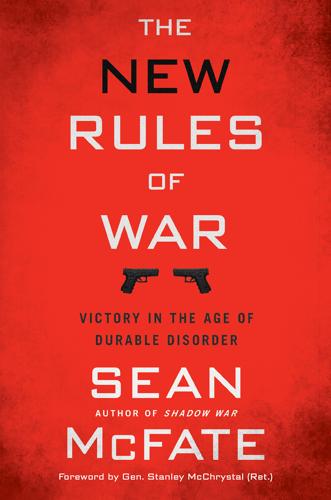
The New Rules of War: Victory in the Age of Durable Disorder
by
Sean McFate
Published 22 Jan 2019
Its spies even have a name for this kind of subversion—“active measures”—and it’s an example of how shadow wars are fought by weaponizing information. One reason why RT is effective is that it blends legitimate experts and journalists with crackpots, offering a plausible version of events that is nested within a larger global disinformation campaign. Think of RT as strategic storytelling. The “Troll Factory” is another component of Russia’s active measures against the West, revealing the true power of cyberwarfare. It’s not sabotage, like Stuxnet—it’s disinformation. Located in Saint Petersburg and officially called the Internet Research Agency, it’s where Russian operatives hack into websites, create phony news sites, and pump out fake news and bogus social media messages.
…
Some of these nonstate actors will wage war in the future, and alliances with them will prove obligatory when confronting a common enemy. This is coalition shadow warfare. The strategic possibilities are endless for the cunning mind. The key is this: all these tools are mutually reinforcing and inexorably linked—nothing occurs in a silo. For example, disinformation campaigns must support covert operations on the ground, and vice versa, otherwise the strategy will fail. Actions die in isolation. Shadow war is an effective strategy for the future, and the West should adopt some version of it. Sun Tzu told us 2,500 years ago that all warfare is deception—and it still is.
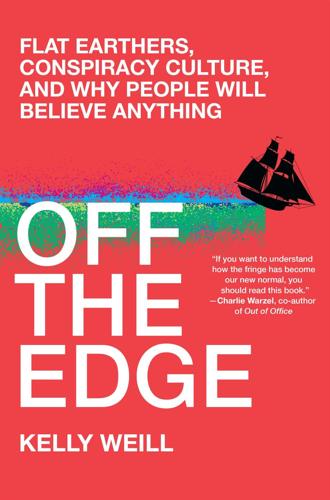
Off the Edge: Flat Earthers, Conspiracy Culture, and Why People Will Believe Anything
by
Kelly Weill
Published 22 Feb 2022
A similar propaganda blitz that same year on US-based Facebook pages, led by a Saint Petersburg–based troll farm called the Internet Research Agency, stoked political tensions in the United States through widely shared posts that played up both the left and right ends of the political spectrum, including right-wing posts that lauded Trump’s presidential campaign and left-wing posts that highlighted Hillary Clinton’s shortcomings and discouraged Black Americans from voting. The Russian troll farm also used Twitter to promote anti-vaccination conspiracy theories, which falsely claim vaccines are unsafe or that vaccines cause autism. The IRA used the hashtag #VaccinateUS to feign an authentic internet trend, according to researchers who discovered the disinformation campaign. “Like other antivaccine tweets, antivaccine messages with #VaccinateUS often reference conspiracy theories,” the researchers found. “However, whereas conspiracy theories tend to target a variety of culprits (e.g., specific government agencies, individual philanthropists, or secret organizations), the #VaccinateUS messages are almost singularly focused on the US government (e.g., ‘At first our government creates diseases then it creates #vaccines.what’s next?!
…
He rose to political prominence while pushing a conspiracy theory that falsely claimed Barack Obama, the first Black president, was not born in the United States. Trump and other Western right-wing populists who won elections in the mid-2010s did so in a time of surging income inequality, accompanied by growing fears, on the right, of immigration. Across the pond, following a sustained disinformation campaign that maligned Muslims and immigrants, the United Kingdom voted to leave the European Union in 2016. A 2018 University of Cambridge study found that Trump and Brexit voters were much more likely than their opponents’ supporters to believe conspiracy theories about immigration, with nearly half of Trump and Brexit voters believing the government was hiding “the truth” about immigration.

There's a War Going on but No One Can See It
by
Huib Modderkolk
Published 1 Sep 2021
Even Wikipedia had already created a page about the catastrophe, and local and regional media were also reporting it on social channels. But it was all fake. Over the course of a few hours, dozens of phoney accounts churned out hundreds of tweets, pictures and staged videos as part of a disinformation campaign orchestrated from a troll factory in St Petersburg. The news triggered panic, with frightened residents calling emergency services and officials at the chemical plant. And that’s precisely what the young Russians had been told to do: create unrest and sow discord. Something similar happened after flight MH17 was shot down.
…
The two men were carrying laptops and flash drives identifying them as part of Fabrika Trollei – ‘troll factory’ in Russian – which, according to the Libyan charges, ‘specialises in influencing elections that are to be held in several African states’. Fabrika Trollei is actually a collection of political and media organisations connected to Prigozhin. According to sources cited by Bloomberg, Prigozhin had been in touch with Gaddafi’s son and was also active in Madagascar, where Russia was running another disinformation campaign. There, Russians worked with locals to set up Facebook accounts that looked as authentic as possible – that weighed in on the right issues in the native language. And that, Julio and Carlos agree, ‘is what makes them so effective and difficult to detect’. * But even this is only skimming the surface.
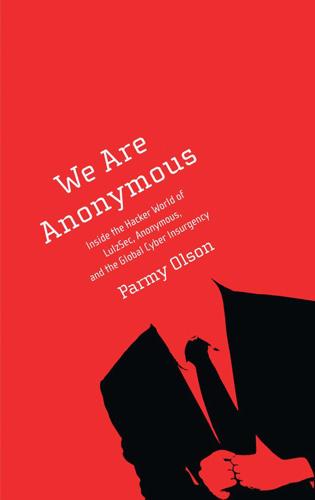
We Are Anonymous: Inside the Hacker World of LulzSec, Anonymous, and the Global Cyber Insurgency
by
Parmy Olson
Published 5 Jun 2012
Barr started talking to Hunton & Williams, a law firm whose clients—among them the U.S. Chamber of Commerce and Bank of America—needed help dealing with opponents. WikiLeaks, for example, had recently hinted at a trove of confidential data it was holding from Bank of America. Barr and two other security firms made PowerPoint presentations that proposed, among other things, disinformation campaigns to discredit WikiLeaks-supporting journalists and cyber attacks on the WikiLeaks website. He dug out his fake Facebook profiles and showed how he might spy on the opponents, “friending” Hunton & Williams’s own staff and gathering intelligence on their personal lives. The law firm appeared interested, but there were still no contracts come January 2011, and HBGary Federal needed money.
…
Already, rumors were spreading that LulzSec had been founded by the same crew that had hit HBGary. Enemy hackers were posting documents filled with details they had dug up online about each member, much of it wrong but some of it hitting close to home. LulzSec’s members needed to switch their focus from finding targets to protecting themselves. Kayla suggested a mass disinformation campaign. Her idea was to create a Pastebin document revealing that Adrian Lamo owned the domain LulzSec.com; then to add details of other Jesterfags and claim they were members of LulzSec; then to spam the document everywhere. It was a classic social-engineering tactic, and it sometimes worked. “But saying more or less that LulzSec is CIA,” Trollpoll offered.
…
While Sabu was an informant, his lies were aimed at not only other hackers but also journalists. Together with his FBI handlers, he would lie to reporters who hoped for an online interview. Sometimes the reporters were speaking to federal agents, other times it was Sabu but with the agents looking over his shoulder. In the end, it was just another disinformation campaign. Throughout his volatile year with Anonymous, Sabu had proved himself to be a masterful liar. But there was one thing he could not seem to fabricate: his name. At one point in 2011, before his FBI arrest, Hector Monsegur dropped the nickname Sabu online and started trying to use the new nickname Kage or Kaz in private IRC channels.
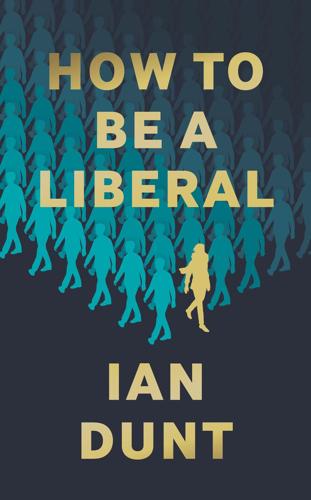
How to Be a Liberal: The Story of Liberalism and the Fight for Its Life
by
Ian Dunt
Published 15 Oct 2020
The aim was in fact two-fold. Firstly, it would give Moscow a spreadable narrative in which it could maintain its innocence. And secondly it would confuse people. It would smudge reality, sow doubt, churn out as much disinformation as possible and hope the noise cancelled out the facts. The Ukrainian disinformation campaign worked as proof-of-concept for Putin. He now turned his attention to his opponents in the West. Using the same tactics, he could try to achieve similar results in countries like Britain and the US. From the end of 2014, the proportion of English, as opposed to Russian, language tweets from Kremlin fake accounts started to increase dramatically.
…
The most liked post on Instagram was an image of eight female legs of different skin tones, starting with white and ending with black. It read: ‘All the tones are nude. Get over it.’ It was published with hashtags like #blackandproud and #unapologeticallyblack and targeted at African Americans. These and other memes drove users to pages created by the disinformation campaign. And it was here that the real work of manipulating different identity groups was done. The pages had two primary functions: They would seek to divide communities against each other, and they would tailor specific incentives to each group to try to secure Russia’s optimal outcome in elections.
…
Are you sure that your son won’t be the next?’ When it was eventually caught by Facebook and closed down, its Twitter account accused the company of ‘supporting white supremacy.’ In reality, all these accounts were being maintained by people in the same building. Analysis of the Russian disinformation campaign based on evidence provided to the Senate select committee on intelligence found many of these messages came from an identical IP address – a unique number linking online activity at a particular location. In some cases, accounts aggravating different groups against each other were being run from the same computer.
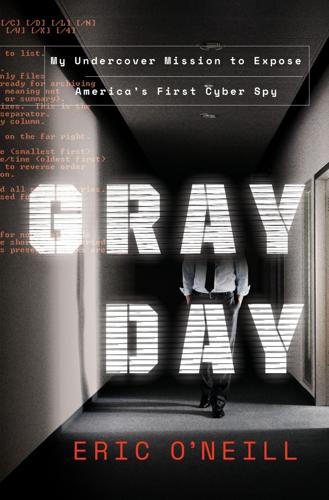
Gray Day: My Undercover Mission to Expose America's First Cyber Spy
by
Eric O'Neill
Published 1 Mar 2019
Russian spymasters launched massive collection campaigns to recruit American moles from within the FBI, CIA, and NSA. At the same time, they were pioneering desinformatsiya practices that spread disinformation and disruption in order to shape American political decisions. These active-measure (aktivinyye meropriatia) disinformation campaigns included media manipulation; use of front organizations (like the US affiliate of the World Peace Council, a secret Soviet affiliate) to sway public opinion; kidnappings; and provision of funds, training, and support to terrorist organizations, to name a few. In 1980, the CIA estimated that the Soviets spent a conservative $3 billion per year pursuing active measures.
…
In his February 6, 1980, congressional testimony, John McMahon, the CIA deputy director for operations, stated that the Soviets’ active-measures network was “second to none in comparison to the major world powers in its size and effectiveness.” The 1980s saw a number of audacious—and highly successful—disinformation campaigns. One involved spreading rumors of CIA and FBI involvement in President John F. Kennedy’s assassination. Another seeded foreign newspapers with articles—purportedly written by American scientists—claiming that AIDS was the result of the Pentagon’s experiments to develop biological weapons.
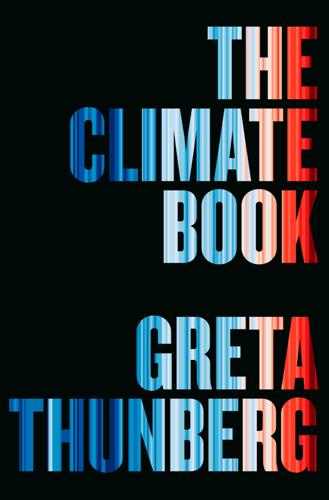
The Climate Book: The Facts and the Solutions
by
Greta Thunberg
Published 14 Feb 2023
Science lost the battle because of the political influence of corporations that produce fossil fuels as well as of those firms that heavily consumed them. Many of these firms and their various trade associations had established effective disinformation campaigns involving so-called think tanks, while some politicians from regions that produced fossil fuels promoted distortions and outright lies about the science. In a situation where private interests were creating a public miasma of falsehoods and deception it was all too easy for the general public to discount the risks. Europe was less distracted and divided by disinformation campaigns from fossil fuel companies and emerged early on as a global leader on the climate issue. UK Prime Minister Margaret Thatcher, a former research chemist, respected the scientific warnings and, also driven by her determination to break the power of the coal-mining unions, lent her support in 1989 to the concept of negotiating the UN Framework Convention.
…
See also individual organisation name Climeworks Orca, 216 Clinton, Bill, 26 clouds, 24, 51, 57, 58, 60–61, 74, 99, 172 coal, 7, 14, 23, 24, 27, 28, 29, 30, 49, 56, 57, 58, 92, 93, 156, 163, 164, 181, 211, 217, 219, 220, 221, 222, 223, 224, 225, 227, 260, 297, 306, 358, 393, 411, 426 Coca-Cola, 295, 297, 326 coffee, 248 cognitive dissonance, 338 colonialism, 162, 174, 175, 311, 313, 316, 364, 387–9, 398, 399–400, 410–11, 417, 418, 436 Concerned Scientists United, 338 Conference of the Parties, 93; COP1 (Berlin, 1995), 302; COP25 (Madrid, 2019), 378; COP26 (Glasgow, 2021), 93, 136, 158, 204, 212, 278, 340, 356; COP27 (Egypt, 2022), 93, 206 consumerism, 202, 218, 280, 281–9, 299, 331–6, 369, 377, 425–6 consumption-based emissions accounting, 257–8, 257, 258 consumption, circle of, 425–6 Coope, Russell, 14 Copenhagen Accord (2009), 28 Copernicus Atmosphere Monitoring Service, 98, 218 coral reefs, 7, 15, 33, 38, 51, 80, 84–5, 334, 335, 345, 346, 350 corporate engagement, 30 Covid-19 pandemic 21, 132–3, 136, 139, 141, 145, 149, 157, 159, 192, 217, 274, 355, 378–83, 393, 436 crabs, 350 crops, 52, 96; advent of agriculture and, 107; biological control agents, 110; cropland expansion, 100, 244–6, 246; cropland reallocations, 341–2, 343; cropland relocations, 109; deforestation and, 236; drought and, 172; fertilizer, 13, 32, 35, 111, 245, 246, 251, 252–4, 340, 341, 342, 343, 346, 414; food systems and, 253–5; loss/failure of, 165, 168, 172; pollination, 108, 110; rotations, 251; soil and, 340–41; yield, 149–50, 183, 245–6, 251, 253, 254, 343, 402 cryosphere, 37, 73, 114 culture wars, 326, 433 cycling, 135, 273, 274 cyclones, 67, 69, 70–71, 79, 397 D Dálvvadis, 173–4 Dakota Access Pipeline, 164 dams, 35, 89, 388 Danish Meteorological Institute, 49 Darity, William, 412 Darwin, Charles, 12 DDT, 111 decarbonization, 205, 258, 261, 264, 271, 275, 311, 315, 317, 381–2, 405–9 Deepwater Horizon oil spill (2010) 198–9, 201 defections, powerbrokers, 3, 65 democracy, 5, 42, 161, 164, 180–81, 213, 279, 325–6, 355, 356, 358, 371, 391, 392, 393, 394, 412–13, 424 dengue, 133, 143, 144, 145, 146 denial, climate-change, 2, 29, 202, 204–9, 207, 337, 338, 370, 372–4, 373, 383 dictatorship, 42, 180, 362, 364, 366, 400 Dieffenbach’s rail, 13 diets: changing, 11, 150, 239, 244–55, 246, 249, 250, 251, 340–33, 343; meat, 107, 112, 236, 248, 249–50, 249, 250, 253, 254, 282, 285, 288, 302, 356, 434; plant-based, 135, 236, 244, 247, 248, 249, 251, 327, 329, 335, 338, 342, 433; vegan, 281, 328, 329, 339, 360, 434; vegetarian, 324, 329, 435 direct-air capture (DAC), 238 disinformation campaigns, 27, 29, 30, 31 divestment, 30, 222, 412, 431 dogs, 9–10 drawdown technologies, 235–9 drought, 26, 38, 39, 65, 68, 74–5, 88, 96–7, 98, 99–100, 116, 124, 134, 165–8, 187, 189, 233, 299, 300, 399, 415 Durán, Alejandro, 299, 300 E East Siberian Arctic Seas (ESAS), 118, 121 e-bikes, 209 echinoderm, 84–5 ecocide, 431 Ecological Threat Register, Institute for Economics and Peace, 187 economics, 8, 29; capitalism, 13, 30–31, 162, 202, 310, 361–2, 390, 399; degrowth, 310–12; divestment, 30, 222, 412, 431; economic institutions, creating new, 376; equity and, 308–9; extractive economy, 163, 391; financial crisis (2008) 393; financial crisis, climate-related, 192–3; financialization of nature, 204; financial rescue packages, Covid-19, 217; GDP and see GDP; growth, 133, 148, 156, 183, 209, 240, 280, 310–12; incomes see income; laissez-faire policies, 30; market economics, 30–31, 200, 202, 255, 258, 284, 309, 324, 366, 412; market failure, climate change as, 30–31; socio-economic cost of climate change, 191–3; socio-economic trends since 1750 35; wealth inequality see wealth education, self- 324–7, 433 efficiency gains 251, 258, 259, 261, 264, 272, 288, 306, 311, 392 Ehrlich, Paul, 112 electricity generation, 30, 56, 88, 217, 227, 228, 257, 259, 261, 266, 268, 281, 309, 388, 434 electrification, 209, 271, 273n; electric vehicles (EVs), 28, 209, 221, 222–3, 226, 227, 268, 271–5, 283, 324, 333, 386; industrial processes, 260–61 elephants, 349, 350, 400 El Niño 38, 64, 100, 189, 190 El Salvador, 165–6, 168 End-Permian mass extinction, 7 energy democracy, 392, 394, 413 ENSO (El Niño-Southern Oscillation) 38 Environmental Defense Fund, US, 25 Environmental Protection Agency, US, 163, 211–12 epidemiological surveillance, 145 Equinor, 262 equity, 154; cars/personal mobility and, 274–5; colonialism and, 315; consumption-based emissions accounting approach and, 257; desire to look away from issues of, 218; geoengineering and, 233–4; Indigenous peoples and, 177; intergenerational, 172; material consumption levels and, 269; meaning of, 396–401; nationally determined contributions (NDC) and, 308–9; net zero by 2050 target and, 21, 304; Paris Agreement and, 308–9; school strike movement and, 355; taboo subject, 208–9; taxes and, 409; water system and, 89; wealth and see wealth.
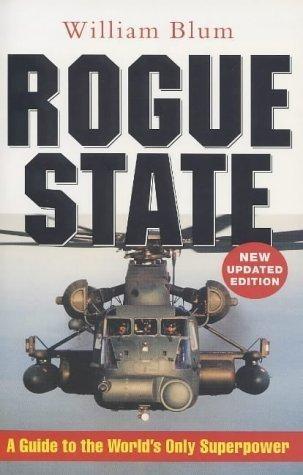
Rogue State: A Guide to the World's Only Superpower
by
William Blum
Published 31 Mar 2002
He and his country would have to be put in their place. In 1981, US planes shot down two Libyan planes in Libyan air space. Five years later, the United States bombed one of Qaddafi's residences, killing scores of people. There were other attempts to assassinate the man, operations to overthrow him, economic sanctions, and a major disinformation campaign reporting one piece of nonsense after another, including conspicuous exaggera-tions of his support for terrorism, and shifting the blame for the 1988 bombing of PanAm 103 to Libya and away from Iran and Syria when the Gulf War campaign required the support of the latter two countries. To Washington, Libya was like magnetic north: the finger always pointed there.
…
And no matter how cynical they've grown about electoral politics at home, few of them harbor any doubt that the promotion of free and fair elections has long been a basic and sincere tenet of American foreign policy. In light of this, let us examine the actual historical record. Philippines, 1950s Flagrant manipulation by the CIA of the nation's political life, featuring stage-managed elections with extensive disinformation campaigns, heavy financing of candidates, writing their speeches, drugging the drinks of one of the opponents of the CIA candidate so he would appear incoherent, plotting the assassination of another candidate. The Agency covertly set up an organization called National Movement for Free Elections, the better to promote its agenda, and trusting citizens joined up all over the country.

Falter: Has the Human Game Begun to Play Itself Out?
by
Bill McKibben
Published 15 Apr 2019
Exxon has always insisted that it has “tracked the scientific consensus on climate change, and its research on the issue has been published in publicly available peer-reviewed journals.”17 In any event the First Amendment preserves one’s right to lie, though in the fall of 2018 the New York attorney general, Barbara Underwood, filed suit against Exxon for lying to investors, which is a crime. In January 2019, the Supreme Court ruled the company had to turn over millions of pages of internal documents to the Massachusetts attorney general, Maura Healey, so we will learn more. What is certain is that this disinformation campaign cost us the human generation that might have made the crucial difference in the climate fight. Alex Steffen, an environmental writer, coined the term predatory delay, “the blocking or slowing of needed change, in order to make money off unsustainable, unjust systems in the meantime.” Climate change, and the behavior of the oil companies, is the prime example.
…
It’s no longer possible, he insisted, “to live by the idea that there is something special, unique, or even sacred about living organisms.”2 Indeed, in the spring of 2018 a University of Washington professor proposed using CRISPR to create a “humanzee,” a human-chimp hybrid, specifically to prove that people aren’t special. “The fundamental take-home message of such a creation would be to drive a stake into the heart of the destructive disinformation campaign” holding that people are different from the rest of creation, he explained.3 This kind of self-loathing permeates the whole subculture. Robert Ettinger, the first man to start freezing his fellow humans so they could be revived in a century or two, looked forward to a golden posthuman age, one where, among other things, we would be reengineered to achieve the “elimination of elimination.”

Messing With the Enemy: Surviving in a Social Media World of Hackers, Terrorists, Russians, and Fake News
by
Clint Watts
Published 28 May 2018
The AIDS virus ravaged communities around the world, growing from a handful of cases in 1980 to more than 4.5 million in 1995.2 The United States led much of the world’s effort to counter the spread of HIV across impoverished regions. Instead of viewing the U.S. effort as a helping hand, though, much of the world then, and even now, believes that the U.S. government unleashed AIDS on the world as a biological weapon—thanks to the KGB’s disinformation campaign known as Operation Infektion. An active measures media campaign generally employs three simple ingredients to create damaging propaganda and provide the Kremlin with plausible deniability: anonymously sourced falsehoods, mixed with true information, disseminated through an information proxy.
…
Thomas Boghardt, “Active Measures: The Russian Art of Disinformation,” AIRSHO (October 2006), 20–26. https://spy-museum.s3.amazonaws.com/files/back_active-measures.pdf. 2. “History of HIV and AIDS,” Avert.org (March 9, 2018). https://www.avert.org/professionals/history-hiv-aids/overview. 3. Thomas Boghardt, “Operation INFEKTION: Soviet Bloc Intelligence and Its AIDS Disinformation Campaign,” Studies in Intelligence, vol. 53, No. 4. (December 2009) 1–24. https://www.cia.gov/library/center-for-the-study-of-intelligence/csi-publications/csi-studies/studies/vol53no4/pdf/U-%20Boghardt-AIDS-Made%20in%20the%20USA-17Dec.pdf. 4. Robert Coalson, “Top Russian General Lays Bare Putin’s Plan for Ukraine,” The Huffington Post (November 2, 2014). https://www.huffingtonpost.com/robert-coalson/valery-gerasimov-putin-ukraine_b_574 8480.html. 5.

Hate Inc.: Why Today’s Media Makes Us Despise One Another
by
Matt Taibbi
Published 7 Oct 2019
To be clear, if Trump were being blackmailed by Russian agencies like the FSB or the GRU, if he had any kind of relationship with Russian intelligence, that would soar over the “overwhelming and bipartisan” standard, and Nancy Pelosi would be damning torpedoes for impeachment right now. There was never a real gray area here. Either Trump is a compromised foreign agent, or he isn’t. If he isn’t, news outlets once again swallowed a massive disinformation campaign, only this error is many orders of magnitude more stupid than any in the recent past, WMD included. Honest reporters like ABC’s Terry Moran understand: Mueller coming back empty-handed on collusion means a “reckoning for the media.” Of course, there won’t be such a reckoning. (There never is).
…
The piece claimed Russians were trying to divide Americans on social media after a mass shooting using Twitter hashtags like #guncontrolnow, #gunreformnow and #Parklandshooting. The Times ran this quote high up: “This is pretty typical for them, to hop on breaking news like this,” said Jonathon Morgan, chief executive of New Knowledge, a company that tracks online disinformation campaigns. “The bots focus on anything that is divisive for Americans. Almost systematically.” About a year after this story came out, Times reporters Scott Shane and Ann Blinder reported that the same outfit, New Knowledge, and in particular that same Jonathon Morgan, had participated in a cockamamie scheme to fake Russian troll activity in an Alabama Senate race.

Merchants of the Right: Gun Sellers and the Crisis of American Democracy
by
Jennifer Carlson
Published 2 May 2023
And then came January 6th. In the weeks before that day, Trump and his supporters had orchestrated a multipronged, desperate, and largely failed attempt to overturn the election results. They filed countless lawsuits. They pressured state officials to fraudulently change election results. They engaged in a disinformation campaign that sowed distrust not just in the electoral results but also in the electoral process itself.2 Various organized factions of the Right—from the Republican Party to the Oath Keepers—undertook proactive roles in spreading the lie that not only had Trump won the election, but that the election had been stolen through the coordinated efforts of election officials working in cahoots with the Democratic Party.
…
Admitting that “I see our society continuing to devolve and disintegrate as we know it … a perfect storm,” he sprinkled conspiracist reasoning throughout our interview—joking, at one point, that “I’m not wearing a tinfoil hat. But.” He was bemused over the odd “coincidence” of a virus coming from China given “the things that they have to control their people”; he paused over what he described as the “pervasive disinformation campaigns to elicit a certain response … like Portland and Seattle [two sites of anti-police protests].” In his view, the multilayered crises of 2020 could serve as an awakening—not simply to the inefficacy of the state but also to its very illegitimacy. At one point happily wagering that the coronavirus pandemic had “delegitimized our government … both sides, in different ways, have delegitimized it in their heads,” he saw in 2020 an invitation to return to the roots of American politics: “That’s our genesis … to not trust the government.
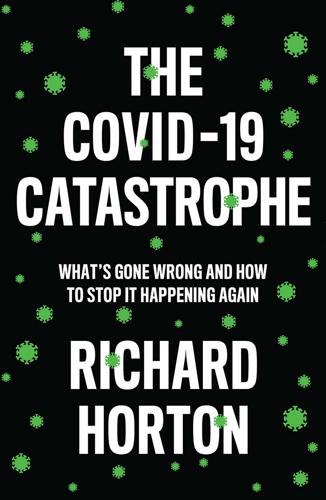
The COVID-19 Catastrophe: What's Gone Wrong and How to Stop It Happening Again
by
Richard Horton
Published 31 May 2020
One or both will almost certainly have to depart their roles before relations can be restored. * I have already discussed the many strange stories of disinformation – the infodemic – that emerged during the crisis of COVID-19. What was even more surprising and unexpected was that governments themselves resorted to political disinformation campaigns in order to defend their own roles in managing the outbreak. These efforts to rewrite the narrative of COVID-19 are important to document. Just as there has been a struggle to contain the outbreak, so there is a struggle to control the way the public views government management of the outbreak.

My Glorious Defeats: Hacktivist, Narcissist, Anonymous: A Memoir
by
Barrett Brown
Published 8 Jul 2024
An article in The Huffington Post announced that Aaron Barr had lost his new job; his boss was quoted explaining that Barr had spent much of his time pursuing Anonymous instead of working. This wasn’t terribly surprising to those of us who had continually dealt with mysterious attacks and disinformation campaigns since February; years later, we would learn how much of this had in fact been state-sponsored. The year 2011 ended as it began, with a sophisticated hack on a state-affiliated corporation that ostensibly dealt in straightforward security and analysis while secretly engaging in black ops campaigns against activists who’d proven troublesome to powerful clients.
…
Palantir also signed a $40 million contract with ICE around the same time. It is indicative of how futile were our efforts to alert the public about these matters back in 2011 that Palantir was not the only one of our old adversaries to have later come up in connection with the various data mining and disinformation campaigns that permeated the 2016 election; it wasn’t even the only one to have done so in tandem with Cambridge Analytica. Archimedes Global—which one may recall from an earlier, wonkier chapter as having teamed up with HBGary Federal and TASC to win a bid for the complex Romas/COIN apparatus funded by the U.S. military—would go on to assist Cambridge Analytica’s parent company, Strategic Communications Laboratories, in developing the methodology that made the 2016 operation possible.
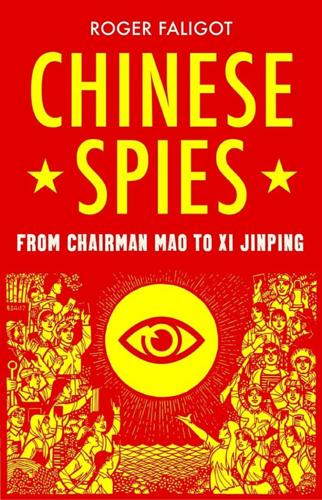
Chinese Spies: From Chairman Mao to Xi Jinping
by
Roger Faligot
Published 30 Jun 2019
At least, that is how I imagined it forty years later on a guided tour of Dixia Cheng, the vast city beneath Beijing that Mao Zedong, Zhou Enlai and Lin Biao built during the Cultural Revolution as protection in the event of a nuclear or chemical attack ordered by the Kremlin. The launch of a vast KGB disinformation campaign in China led to a renewed burst of activity on this vast, secret project. A legendary Russian agent named Victor Louis was, unwittingly, the cause. He wrote regularly for the press in the West, publishing scoops from impeccable sources with the help of his friend Yuri Andropov, the new head of the KGB.
…
Nothing too nasty, but it had been enough to alert military security, which failed to explain how so many email addresses and intranet mailboxes had fallen into the group’s hands. Then the Blondes had downloaded confidential codes, including information on satellite guidance, which was rather more ingenious. In the process, they carried out targeted attacks by erasing databases, followed by disinformation campaigns and bombarding websites to make them freeze—displaying denial of service messages—just as the PLA’s cyber-warriors were doing to other sites. Today, armies and security services in every industrialized country, as well as large private companies, are used to these kinds of attacks, but at the time—the dawn of the internet era, which began around 1995 in Asia—the PLA3’s laboratories could not believe their eyes.
…
On 8 March 2014, Malaysian Airlines Boeing flight MH370, flying from Kuala Lumpur to Beijing, disappeared off the radar with 239 passengers and crew on board, including 153 Chinese nationals. Among the various conspiracy theories, the most frequent was that put forward by Western intelligence services, who accused the much-weakened Guoanbu of a disinformation campaign implicating all outposts of Chinese state media, in particular CCTV television—the first to broadcast it worldwide, before it was taken up by Fox News. This was the false claim that the plane had been brought down in a terrorist attack by the East Turkestan Independence Movement, the Uyghur nationalist movement in Xinjiang, whose spirit had been somewhat broken by the killing of passengers in Kunming station, Yunnan, the week before.5 To back up the rumour, the Chinese services leaked information from Hong Kong that two individuals on the flight had been travelling on fake European passports.
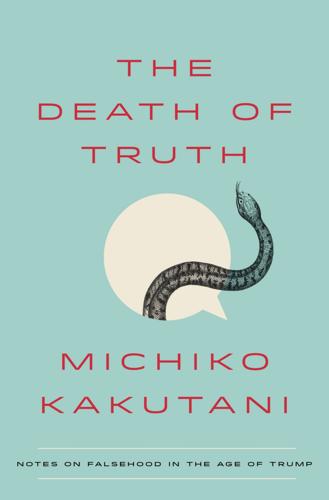
The Death of Truth: Notes on Falsehood in the Age of Trump
by
Michiko Kakutani
Published 17 Jul 2018
These plots were all part of a concerted effort by the Kremlin, stepped up since Putin’s reelection in 2012, to use asymmetrical, nonmilitary means to achieve its goals of weakening the European Union and NATO and undermining faith in globalism and Western democratic liberalism. Toward such ends, Russia has been supporting populist parties in Europe, like Marine Le Pen’s far-right National Front party in France, and has interfered in the elections of at least nineteen European countries in recent years. It also continues to wage disinformation campaigns through state media outlets like Sputnik and RT. In the case of the American election, Facebook told Congress that Russian operatives published some eighty thousand posts on Facebook between June 2015 and August 2017 that might have been seen by 126 million Americans; that’s more than half the number of people registered to vote in the country.
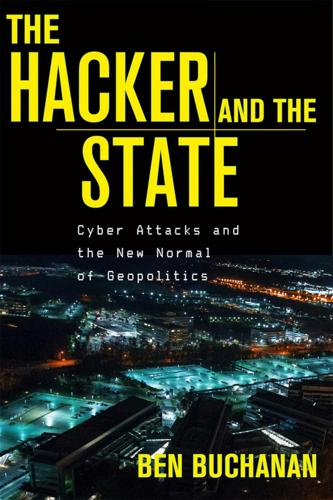
The Hacker and the State: Cyber Attacks and the New Normal of Geopolitics
by
Ben Buchanan
Published 25 Feb 2020
They kept track of online group sizes, frequency of posts, and audience engagement, including comments and other responses. These operatives worked for a nebulous St. Petersburg-based organization known as the Internet Research Agency, the most well-known—but likely not the only—Russian group running disinformation campaigns in the United States.52 Internet Research Agency employees made several trips to the United States in mid-2014 under false pretenses. As early as May 2014, they began discussing the 2016 presidential election as a target.53 In 2016, they posed as Americans and communicated with political activists and organizers in the United States to get a better sense of American politics.
…
Howard, Bharath Ganesh, Dimitra Liotsiou, John Kelly, and Camille François, “The IRA, Social Media and Political Polarization in the United States, 2012–2018,” University of Oxford, Computational Propaganda Research Project, report, December 2018; Kevin Roose, “Is a New Russian Meddling Tactic Hiding in Plain Sight?,” New York Times, September 25, 2018. 21. Gabrielle Lim, Etienne Maynier, John Scott-Railton, Alberto Fittarelli, Ned Moran, and Ron Deibert, “Burned after Reading: Endless Mayfly’s Ephemeral Disinformation Campaign,” Citizen Lab threat research report, May 14, 2019; “Taking Down More Coordinated Inauthentic Behavior,” Facebook corporate communications news release, August 21, 2018; Jack Stubbs and Christopher Bing, “Exclusive: Iran-Based Political Influence Operation–Bigger, Persistent, Global,” Reuters, August 28, 2018. 22.
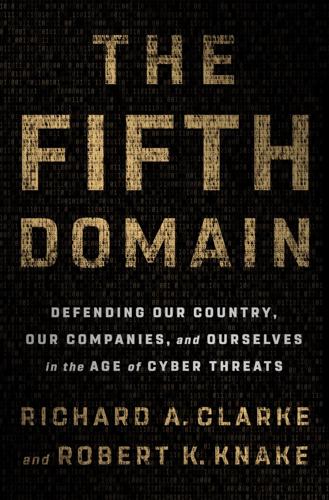
The Fifth Domain: Defending Our Country, Our Companies, and Ourselves in the Age of Cyber Threats
by
Richard A. Clarke
and
Robert K. Knake
Published 15 Jul 2019
To assure a minimum level of scrutiny, Congress should by law require social media to look for and delete bots and foreign entities pretending to be Americans. The Federal Trade Commission, which has a decent record of protecting consumers online, should rise to the challenge and issue regulations governing disinformation campaigns on the internet. While they are at it, Congress should take the minimal step of requiring online political ads to disclose who paid for them, and then ban foreign money from ads supporting candidates or causes. Simon Rosenberg would also have political parties and candidates sign a voluntary and public pledge that they will not use fake personas on social media or engage in the kind of bot and troll operations pioneered by the Russians.
…
GRU: The Main Directorate of the General Staff of the Armed Forces of the Russian Federation. The GRU is a Russian military-intelligence and special-operations service, whose head reports to the Ministry of Defense. The GRU has been responsible for a number of high-profile cyber activities, most notably the hacking and disinformation campaign related to the 2016 U.S. presidential election. Honeypots: Files on a network designed to attract hackers so that their activities and techniques can be observed. Such files are usually populated with data that looks real, but is actually fake. Identity and Access Management (IAM): A class of software used to authenticate network users in order to prevent unauthorized access to data or services.

Green Tyranny: Exposing the Totalitarian Roots of the Climate Industrial Complex
by
Rupert Darwall
Published 2 Oct 2017
The scientific consensus on acid rain, as promulgated by the national academies, turned out to be wrong. In 1972, eminent British scientists had put their name to a document stating that the termination of modern industrial civilization within a lifetime was “inevitable.”48 Nuclear winter had been part of a KGB-inspired disinformation campaign. It amounts to a catalogue of embarrassing failure that, if made by any other profession, would have disqualified its practitioners from being taken seriously in political matters. Like their predecessors after Hiroshima, who had advocated world government, the proponents of the nuclear winter scare ignored the realities of the Cold War.
…
The United States provides the Climate Industrial Complex with firepower that it can get from no other country. Ever since the Rockefeller and other foundations funded the Frankfurt School during its American exile and paid for its return to West Germany, American foundations have been prime funders of environmental alarm, most egregiously when they financed the Soviet disinformation campaign promoting the nuclear winter scare of the mid-1980s. More recently, the Climate Industrial Complex has benefited from the reputational halo and money from the phenomenal success of the American IT industry after Silicon Valley initiated its self-serving civil war against the American hydrocarbon economy.

Ten Arguments for Deleting Your Social Media Accounts Right Now
by
Jaron Lanier
Published 28 May 2018
http://time.com/3923651/meet-the-woman-helping-gamergate-victims-come-out-of-the-shadows/ 10. http://www.zero-books.net/books/kill-all-normies 11. https://transequality.org/the-discrimination-administration 12. https://www.washingtonpost.com/news/acts-of-faith/wp/2016/06/08/trump-on-god-hopefully-i-wont-have-to-be-asking-for-much-forgiveness/ 13. https://www.rawstory.com/2017/03/russians-used-bernie-bros-as-unwitting-agents-in-disinformation-campaign-senate-intel-witness/ 14. https://www.vox.com/policy-and-politics/2018/2/24/17047880/conservatives-amplified-russian-trolls-more-often-than-liberals 15. https://www.wired.com/story/how-trump-conquered-facebookwithout-russian-ads/ 16. Brad Parscale, the Trump campaign’s social media director, tweeted: “I bet we were 100x to 200x her.

Literary Theory for Robots: How Computers Learned to Write
by
Dennis Yi Tenen
Published 6 Feb 2024
Bots sell products or serve in customer service, using a mixture of words typed by humans, scripted or “canned” responses, and novel machine-generated prose. These commercial outputs are meant to produce a positive emotional reaction: “How satisfied were you with this experience? Very satisfied. Somewhat satisfied. Not satisfied.” Other automated agents engage to provoke malice. Consider the covert disinformation campaigns launched globally by Russian military intelligence (GRU). (Note the use of “intelligence” in that sense, too.) A force for bad, its intrusion into public discourse puts my point most starkly: artificial intelligence belongs to a species of political Leviathans, projecting concerted collective action at a distance.
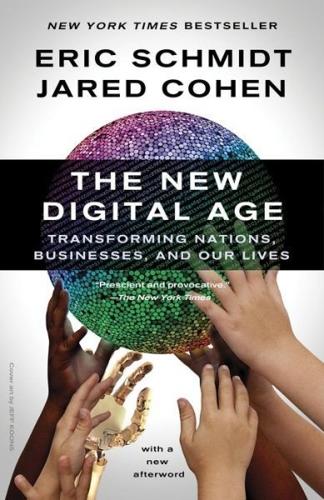
The New Digital Age: Transforming Nations, Businesses, and Our Lives
by
Eric Schmidt
and
Jared Cohen
Published 22 Apr 2013
For the Kurds, who stretch across several countries, this risk would be even more pronounced, as a Kurdish virtual-statehood campaign would be met with resistance from the entire neighborhood, some of whom lack Kurdish populations but would fear a destabilizing effect. No effort would be spared to destroy the Kurdish virtual institutions through low-grade cyber-meddling and espionage, like cyber attacks, disinformation campaigns and infiltration. The populations on the ground would surely bear the brunt of the punishment. The governments would be aided, of course, by the massive amounts of data that these citizens produced, so finding the people involved or supportive of virtual statehood would be easy. Very few secessionist movements have the level of resources and international support that would be required to match this level of counterattack.
…
See antiradicalization counterterrorism, 5.1, 5.2, 5.3, 5.4 criminals, 2.1, con.1 criminal syndicates cross-border weapon-smuggling networks crowd-sourcing Cruise, Tom crystal chips Cuba cultural nuance Currygate cyber attacks, 3.1, 3.2n, 105, 3.3, 5.1, 6.1 lack of attribution in cyber-bullying Cyber Fast Track cybersecurity cyber terrorism, 3.1n, 153–5, 5.1 cyber warfare, itr.1, 3.1 see also Code War Dagan, Meir, n Dalai Lama, 3.1, 3.2 Danger Room blog Danish cartoon controversy data, 1.1, con.1 alleged deletion of databases data-mining, n, 77 data permanence, 2.1, 6.1, 6.2 data remanence data revolution, 2.1, 2.2 deep-packet inspection deep think Def Con Defense Advanced Research Projects Agency (DARPA), 3.1, 5.1, 6.1, 6.2, 6.3 Defense Department, U.S., 5.1, 6.1, 6.2 democracy, 2.1, 2.2 protests in wisdom of crowds in denial-of-service (DoS) attacks, 3.1, 5.1 Der Spiegel, 179 developing countries development diasporas Dictator’s Learning Curve, The (Dobson), 2.1 Digicel DigiNotar digital activism digital currency digital marketing, 6.1, 6.2 digital textbooks digital verification digital watermarking, 2.1, 6.1 diplomacy, itr.1, 2.1 direct attacks disarmament, demobilization and reintegration (DDR) program discretionary power discrimination disease detection disinformation campaigns dissidents, 2.1, con.1 distributed denial-of-service (DDoS attacks), 2.1, 3.1, 3.2, 3.3n, 162, 6.1 DNA, 1.1, 2.1 Dobson, William J. document loss documents domain name system (DNS), 3.1, 3.2 Downey, Tom “driver-assist” approach driverless cars, itr.1, 1.1, 1.2 drones, 5.1, 5.2, 6.1, 6.2, 6.3, 6.4, 6.5, 6.6 drugs, negative reactions to Dubner, Stephen J.
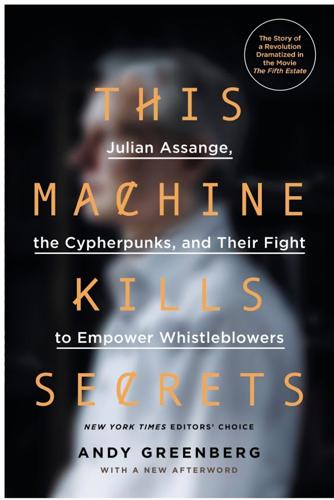
This Machine Kills Secrets: Julian Assange, the Cypherpunks, and Their Fight to Empower Whistleblowers
by
Andy Greenberg
Published 12 Sep 2012
“The CIA would be the most likely $5M funder. Soros is suspected of being a conduit for black money to dissident groups racketeering for such payola,” he wrote bitterly, suggesting that WikiLeaks attempt to raise a hundred million dollars from the CIA instead. “Fuck your cute hustle and disinformation campaign against legitimate dissent. Same old shit, working for the enemy,” Young added, vowing to leak the entire mail list on Cryptome—which he soon did. He signed off, “In solidarity with fuck em all.” Assange responded shortly thereafter. “J., We are going to fuck them all.” Then he unsubscribed John Young from the list.
…
WikiLeaks’ data was hosted in a French data center, Barr said, and its submissions platform by a Swedish firm called PRQ. The security exec suggested “cyber attacks against the infrastructure to get data on document submitters. This would kill the project. Since the servers are now in Sweden and France putting a team together to get access is more straightforward.” The slides went on to suggest a disinformation campaign against WikiLeaks to sow internal dissension, fake submissions to discredit it, and social media analysis to identify the key players in the group. “Need to attack the organization, its infrastructure, and its people,” Barr wrote. HBGary could offer “Computer Network Attack/Exploitation,” “Influence and Deception Operations,” and “Social Media Collection, Analysis, Exploitation,” he concluded.
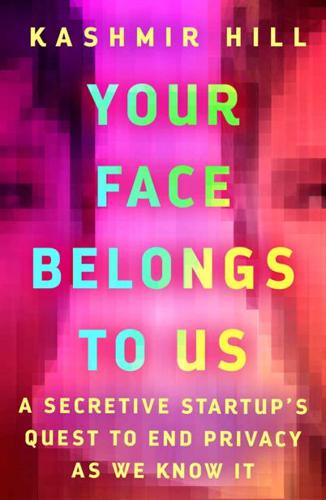
Your Face Belongs to Us: A Secretive Startup's Quest to End Privacy as We Know It
by
Kashmir Hill
Published 19 Sep 2023
That, of course, is not a legal way to vote. At least 4,900 people actually texted the number he provided with Clinton’s name, according to federal prosecutors. “Social Media Influencer Charged with Election Interference Stemming from Voter Disinformation Campaign,” U.S. Department of Justice, January 27, 2021, https://www.justice.gov/opa/pr/social-media-influencer-charged-election-interference-stemming-voter-disinformation-campaign. GO TO NOTE REFERENCE IN TEXT “Right Wing Gossip Squad”: Zanting, “Rudy Giuliani Ex-Advisor Richard Schwartz Worked With the Alt-Right,” AnimeRight News, May 7, 2018, https://web.archive.org/web/20190330154815/https://animeright.news/zanting/rudy-giuliani-ex-advisor-richard-schwartz-worked-with-the-alt-right/.
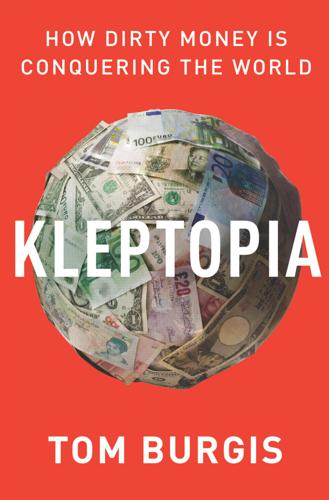
Kleptopia: How Dirty Money Is Conquering the World
by
Tom Burgis
Published 7 Sep 2020
They had the same taste in operatives. Trump selected as his top intelligence official a propagandist called Richard Grenell. ‘A lie gets halfway around the world before the truth even has a chance to get its pants on,’ was the quotation, misattributed to Winston Churchill, atop his firm’s website. The disinformation campaigns Grenell himself had orchestrated underscored the point. Before he served the president, he served private clients with a need for alternative facts – among them ENRC, the Trio’s corporation. As for enemies, Trump and Sasha’s approach suggested they concurred with Nazarbayev: ‘Those who agree with and accept his opinions and stick to the rules are in “his” group.
…
Vogel and Maggie Haberman, ‘Conservative website first funded anti-Trump research by firm that later produced dossier’, New York Times, October 27, 2017, nytimes.com/2017/10/27/us/politics/trump-dossier-paul-singer.html a propagandist: Josh Kovensky, ‘Grenell’s past foreign clients make him unprecedented choice to lead intel community’, Talking Points Memo, February 26, 2020, talkingpointsmemo.com/muckraker/grenells-past-foreign-clients-make-him-unprecedented-choice-to-lead-intel-community ‘A lie gets halfway’ . . . among them ENRC: Archived version of Capitol Media Partners website, services page, web.archive.org/web/20120620093013/http://capitolmediapartners.com/?page_id=7, and clients page, web.archive.org/web/20120620093019/http://capitolmediapartners.com/?page_id=9. The author emailed Capitol Media Partners to ask what Grenell did for ENRC but received no reply disinformation campaigns: Michael Ames, ‘How Trump’s new intelligence chief spread misinformation about Bowe Bergdahl’, Politico, March 11, 2020, politico.com/news/magazine/2020/03/11/richard-grenell-smear-against-bowe-bergdahl-125157 he discovered: David Gerrard and Elizabeth Gerrard v Diligence, particulars of claim, September 6, 2019 Anna Machkevitch: Tabby Kinder, ‘Court date for Hirst collector’, The Times, June 15, 2019, thetimes.co.uk/article/court-date-for-hirst-collector-w2092w006 Benedikt Sobotka: Samuel Rubenfeld, ‘UK drops prosecution of mining executive’, Wall Street Journal, November 6, 2018, wsj.com/articles/u-k-drops-prosecution-of-mining-executive-1541532653 returned to private practice: ‘Former SFO senior prosecutor joins Cohen & Gresser’s London office’, Cohen & Gresser press release, September 2018, sites-cohengresser.vuture.net/8/108/september-2018/jwg-announcement-final.asp?

The Hype Machine: How Social Media Disrupts Our Elections, Our Economy, and Our Health--And How We Must Adapt
by
Sinan Aral
Published 14 Sep 2020
With Russia claiming vociferously that Crimea desired accession, and with the facts on the ground being distorted by fake news, the Obama Doctrine in response to the annexation stopped short of intervening and imposed economic sanctions instead. And today Crimea is part of Russia. As dramatic as the Crimean disinformation campaign was, the social and economic impact of social media on our lives far outstrips any single geopolitical event. This same machinery has a hand in business, in politics, and frankly in everything, from the troubling rise of fake news to the rise and fall of the stock market, from our opinions about politics to what products we buy, who we vote for, and even who we love.
…
The study he was referring to was one I published: Soroush Vosoughi, Deb Roy, and Sinan Aral, “The Spread of True and False News Online,” Science 359, no. 6380 (2018): 1146–51. cauldron of misinformation: Zeke Miller and Colleen Long, “US Officials: Foreign Disinformation Is Stoking Virus Fears,” US News, March 16, 2020; Brooke Singman and Gillian Turner, “Foreign Disinformation Campaign on Fake National Quarantine Trying to Cause Panic, Trump Admin. Officials Say,” Fox News, March 16, 2020. Google, Apple, and MIT developed Bluetooth-based contact tracing systems: Mark Gurman, “Apple, Google Bring Covid-19 Contact-Tracing to 3 Billion People,” Bloomberg, April 10, 2020; Kylie Foy, “Bluetooth Signals from Your Smartphone Could Automate Covid-19 Contact Tracing While Preserving Privacy,” MIT News, April 8, 2020, http://news.mit.edu/2020/bluetooth-covid-19-contact-tracing-0409.
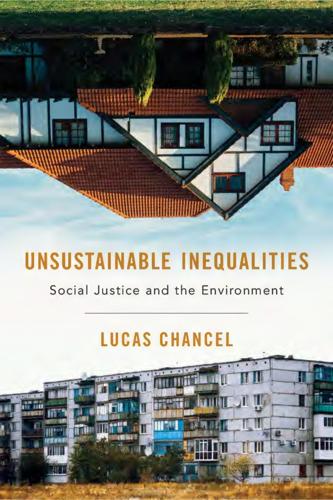
Unsustainable Inequalities: Social Justice and the Environment
by
Lucas Chancel
Published 15 Jan 2020
Exposure to pesticides strongly increases the risk of contracting cancers of the prostate and skin as well as neurodegenerative illnesses such as Parkinson’s disease.14 While the effects of toxic substances on health are now better understood, thanks to advances in medical research, and more effectively counteracted, thanks to new legislation and court rulings, further progress has been hindered by manufacturers that are able to invest massively in large-scale disinformation campaigns. The agrochemical giant Monsanto, however, has already been obliged to pay substantial fines in both France and the United States for deceptive advertising; in addition, thousands of lawsuits—many of which are still pending—have been brought against the company for past and present malfeasance.
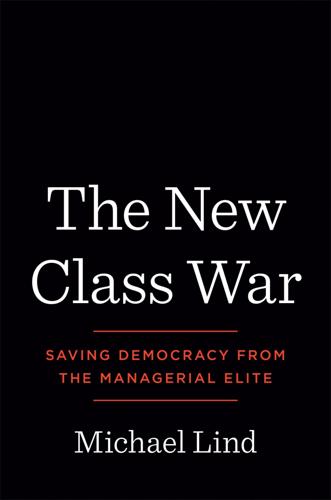
The New Class War: Saving Democracy From the Metropolitan Elite
by
Michael Lind
Published 20 Feb 2020
Let us stipulate that this is all true. It was also true in the 1950s that there really were a small number of communists in the US, including a few high-ranking government officials, who spied for the Soviet Union, as well as many more Soviet sympathizers. There were also genuine Soviet disinformation campaigns in the Cold War West. But only the lunatic fringe of the anticommunist right during the Cold War drew the conclusion that the president was a Soviet agent or that mainstream politicians were secret communists. In contrast, influential members of today’s American establishment, not only marginal conspiracy theorists, in order to absolve Hillary Clinton of blame for losing the 2016 election, have promoted the claim that the forty-fifth US president was installed by a foreign government and does its bidding.

Turning the Tide
by
Noam Chomsky
Published 14 Sep 2015
The President claimed in July 1983 that they had “literally made a contract to establish a true democracy” with the OAS before taking power in July 1979. This claim is without foundation; Roy Gutman observes that this charge, constantly reiterated by apologists for US atrocities, was concocted as part of a “successful U.S. disinformation campaign...According to the OAS, in a July 16, 1979, telex to then General Secretary Alejandro Orfila the Sandinistas said they planned to convoke ‘the first free elections in this century’ but made no reference to timing and said nothing about creating a ‘true democracy’.”71 But although the charge has no merit with regard to the Sandinistas, it does apply to Israel; with considerably more force, in fact.
…
In actual fact, Congress is “out of town” even when it is in town, as the Administration knows very well, and it is not too difficult for a gang of street fighters to ride roughshod over the generally pathetic opposition, which is in fundamental agreement with their objectives despite occasional tactical objections. The attitude of the State authorities towards the public is revealed by what one Reagan official called “a vast psychological warfare operation” designed to set the agenda for debate over Nicaragua: a vast disinformation campaign called “Operation Truth”49—Goebbels and Stalin would have been amused—a campaign that has been quite successful, along with similar operations with regard to Libya, international terrorism, the arms race, and numerous other matters. 2.3 Freedom of Expression in the Real World In the case of Nicaragua, the compliance of elite opinion is revealed very clearly by what is called “the debate” over aid to the contras.

Fancy Bear Goes Phishing: The Dark History of the Information Age, in Five Extraordinary Hacks
by
Scott J. Shapiro
Paras, Josiah, and Dalton were close to finishing their new botnet, and they were preparing to conquer, like European sovereigns in the early modern period. They eliminated rival botnets by having their bots use the Linux “kill” command to remove Qbots, including VDoS’s. They then sealed the devices by closing common ports so no other malware could get a toehold. Paras also prepared the battlefield by launching a disinformation campaign. He opened fake accounts on Facebook and Reddit under a new name, OG_Richard_Stallman. Richard Stallman is the father of open-source software and the person whose account Robert Morris Jr. used to release his worm. Paras would use this handle when trying to extort money from particular DDoS victims (though he continued to use Anna-Senpai when posting on Hack Forums).
…
On June 15, Fancy Bear created the Guccifer 2.0 persona on Twitter and Facebook to throw people off its track. It also created a fake website, DCLeaks.com, to disseminate the information. On July 6, Guccifer 2.0 used WikiLeaks to release the Clinton emails to a wider audience. While the FBI had never seen DDoSers use disinformation campaigns before, it made sense given the times. Disinformation was in the air. When Mirai was released, it spread like wildfire. In its first twenty hours, it infected sixty-five thousand devices, doubling in size every seventy-six minutes. Andrew McGill from The Atlantic magazine set up a fake smart toaster—a so-called honeypot—in his house to see how long it would take Mirai to infect it.

The Illegals: Russia's Most Audacious Spies and Their Century-Long Mission to Infiltrate the West
by
Shaun Walker
Published 15 Apr 2025
Large amounts of space had been added in a postwar reconstruction program, and the building was now a hulking mustard-colored monolith. In June 1954, the Politburo met to discuss how to strengthen the KGB’s operations against the United States and its Western allies, deciding that more emphasis should be placed on so-called active measures, including collecting kompromat on foreign public figures and using disinformation campaigns. The KGB’s leadership also demanded a renewed emphasis on illegal intelligence.[37] The “special directorate,” which handled illegals and later became known simply as Directorate S, drew up plans for its officers to be posted under legal cover to Soviet embassies across the globe. They were to be tasked with obtaining birth certificates, passports, and other identity documents for future illegals
…
.): Soviet/Russian compound in, 261, 270–1, 314 Robert (son of Ishkak Akhmerov), 372–3n13 Rocca, Pascal, 127, 130 Rockefeller, Nelson, 241 Rockefeller Center, 72 Roerich, Nicholas, 368n13 Rolph, David, 386–7n9 Roman Holiday (1953 film), 125 Romania: Jewish émigrés from, 218 Romeo spies, 229–30 Roosevelt, Franklin, 68, 108 Rosenberg, Ethel, 112, 138 Rosenberg, Julius, 112, 138 Rudenko, Anatoly, 240–1 Rudé právo, 201 Rudi, see Valoušek, Dalibor Russia: 9/11 attacks and, 319 annexation of Crimea by, 339, 340, 346 disinformation campaigns by, 339–43 foreign agents in, 326–7. See also Poteyev, Alexander historical revisionism in, 346 illegals program of, see Russian illegals program intelligence agencies of, see FSB; GRU; SVR interference in U.S. election (2016) by, 338, 341–3 invasion of Ukraine (2022) by, 9–10, 352–3 mythologization of illegals by, 346–9 post-Soviet struggles of, 304–5 prisoner exchanges between West and, 333, 356 protests against Putin in, 338–9 relations between U.S. and, 329 relations between West and, 353 Russian Civil War, 20, 22, 33 Russian illegals program: in 1990s, 304, 315 in 2000s, 321–3 2017 revival of, 344–5 after invasion of Ukraine, 10, 353–7 Poteyev defection and, 335–6 Putin’s support of, 5, 9–10, 321, 329–30, 344–5 relevance of today, 357–8 U.S. operations of, 313–16 in virtual sphere, 336.
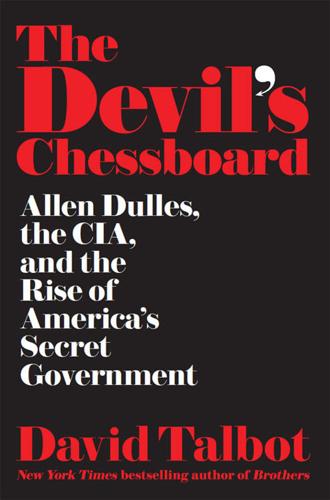
The Devil's Chessboard: Allen Dulles, the CIA, and the Rise of America's Secret Government
by
David Talbot
Published 5 Sep 2016
Fletcher Prouty, The Secret Team: The CIA and Its Allies in Control of the United States and the World (New York: Skyhorse Publishing, 2008), 368. 251Arbenz was showered with abuse: “Guatemala: Battle of the Backyard,” Time, Sept. 20, 1954. 252Hunt claimed that he had spread the word: Ann Louise Bardach, “Scavenger Hunt,” Slate, Oct. 6, 2004. 252“They were trying to break him down”: Author interview with Erick Arbenz. 253The agency’s disinformation campaign began immediately: See Roberto Garcia Ferreira, “The CIA and Jacobo Arbenz: History of a Disinformation Campaign,” Journal of Third World Studies 25, no. 2 (Fall 2008): 59–81. 254The tragedy was “trapped in his head”: Ibid. 254Hunt . . . continued to track closely the man: Ann Louise Bardach, “Scavenger Hunt.” 255Arbenz’s beloved daughter, Arabella: Rich Cohen, The Fish That Ate the Whale: The Life and Times of America’s Banana King (New York: Macmillan, 2012), 206. 256But Maria Arbenz always believed that her husband had been assassinated: Author interview with Erick and Claudia Arbenz. 257Jacobo and Maria Arbenz were the Kennedys of Guatemala’s fledgling democracy: Piero Gleijeses, Shattered Hope: The Guatemalan Revolution and the United States, 1944–54 (Princeton, NJ: Princeton University Press, 1991), 134–47. 259The powerful influence of the United Fruit Company: Stephen Schlesinger and Stephen Kinzer, Bitter Fruit: The Story of the American Coup in Guatemala (Cambridge, MA: Harvard University Press, 2005), 102–7. 260Foster made a discreet tour of Central America: Peter Chapman, Bananas: How the United Fruit Company Shaped the World (Edinburgh: Canongate, 2007), 84–85. 260a “Communist-type reign of terror”: New York Times, June 16, 1954. 261Dulles assembled his Guatemala task force in the White House: David Atlee Phillips, The Night Watch (New York: Atheneum, 1977), 49–51. 262an “opéra bouffe”: New York Times, June 22, 1954. 262Arthur Hays Sulzberger was extremely accommodating: New York Times, June 7, 1997. 263the CIA had no qualms about compiling a “disposal list”: Kate Doyle and Peter Kornbluh, eds., “CIA and Assassinations: The Guatemala 1954 Documents,” National Security Archive, http://www2.gwu.edu/~nsarchiv/NSAEBB/NSAEBB4/. 264the CIA began pressuring him to purge Guatemala: Stephen M.
…
The CIA was afraid of him—an educated, articulate reformer who had stood up to the local elite and the U.S. government. He was a big threat to these powerful interests.” For the rest of the exiled Guatemalan leader’s life, the CIA was determined to strip away whatever shred of respectability still clung to him. The agency’s disinformation campaign began immediately after Arbenz’s downfall, with a stream of stories planted in the press—particularly in Latin America—alleging that he was a pawn of Moscow, that he was guilty of the wholesale butchery of political foes, that he had raided his impoverished country’s treasury, that he was sexually captivated by the man who was the leader of the Guatemalan Communist Party.

On Power and Ideology
by
Noam Chomsky
Published 7 Jul 2015
Hysteria reached a still higher peak when Nicaragua conducted elections described by the professional association of U.S. Latin America scholars (LASA) as remarkably open and honest despite massive U.S. efforts to undermine them, including pressures on the business-based opposition and a disinformation campaign about the delivery of MIG aircraft, carefully timed to remove the elections from the news; it is, of course, taken for granted across the political spectrum that if Nicaragua were to obtain aircraft to defend its national territory from a U.S. assault, that would be an intolerable offense, justifying bombing of Nicaragua, as Senatorial doves warned.

WTF?: What's the Future and Why It's Up to Us
by
Tim O'Reilly
Published 9 Oct 2017
Finally, it’s essential to realize that search engines and social media platforms are the battlefield of an online war, with hostile attackers using the same tools that were originally developed by advertisers to track their customers, and then by scammers and spammers to game the system for profit. In addition to the Russian-sponsored social media disinformation campaigns, the Trump campaign’s Project Alamo used highly targeted disinformation to discourage Clinton voters from going to the polls. These posts were referred to as “dark posts” by Brad Parscale, who led the campaign’s social media efforts, private posts whose viewership is tightly targeted so that, as he put it, “only the people we want to see it, see it.”
…
Here’s What We Learned,” NPR All Tech Considered, November 23, 2016, http://www.npr.org/sections/alltechconsidered/2016/11/23/503146770/npr-finds-the-head-of-a-covert-fake-news-operation-in-the-suburbs. 199 “a pretty crazy idea”: Aarti Shahani, “Zuckerberg Denies Fake News on Facebook Had Impact on the Election,” NPR All Tech Considered, November 11, 2016, http://www.npr.org/sections/alltech considered/2016/11/11/501743684/zuckerberg-denies-fake-news-on-face book-had-impact-on-the-election. 200 hyperpartisan stories shown to each group: “Blue Feed/Red Feed,” Wall Street Journal, May 18, 2016, updated hourly, retrieved March 31, 2007, http://graph ics.wsj.com/blue-feed-red-feed/. 200 video claiming that her aide Huma Abedin: “Huma Kidding?,” Snopes.com, November 2, 2016, http://www.snopes.com/huma-abedin-ties-to-terrorists/. 201 planted or amplified by Russia: Joseph Menn, “U.S. Government Loses to Russia’s Disinformation Campaign,” Reuters, December 21, 2016, http://www.reuters.com/article/us-usa-russia-dis information-analysis-idUSKBN1492PA. 201 the week after his dismissive comments: Mark Zuckerberg, Facebook post, November 12, 2016, https://www.facebook.com/zuck/posts/10103253901916271. 202 autocomplete for “Jews are . . .”: Carole Cadwalladr, “Google, Democracy and the Truth About Internet Search,” Guardian, December 4, 2016, https://www.theguardian.com/technology/2016/dec/04/google-democracy-truth-internet-search-facebook. 203 again topped by a page from Stormfront: Carole Cadwalladr, “How to Bump Holocaust Deniers off Google’s Top Spot?
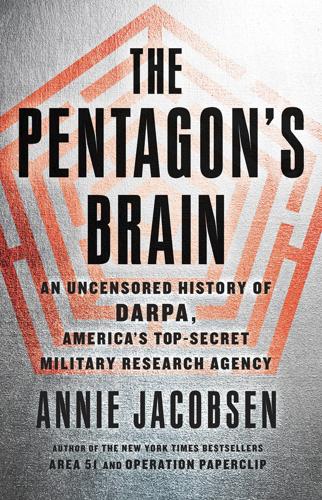
The Pentagon's Brain: An Uncensored History of DARPA, America's Top-Secret Military Research Agency
by
Annie Jacobsen
Published 14 Sep 2015
A few nights later, ABC News reported that the ringleader of the 9/11 hijackers, Mohammed Atta, “had met at least once with a senior Iraqi intelligence agent in Prague.” The report kicked off a firestorm of related news articles, including some that confirmed the story of the Iraq link, some that discredited the story, and some that blamed the CIA for engaging in a disinformation campaign. Congress asked DARPA director Anthony Tether to brief the House Armed Services Committee on efforts currently being undertaken by DARPA with regard to its Biological Warfare Defense Program. Tony Tether had been DARPA director for only three months when the airplanes hit the buildings, but he had decades of experience in the Department of Defense and the CIA.
…
Apple, “A Nation Challenged: News Analysis; City of Power, City of Fears,” New York Times, October 17, 2001. 16 DARPA was asked: Interview with Michael Goldblatt, April 2014. 17 “a little bit of pride”: Ibid. 18 “There had been”: Quotes are from Cheney, 341. 19 “a virtually zero rate”: Vin LoPresti, “Guarding the Air We Breathe,” Los Alamos National Laboratory Research Quarterly (Spring 2003), 5, Science and Technology Review, October, 2003; Arkin, 288n. 20 “Go call Hadley”: Rice, 101. 21 In New York City: Cheney, 340–42. 22 “Feet down”: Rice, 101. 23 additive called bentonite: ABC News, World News Tonight, October 26, 2001. 24 “Iraqi intelligence agent in Prague”: ABC News, This Week, October 28, 2001. 25 disinformation campaign: William Safire, “Mr. Atta Goes to Prague,” New York Times, May 9, 2002. 26 indication of his significance: Anthony Tether, biography, AllGov.com. 27 five stages: Tether, Statement to Congress, March 19, 2003. 28 nearly three times: FY 2003 budget estimates, determined in February 2002. 29 “Kenneth Alibek”: “George Mason University Unveils Center for Biodefense: Scientists Kenneth Alibek, Charles Bailey to Direct,” press release, George Mason University, February 14, 2002. 30 “prototype biodefense products”: PRNewswire, Analex Corporation, May 1, 2002. 31 $60: “National Security Notes,” March 31, 2006, GlobalSecurity.org. 32 Al Qaeda spent: 9/11 Commission Report, 169.
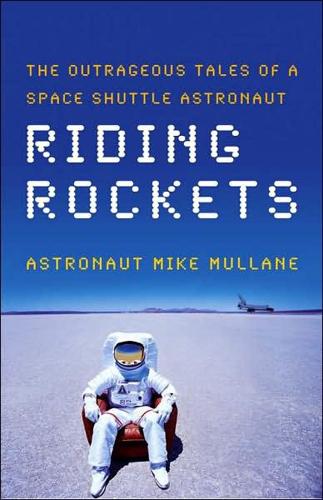
Riding Rockets: The Outrageous Tales of a Space Shuttle Astronaut
by
Mike Mullane
Published 24 Jan 2006
But the liftoff date—originally scheduled for spring 1986—was slipping to the right. The new Vandenberg launchpad and launch control center had to be finished and checked out. The State Department had to complete its negotiations to secure shuttle abort landing rights on Easter Island’s runway, a task being made more difficult by a Soviet Union disinformation campaign that shuttle operations would destroy the island’s stone figures. The Soviets understood that most of the payloads carried out of Vandenberg would be spying on them and were doing their best to lay down obstacles. STS-62A’s slippage provided time for me to pull other duties, including several missions as a CAPCOM.
…
He lifted the flowers to his mouth like a microphone and began to speak loudly into their blooms: “Mike, wasn’t that briefing about our new F-99 Mach 7 fighter really interesting?” Then he handed the vase to me. I joined in the fun. “Yeah, and to think Mach 7 is itssingle -engine speed.” The others at the table picked up on our disinformation campaign and the vase of flowers went from hand to hand while the rest of our group made even more outrageous claims about secret weapon systems we had recently seen or flown. Meanwhile, the humorless commie diners stared at us as if we were mad. Since we were talking into daffodil blooms, I could understand their bewilderment.
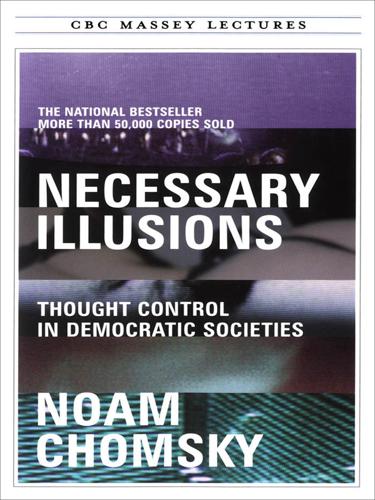
Necessary Illusions
by
Noam Chomsky
Published 1 Sep 1995
Nor were conclusions drawn about the conscious media collusion in this act of large-scale terrorism, which goes well beyond what is sampled here.25 In this case too, the discipline of the specialized class has been impressive throughout, particularly when we bear in mind that the media had been subjecting themselves to disinformation campaigns concerning Libya from the first months of the Reagan administration,26 recognizing each time that they had been “fooled,” but eagerly returning to savor the experience on the next round. For 1986 too the United States appears to win the prize for international terrorism, even apart from the wholesale terrorism it sponsors in Central America, including what former CIA director Stansfield Turner describes as our “state-supported terrorism” in Nicaragua.27 The full range of terrorist actions by the United States and its clients in the 1980s is remarkable.
…
Though no credible information about the terror attack at the disco has been forthcoming, suspicions have been voiced in Germany that the bombing at this Third World bar, killing a Turkish woman and a Black GI (later a second Black American soldier died), may have been drug-related or even perhaps a Klan operation. 26. The first exposure of a “disinformation” campaign was in Newsweek, Aug. 3, 1981. 27. Turner, testimony before House Subcommittee on Western Hemispheric Affairs, April 16, 1985, cited by Peter Kornbluh in Walker, Reagan vs. the Sandinistas. 28. Fred Barnes, TNR, May 30, 1988; editorial, TNR, April 2, 1984. For a longer excerpt see Turning the Tide, 167-68; and notes, on the efforts by editor Hendrik Hertzberg to evade the facts.

Nexus: A Brief History of Information Networks From the Stone Age to AI
by
Yuval Noah Harari
Published 9 Sep 2024
We might make honest mistakes in gathering and processing the information. Malicious actors motivated by greed or hate might hide important facts or try to deceive us. As a result, information sometimes leads to error rather than truth. For example, partial information, faulty analysis, or a disinformation campaign might lead even experts to misidentify the true cause of a particular disease. However, the naive view assumes that the antidote to most problems we encounter in gathering and processing information is gathering and processing even more information. While we are never completely safe from error, in most cases more information means greater accuracy.
…
.: Praeger, 1995); Raffaella Perin, The Popes on Air: The History of Vatican Radio from Its Origins to World War II (New York: Fordham University Press, 2024). 110. Jaroslav Hašek, The Good Soldier Švejk, trans. Cecil Parrott (London: Penguin, 1973), 258–62, 280. 111. Serhii Plokhy, Atoms and Ashes: A Global History of Nuclear Disaster (New York: W. W. Norton, 2022); Olga Bertelsen, “Secrecy and the Disinformation Campaign Surrounding Chernobyl,” International Journal of Intelligence and CounterIntelligence 35, no. 2 (2022): 292–317; Edward Geist, “Political Fallout: The Failure of Emergency Management at Chernobyl,” Slavic Review 74, no. 1 (2015): 104–26; “Das Reaktorunglück in Tschernobyl wird bekannt,” SWR Kultur, April 28, 1986, www.swr.de/swr2/wissen/archivradio/das-reaktorunglueck-in-tschernobyl-wird-bekannt-100.html. 112.

When Things Start to Think
by
Neil A. Gershenfeld
Published 15 Feb 1999
45 The Personal Fabricator 63 Smart Money 77 WHY Rights and Responsibilities 95 Bad Words 107 Bit Beliefs 123 Seeing Through Windows 13 7 viii + CONTENTS HOW The Nature of Computation 151 The Business of Discovery 169 Information and Education 185 Things That Think 199 Afterword 215 Index 217 Preface I have a vested interest in the future, because I plan on living there. I want to help create one in which machines can meet the needs of people, rather than the other way around. As more and more gadgets demand our attention, the promises of the Digital Revolution start to sound more like those of a disinformation campaign. A counterrevolution seeks to protect our freedom to not be wired. But rather than ask whether reading is better done with a book or a computer, I want to show how to merge the best features of each. This modest aim has radical implications, and regrettably little precedent. Putting ink on paper, and data on a CD-ROM, are separated by a divide between the old analog world of atoms and the new digital world of bits.
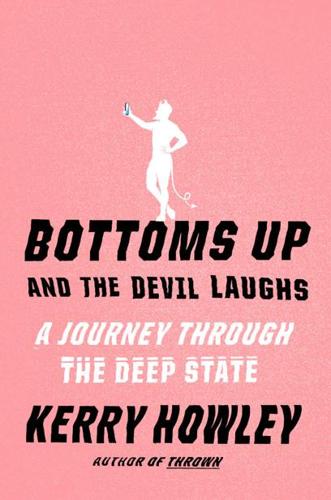
Bottoms Up and the Devil Laughs
by
Kerry Howley
Published 21 Mar 2023
One could find what appeared to be CNN photos and local news clips documenting the event, and a Wikipedia page referring back to these news clips, though there had been no explosion. If you had said then that government-backed Russians were behind this, and they were practicing for a much larger disinformation campaign that would aid in the election of a reality TV star with narcissistic personality disorder, you would have sounded deeply unwell. You probably would have been. A prophet of sound mind is no prophet at all. Just look at the can, is what I am saying. You cannot deny that that is a cross.
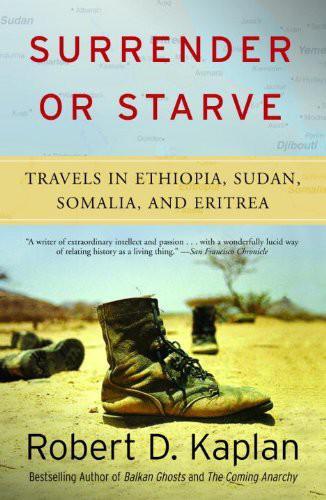
Surrender or Starve: Travels in Ethiopia, Sudan, Somalia, and Eritrea
by
Robert D. Kaplan
Published 1 Jan 1988
Moscow used its entrée to develop ties within the Somali officers' corp. In 1969 came General Siad Barre's coup, which the Kremlin very well may have had a hand in, and Soviet-Somali relations blossomed. Soon U.S. Peace Corps volunteers were being stoned in the streets of the Somali capital of Mogadishu thanks to a Soviet disinformation campaign. Between 1970 and 1975, the Somali army was increased from twelve thousand to twenty-three thousand soldiers. The Soviets supplied hundreds of tanks and fifty-five combat aircraft. The presence of ethnic Somalis in Ethiopia's Ogaden desert made Somalia an irredentist state, and the Soviets obviously were taking advantage of Siad Barre's dreams of conquest and a Great Somalia.

Everything Under the Sun: Toward a Brighter Future on a Small Blue Planet
by
Ian Hanington
Published 13 May 2012
If this is the most “ethical” source of oil we can find, we need to ask other questions about the moral purity of our intensively processed bitumen. For example, if we sell the oil to countries with poor human-rights records, like China, does that affect the product’s “ethical” nature? And how “ethical” are the companies operating in the tar sands; for example, Exxon Mobil, well-known sponsor of climate-change disinformation campaigns; BP, responsible for the massive oily disaster in the Gulf of Mexico in 2010; or Petro-China? There’s also the effect of greenhouse gas emissions on our children and grandchildren, which, to me, is an intergenerational crime. In this light, wouldn’t energy from technologies or sources that limit the greenhouse gas emissions that contribute to climate change and that have minimal environmental and health impacts be far more ethical than fossil fuels?
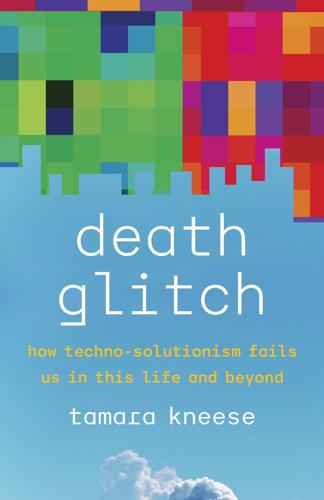
Death Glitch: How Techno-Solutionism Fails Us in This Life and Beyond
by
Tamara Kneese
Published 14 Aug 2023
In 2019, for instance, researchers from the Oxford Internet Institute predicted that 1.4 billion dead users would be on Facebook by 2100—that is, if Facebook and humanity are still here—and dead users will outnumber the living by 2070.50 Such statistics are regularly cited in the media, creating buzz around Facebook’s ever-growing graveyard, even if such calculations are merely speculative. Facebook boasts 2.7 billion users and extends to nearly every part of the globe, not only structuring people’s social interactions but also playing a role in disinformation campaigns, right-wing violence, and, in cases like the targeting of the Rohingya in Myanmar, genocide.51 For many reasons, Facebook is a symbol of unchecked corporate greed and a dire need for new antitrust regulation.52 Conversely, Facebook’s size and relative longevity have also made it a conspicuous site for mourning and memorialization; as more people use Facebook, more of them die and leave their profiles behind.
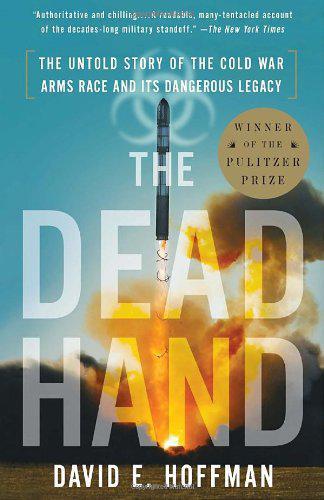
The Dead Hand: The Untold Story of the Cold War Arms Race and Its Dangerous Legacy
by
David Hoffman
Published 1 Jan 2009
According to Garthoff, the FBI fed disinformation to the Soviets that the United States was undertaking a clandestine BW program. See Garthoff, "Polyakov's Run," Bulletin of the Atomic Scientists, vol. 56, no. 5, September/October 2000, p. 37. It is known there was a disinformation campaign for chemical weapons, which is described by David Wise in Cassidy's Run: The Secret Spy War over Nerve Gas (New York: Random House, 2000). Details of a disinformation campaign on BW are not known. CHAPTER 5: THE ANTHRAX FACTORY 1 Jonathan B. Tucker and Raymond A. Zilinskas, "The 1971 Smallpox Epidemic in Aralsk, Kazakhstan, and the Biological Warfare Program." The paper includes "An Epidemiological Analysis of the 1971 Smallpox Outbreak in Aralsk, Kazakhstan," by Alan P.

Facebook: The Inside Story
by
Steven Levy
Published 25 Feb 2020
The IRA ads were only around $100,000 total, spent over the course of eight months. Goldman, though, recognizes that those figures, and the technological blind spot, in no way excused the oversight. After the revelation about the IRA, Goldman became obsessed with the subject of Russian disinformation campaigns, which were referred to by its intelligence agencies as “active measures.” “I became a bit of a Russian scholar,” he says. He read history and shared findings, such as the memoir of KGB defector Oleg Kalugin, with what had become kind of a masochistic book club of Facebook executives belatedly learning what they should have been paying attention to earlier.
…
I was very worried we were going to miss a bunch.” She says that she usually takes an August vacation, but in 2017 she canceled it to deal with the issue. “I had plans I blew up,” she says. It was September when the company prepared to inform the public that Facebook had been a staging ground for a Russian disinformation campaign designed to help elect Donald Trump. (A charge made more volatile because of the revelations coming out of the Special Counsel’s Office and press accounts that the Trump campaign had frequent contact with the Russians and, as the final Mueller Report concluded, “welcomed” the interference.)
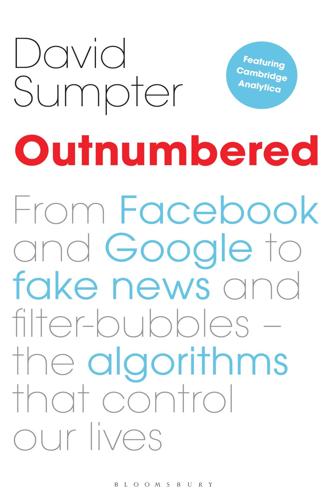
Outnumbered: From Facebook and Google to Fake News and Filter-Bubbles – the Algorithms That Control Our Lives
by
David Sumpter
Published 18 Jun 2018
He wasn’t particularly candid when I asked him questions about what they do, but he was keen to tell me one thing: ‘The algorithms Facebook uses are criminal in my opinion, slanted and manipulated, and not always for the right reasons or to benefit the users.’ Apparently, it isn’t as easy as it used to be to spread racism, misogyny and intolerance on social media. Disinformation and fake news have become a prominent feature of all elections. Two days before the French presidential election in 2017, an online disinformation campaign took off around the hashtag #MacronLeaks. Computer hackers had broken into the Emmanuel Macron campaign’s email accounts and posted the contents online. On Twitter, the #MacronLeaks campaign aimed to make sure that people knew about the hack and to create maximum uncertainty about the contents of the leak.
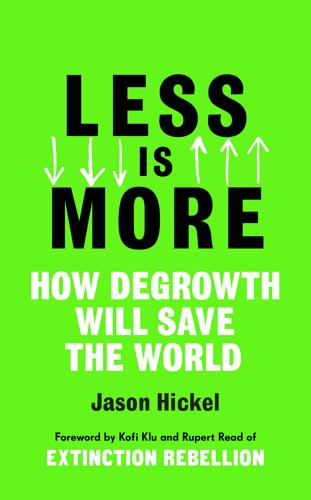
Less Is More: How Degrowth Will Save the World
by
Jason Hickel
Published 12 Aug 2020
Some of the larger companies, despite knowing about the dangers of climate breakdown long before it was part of the public debate, have bankrolled politicians who have either denied the science outright or sought to obstruct meaningful action whenever possible. It is in large part thanks to their efforts that the international climate treaties are not legally binding, for they have lobbied vigorously against such a move. And they have waged an extraordinarily successful disinformation campaign that for decades eroded public support for climate action, particularly in the United States, the one country that could feasibly lead a global transition. Fossil fuel companies, and the politicians they have bought, bear significant responsibility for our predicament. But this alone doesn’t explain our failure to act.

How to Fix the Future: Staying Human in the Digital Age
by
Andrew Keen
Published 1 Mar 2018
It has been held responsible for interfering with the 2016 US presidential election.23 Things have got so bad in this onslaught of fake news that in 2015 the European Union set up East Stratcom, its own eleven-person team to defend the Continent against fake news. Recent online lies have included the Swedish government’s support of the Islamic State and EU’s plans to regulate snowmen. Created by the EU to address, in its words, “Russia’s ongoing disinformation campaigns,” East Stratcom has discredited twenty-five hundred stories in the sixteen months since its establishment.24 A year after I met Ilves, I was invited to speak at the St. Petersburg Economic Forum, often dubbed the Russian Davos, on a panel about government policy toward data. The panel, which included two of Putin’s most senior advisors on digital policy, was addressing the question: “Is big data a natural asset or a commodity?”
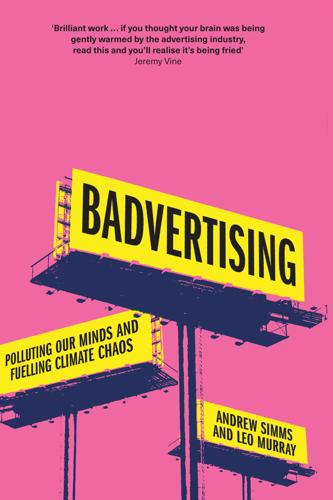
Badvertising
by
Andrew Simms
Tobacco misuse and lung carcinoma, by Franz Hermann Muller of the University of Cologne, was one of the first major reports to find a strong link between smoking and lung cancer.7 That was 1939. The truth had to wait another decade before British researchers like Doll and Austin Bradford Hill – and American researchers like Dr Ernst Wynder – began to make these connections again. Because of powerful, coordinated and cynical disinformation campaigns by the tobacco industry doubts were perpetuated long after the evidence was convincing, even among doctors many of whom were smokers. So there was never a single ‘Eureka’ moment of consensus. But already by 1954 the message was somehow getting through, even to the public. A poll in the USA found that 41 per cent of the general public believed that smoking caused lung cancer.8 Yet for some reason, in the UK in particular, it was the 1962 report Smoking and Health which had really gripped the public.

Insane Mode: How Elon Musk's Tesla Sparked an Electric Revolution to End the Age of Oil
by
Hamish McKenzie
Published 30 Sep 2017
Eberhard told Fortune that he had no issues with Tesla as a company but he did “have problems with Elon and the way he treats people.” Musk didn’t respond warmly. “I was too busy trying to fix the fucking mess he left,” he told the magazine, explaining why he hadn’t yet told his side of the story. “I will say, I have never met someone who is as capable of creating such a disinformation campaign as Martin Eberhard.” In November 2008, Eberhard told Newsweek that he thought Musk was a “terrible CEO.” Musk responded by saying that “Martin is the worst individual I’ve ever had the displeasure of working with.” The dispute culminated in a legal tangle. In May 2009, Eberhard sued Musk and Tesla for slander.

Black Code: Inside the Battle for Cyberspace
by
Ronald J. Deibert
Published 13 May 2013
(A similar assault had been inflicted on Estonia a year earlier, when that country’s leaders made the unpopular decision to relocate the Bronze Soldier of Tallinn, an elaborate Soviet-era war memorial, along with the remains of Soviet soldiers.) Desperate to stem the attacks, and hoping to counter Russia’s disinformation campaign, the Georgian government censored access to all Russia-based websites. Accustomed to seeing Russian news online, and unaware of the decision taken by their government, Georgians in the capital city of Tbilisi panicked, fearing that the blackout presaged a massive Russian ground assault. Rumours quickly spread of tanks approaching the outskirts of the city.
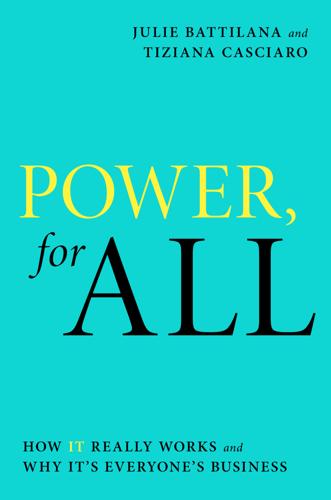
Power, for All: How It Really Works and Why It's Everyone's Business
by
Julie Battilana
and
Tiziana Casciaro
Published 30 Aug 2021
What is at stake, therefore, is our ability, and our children’s, to think critically and decide for ourselves what we want and how to behave.40 History has taught us that preserving this ability is critical in the face of propaganda and power concentration. In the digital era, it is particularly crucial as we grapple with deep fakes, fake news, and coordinated disinformation campaigns aimed at altering the very basis of reality. Yet concentrations of power are not immutable. It is always up to us to agitate, innovate, and orchestrate to change the power hierarchy, as many Google employees have shown us. CURBING THE POWER OF BIG TECH In March 2018, it came to light that Google had entered into a contract with the U.S.
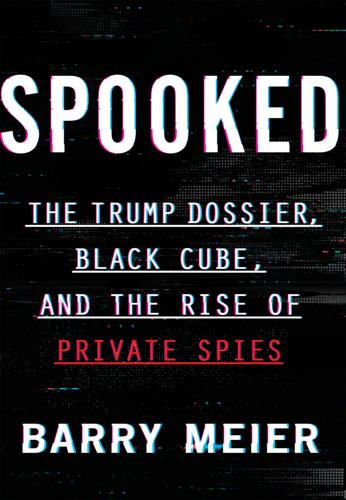
Spooked: The Trump Dossier, Black Cube, and the Rise of Private Spies
by
Barry Meier
Published 17 May 2021
And when you think about Christopher Steele, the retired British intelligence agent calling his buddies who called their buddies in Moscow to get this information, the FSB is certainly capable of following those trails and polluting them with certain disinformation.” Shane went on to say that it was possible that Kremlin operatives, while focusing the brunt of their disinformation campaign against Hillary Clinton, might have hedged their bets by planting dirt about Trump and his associates. A former CIA spy on the same panel suggested that Shane had let his imagination run wild. “I mean anything is possible, you are absolutely right,” she said. Then she recited the mantra that believers in the dossier would repeat again and again in years ahead.
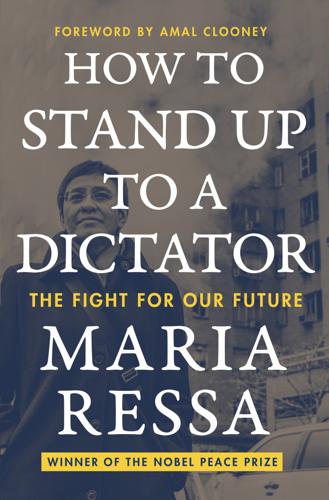
How to Stand Up to a Dictator
by
Maria Ressa
Published 19 Oct 2022
Rappler chronicled how a combination of bots and fake accounts had suddenly shut down the entire #SmartFreeInternet online campaign: when someone used the hashtag, it would signal to a bot or fake account to automatically message you something negative. That drew on an old strategy popularized in the computer industry in the United States in the 1990s—mostly by computer companies like IBM and Microsoft targeting their competitors—known as “fear, uncertainty, and doubt,” or FUD. The disinformation campaign spread negative information and lies to fuel fear. The conversation we mapped online reminded us of the Communist strategy “Surround the city from the countryside”: it effectively cut off Smart’s Twitter account from its targeted millennial audience. “Some corporations, interest groups, and governments are mobilizing fictitious social media resources at scale to disrupt other legitimate uses of these platforms,” we wrote in the article.
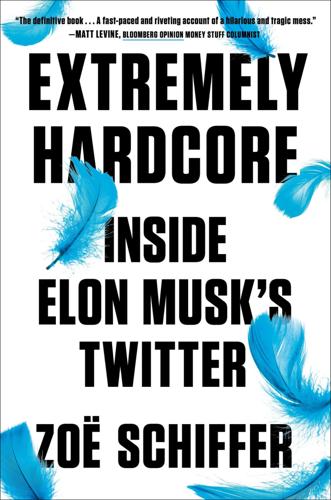
Extremely Hardcore: Inside Elon Musk's Twitter
by
Zoë Schiffer
Published 13 Feb 2024
“Rather than being shown verified and fact-checked information, X users were presented with video game footage passed off as footage of a Hamas attack and images of firework celebrations in Algeria presented as Israeli strikes on Hamas,” wrote David Gilbert in Wired. “There were faked pictures of soccer superstar Ronaldo holding the Palestinian flag, while a three-year-old video from the Syrian civil war repurposed to look like it was taken this weekend.” It wasn’t clear who was behind the disinformation campaigns—but researchers noted that the tactics were consistent with prior campaigns out of Iran. Musk promoted two Twitter accounts known for spreading disinformation as credible news sources for the crisis. He deleted the tweet hours later, after it was viewed eleven million times. As the violence unfolded, researchers manually tracked and debunked viral disinformation, a project made more difficult by the fact that Musk had cut off free API access and recently eliminated headlines from news articles.
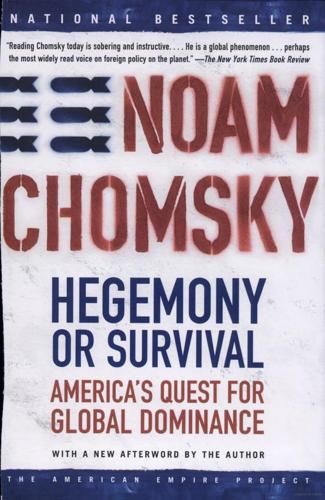
Hegemony or Survival: America's Quest for Global Dominance
by
Noam Chomsky
Published 1 Jan 2003
Andrew Bacevich, American Empire (Harvard, 2003), pp. 200ff. 8. M. J. Crozier, S. P. Huntington, and J. Watanuki, The Crisis of Democracy (New York University, 1975), report to the Trilateral Commission. 9. Randal Marlin, Propaganda and the Ethics of Persuasion (Broadview, 2002). 10. For a discussion of this vast disinformation campaign, see my Culture of Terrorism (South End, 1988) and Necessary Illusions (South End, 1989), which draw particularly on the important but mostly neglected exposés by Alfonso Chardy of the Miami Herald and later official sources. 11. On the narrow limits of permitted discussion, see my Necessary Illusions.
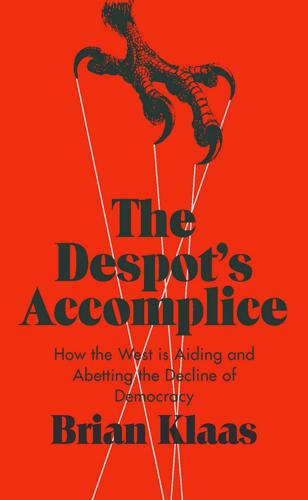
The Despot's Accomplice: How the West Is Aiding and Abetting the Decline of Democracy
by
Brian Klaas
Published 15 Mar 2017
But it is to say that any positive aspects of these two models are overshadowed by serious drawbacks and shortcomings. Beijing and Moscow are aware of these flaws. That’s why most of China’s and Russia’s diplomatic methods for spreading their respective models rely on some form or propaganda or disinformation campaign. â•… If you switch on your television in just about any hotel room these days, you’ll be able to watch propaganda straight out of the Kremlin on Russia Today, now re-branded just as RT to subtly obscure its funding source. The programming is specifically designed to parry Western accounts of global news, spinning each story as Putin would hope to see it covered.
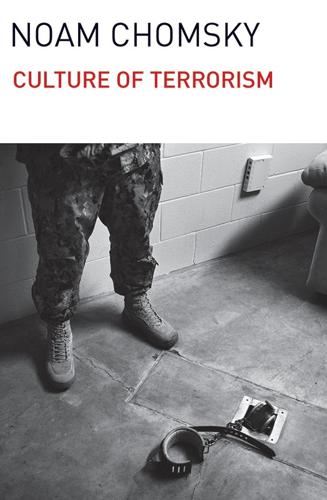
Culture of Terrorism
by
Noam Chomsky
Published 19 Oct 2015
But at a deeper level, the immediate public response illustrates the insight of the 18th century European Enlightenment that the value and meaning of freedom are learned through its exercise, and that the instinctive desire of “all free peoples to guard themselves from oppression” (Rousseau) may be repressed among a subordinated population, effectively removed from the political system, disengaged from the struggle against state and other authority, and in general, objects rather than agents.2 In the absence of organizational forms that permit meaningful participation in political and other social institutions, as distinct from following orders or ratifying decisions made elsewhere, the “instinct for freedom” may wither, offering opportunities for charismatic leaders to rally mass popular support, with consequences familiar from recent history. The attitude of the state authorities towards the public is revealed still more clearly by what one Reagan official called “a vast psychological warfare operation” designed to fix the terms of debate over Nicaragua, a vast disinformation campaign called “Operation Truth”—Goebbels and Stalin would have been amused. The campaign was largely successful, along with similar operations with regard to Libya, international terrorism, the arms race, and numerous other matters. The pioneers of modern totalitarianism would also have nodded their heads in approval over the formation of a State Department Office of Public Diplomacy, reported to be controlled by Elliott Abrams under the supervision of the National Security Council, dedicated to such maneuvers as leaking “secret intelligence [that is, constructions of state propaganda disguised as intelligence] to the media to undermine the Nicaraguan government.”

The Big Nine: How the Tech Titans and Their Thinking Machines Could Warp Humanity
by
Amy Webb
Published 5 Mar 2019
This results in far more video news content that takes fewer resources to produce. AI is used to spot patterns and anomalies in data, leading journalists to surface new stories in the public interest. Rather than aiding and abetting misinformation bots, AI can ferret out propaganda, misleading claims, and disinformation campaigns. Our democracies are stronger as a result. The G-MAFIA studied the Chinese cities where smart city initiatives were piloted—such as Rongcheng, Beijing, Shenzhen, Shanghai—and identified best practices to pilot in the United States. We now have a few American smart cities—Baltimore, Detroit, Boulder, and Indianapolis—that are testing out a wide range of AI systems and services.

The Truth Machine: The Blockchain and the Future of Everything
by
Paul Vigna
and
Michael J. Casey
Published 27 Feb 2018
Any technology that reduces friction and makes such collaborations happen should benefit everybody, in other words. Still, there’s nothing to say this will assuredly play out in a way that’s best for the world. We’ve seen how the Internet was co-opted by corporations and how that centralization has caused problems—from creating big siloes of personal data for shady hackers to steal to incentivizing disinformation campaigns that distort our democracy. So, it’s crucial that we not let the people with the greatest capacity to influence this technology shape it to suit only their narrow interests. As with the early days of the Internet, there is much work to be done to make this technology sufficiently safe, scalable, and attendant to everyone’s privacy concerns.

Mindf*ck: Cambridge Analytica and the Plot to Break America
by
Christopher Wylie
Published 8 Oct 2019
The first binder contained emails, memos, and documents showing the extent of Cambridge Analytica’s data-harvesting operation. This material demonstrated that the company had recruited hackers, hired personnel with known links to Russian intelligence, and engaged in bribery, extortion, and disinformation campaigns in elections around the world. There were confidential legal memos from lawyers warning Steve Bannon about Cambridge Analytica’s violations of the Foreign Agents Registration Act, as well as a cache of documents describing how the firm exploited Facebook to access more than eighty-seven million private accounts and used that data in efforts to suppress the votes of African Americans.
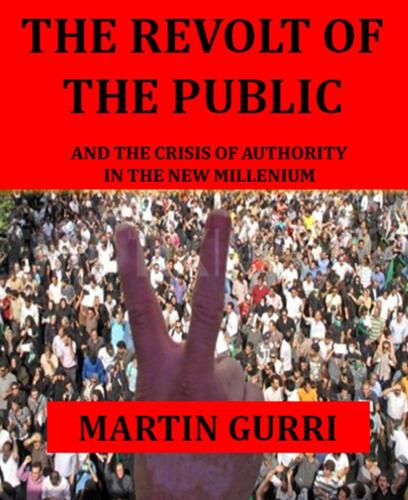
The Revolt of the Public and the Crisis of Authority in the New Millennium
by
Martin Gurri
Published 13 Nov 2018
Mike’s approach to get the editorial board members to resign will probably not work – must get rid of von Storch too… I have heard that the publishers are not happy with von Storch, so the above approach might remove that hurdle too.[99] Mann seemed particularly horrified by the fact that one of the authors of the contrarian paper had been a credentialed astrophysicist from Harvard. This latest assault uses a compromised peer-review process as a vehicle for launching a scientific disinformation campaign (often vicious and personal) under the guise of apparently legitimately reviewed science, allowing them to make use of the “Harvard” moniker in the process.[100] The emails showed the world’s leading climatologists busily working to organize a research cartel. Peer review was a legitimate source of authority when the process supported their positions.

Calling Bullshit: The Art of Scepticism in a Data-Driven World
by
Jevin D. West
and
Carl T. Bergstrom
Published 3 Aug 2020
If you come across a surprising claim or dramatic news report from an unknown source, use a search engine to see if you can find the same claims from other sources. If not, be very suspicious. Even when one news outlet has a big scoop, other papers quickly report on the fact that the first outlet broke the story. Be sure that those reporting on the story include reliable sources. Disinformation campaigns may plant multiple versions of the same false tale in unreliable outlets. Pay attention to where information comes from. If you find a piece of candy lying in the street, you are not going to eat it or share it with your friends. Unsourced information is the same. All too often, someone we don’t know posts a factoid or statistic or data graphic on social media without listing its source—and we share it anyway.

Vaxxers: The Inside Story of the Oxford AstraZeneca Vaccine and the Race Against the Virus
by
Sarah Gilbert
and
Catherine Green
Published 7 Jul 2021
There were reports in August that President Trump was going to ‘fast-track’ our vaccine.5 That created brief mayhem. In September, the trial was stopped because someone became ill and we had to look into whether it was because of the vaccine. Mayhem again. In October, the Russians launched a disinformation campaign, complete with images, memes and videos, aimed at convincing people that our vaccine would turn them into monkeys.6 The Science Media Centre – a charity whose philosophy is, brilliantly, ‘the media will do science better when scientists do the media better’ – became a crucial part of our lives.

A New History of the Future in 100 Objects: A Fiction
by
Adrian Hon
Published 5 Oct 2020
Having anticipated protests for decades, the monarchy acted quickly, putting into place a contingency plan prepared years earlier. Deepfake videos and forged emails were released on government websites that “proved” the protests had been instigated by Shiite spies and provocateurs from Iran. A disinformation campaign about “pernicious Western involvement” followed soon after. Most people distrusted the official accounts enough to continue the fight, but those allied to the royal family understood that their interests lay in the status quo and so did nothing. Other countries, including the US, declined to officially intervene.

Tunnel 29
by
Helena Merriman
Published 24 Aug 2021
Thousands of spies: In State Security and the Border, Daniela Munkel writes that by the 1980s, approximately 3,000 West German citizens served as unofficial collaborators (IMs) for the Stasi and many had been active for decades. The espionage the Stasi carried out in West Berlin wasn’t just about eliciting political, military and industrial secrets, but also involved spreading disinformation and revealing incriminating information to influence West German politics – the kind of disinformation campaigns we see around the world today. Munkel, Stasi Reader, 140. High as 100,000: Richie, Faust’s Metropolis, xlv. The only charges: Koehler, Stasi, 410. A final request: Funder, Stasiland, 254. Most slid into: Koehler, Stasi, 29. Soon be sold: One of the longest sections of the Berlin Wall anywhere in the world is in Los Angeles, running along Wilshire Boulevard in the Miracle Mile district, erected as part of a commemoration project.
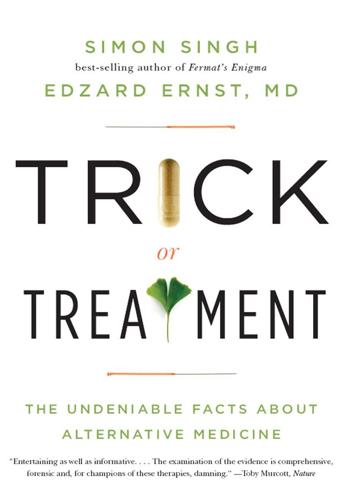
Trick or Treatment: The Undeniable Facts About Alternative Medicine
by
Edzard Ernst
and
Simon Singh
Published 17 Aug 2008
Judge Susan Getzendanner, who had presided over the case, ruled that the AMA had indeed acted unfairly against chiropractors: Evidence at the trial showed that the defendants took active steps, often covert, to undermine chiropractic educational institutions, conceal evidence of the usefulness of chiropractic care, undercut insurance programs for patients of chiropractors, subvert government inquiries into the efficacy of chiropractic, engage in a massive disinformation campaign to discredit and destabilize the chiropractic profession and engage in numerous other activities to maintain a medical physician monopoly over health care in this country. The AMA took the decision to the Supreme Court, but the appeal failed in 1990 and thereafter the AMA was forced to alter its attitude.

How Not to Network a Nation: The Uneasy History of the Soviet Internet (Information Policy)
by
Benjamin Peters
Published 2 Jun 2016
Just as Kitov, Lyapunov, and Sobolev had done in their initial article by claiming that anticyberneticist Soviet philosophers had fallen victim to the machinations of a subtle pro-American disinformation program, Glushkov occasionally partook in that classic cold war move of blaming the cunning enemy for one’s internal problems. Glushkov, for example, once blamed an unnecessary political battle in the 1972 All-Union Conference on a “disinformation campaign skillfully organized by the American secret service, which was directed against the improvement of our economics.” No matter how fueled by the fumes of international conspiracy, such claims appeared to work at home. Once, Glushkov reports, he was able to soften the blow of an internal attack on his local automated system of management (ASU) work by asking the Soviet scientific adviser in Washington, D.C., to issue a report on how the competitors to his proposed computer were becoming less popular in the United States.

The End of Doom: Environmental Renewal in the Twenty-First Century
by
Ronald Bailey
Published 20 Jul 2015
In 2013, some Filipino “farmers” rampaged through the fields where the IRRI was growing the Golden Rice variety. The “farmers” were later identified as anti-biotech activists who have worked with Greenpeace in the past to block other biotech crop varieties. Frankly, the scientific community has been far too passive for way too long in confronting the disinformation campaigns of anti-biotech groups such as Greenpeace, Friends of the Earth, and the Union of Concerned Scientists. But the Golden Rice atrocity finally aroused researchers. In August of 2013, Science magazine published a strong editorial, “Standing Up for GMOs,” condemning activists for their anti-scientific attacks on crop biotechnology.

Nobody's Fool: Why We Get Taken in and What We Can Do About It
by
Daniel Simons
and
Christopher Chabris
Published 10 Jul 2023
Either justification would be valid, but when we think about the positive examples, it’s easier to think of reasons favoring them. There was no deception in the conventional sense in this study. The researchers presented true anecdotes about real founders, but those anecdotes were not representative or typical of company founders. Similarly, disinformation campaigns can be successful—and evade conventional attempts to “fact-check” deception—without containing explicit lies or fake news as long as they choose real examples selectively enough.15 THE POSSIBILITY GRID By now, it’s clear that we tend to make decisions using only information about the planes we see and rarely even think of the ones that didn’t come back.

Among the Braves: Hope, Struggle, and Exile in the Battle for Hong Kong and the Future of Global Democracy
by
Shibani Mahtani
and
Timothy McLaughlin
Published 7 Nov 2023
The article published the name and a photo of her husband, who was also a US diplomat, the names of their two young children, and the years they were born. Ta Kung Pao claimed to be much like any other Hong Kong media outlet, but the Liaison Office controlled the newspaper and used it as a tool to bully and intimidate its adversaries. The article acted as the starting gun for an unprecedented disinformation campaign. Over the next days, the number of articles about Eadeh multiplied. The People’s Daily, the official newspaper of the Communist Party’s central committee, published a story on her. China Daily produced a video montage of Eadeh from her public webpages. More details were published, including Eadeh’s parents’ names and her hometown in the Midwest.
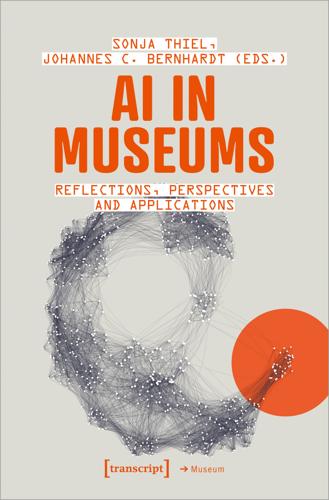
AI in Museums: Reflections, Perspectives and Applications
by
Sonja Thiel
and
Johannes C. Bernhardt
Published 31 Dec 2023
In addition to ethical concerns regarding the data used, there are overarching debates surrounding issues such as the potential loss of jobs, particularly for illustrators, who may feel threatened by the technology of prompt engineering and text-to-image generators. The development of new text-to-image generators could, however, also lead to the emergence of new professions and the enrichment of the field of illustration through creative tools. Furthermore, the creation of fake images poses a risk for politically motivated disinformation campaigns, as demonstrated by prominent examples such as a viral photo of the Pope wearing a Gucci coat or a manipulated image of Donald Trump evading arrest by law enforcement. In this context, it is always important to keep in mind that the results generative AI technologies produce can be factual, but might also be speculative.

The Age of Surveillance Capitalism
by
Shoshana Zuboff
Published 15 Jan 2019
A consequential example was Facebook’s decision to standardize the presentation of its News Feed content so that “all news stories looked roughly the same as each other… whether they were investigations in The Washington Post, gossip in the New York Post, or flat-out lies in the Denver Guardian, an entirely bogus newspaper.”27 This expression of equivalence without equality made Facebook’s first text exceptionally vulnerable to corruption from what would come to be called “fake news.” This is the context in which Facebook and Google became the focus of international attention following the discovery of organized political disinformation campaigns and profit-driven “fake news” stories during the 2016 US presidential election and the UK Brexit vote earlier that year. Economists Hunt Allcott and Matthew Gentzkow, who have studied these phenomena in detail, define “fake news” as “distorted signals uncorrelated with the truth” that impose “private and social costs by making it more difficult… to infer the true state of the world.…” They found that in the lead-up to the 2016 US election there were 760 million instances of a user reading these intentionally orchestrated lies online, or about three such stories for each adult American.28 As radical indifference would predict, however, “fake news” and other forms of information corruption have been perennial features of Google and Facebook’s online environments.
…
As the US Deputy Attorney General told the press, “The Department of Justice will continue to hold accountable companies who in their bid for profits violate federal law and put at risk the health and safety of American consumers.”31 Information corruption has also been a continuous feature of the Facebook environment. The turmoil associated with the 2016 US and UK political disinformation campaigns on Facebook was a well-known problem that had disfigured elections and social discourse in Indonesia, the Philippines, Columbia, Germany, Spain, Italy, Chad, Uganda, Finland, Sweden, Holland, Estonia, and the Ukraine. Scholars and political analysts had called attention to the harmful consequences of online disinformation for years.32 One political analyst in the Philippines worried in 2017 that it might be too late to fix the problem: “We already saw the warning signs of this years ago.… Voices that were lurking in the shadows are now at the center of the public discourse.”33 The guiding principles of radical indifference are reflected in the operations of Facebook’s hidden low-wage labor force charged with limiting the perversion of the first text.
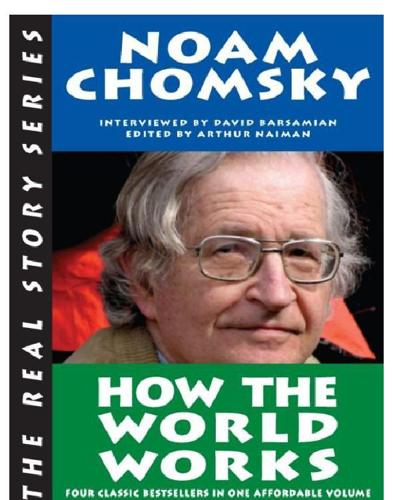
How the World Works
by
Noam Chomsky
,
Arthur Naiman
and
David Barsamian
Published 13 Sep 2011
Our ambassador to Chile, Edward Korry, who was a Kennedy liberal type, was given the job of implementing the “soft line.” Here’s how he described his task: “to do all within our power to condemn Chile and the Chileans to utmost deprivation and poverty.” That was the soft line. There was a massive destabilization and disinformation campaign. The CIA planted stories in El Mercurio [Chile’s most prominent paper] and fomented labor unrest and strikes. They really pulled out the stops on this one. Later, when the military coup finally came [in September 1973] and the government was overthrown—and thousands of people were being imprisoned, tortured and slaughtered—the economic aid which had been cancelled immediately began to flow again.

The Blue Sweater: Bridging the Gap Between Rich and Poor in an Interconnected World
by
Jacqueline Novogratz
Published 15 Feb 2009
In October 1990, the Rwandan Patriotic Front (RPF), a small but effective rebel army led by Paul Kagame, entered Rwanda from Uganda. The RPF’s stated mission was to remove Rwanda’s president and make it possible for exiled Tutsis to reclaim their citizenship. At the same time, the international community was pushing Rwanda for democratic reform. This marked the beginning of fear. And with fear began the disinformation campaigns, the lying, and the manipulation by Rwanda’s leaders to instill even more defensiveness—and paranoia—in an already insecure citizenry. For the next 5 years, the question would be asked over and over: “Are you a Hutu or a Tutsi?” As tensions between the two groups increased, a growing hatred began to permeate everyday life.
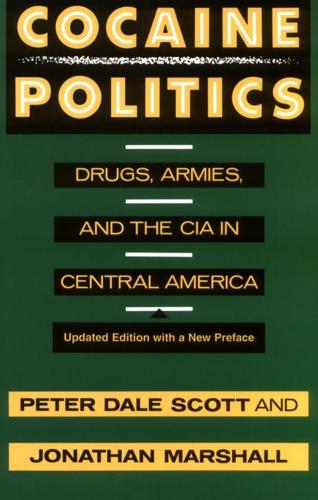
Cocaine Politics: Drugs, Armies, and the CIA in Central America
by
Peter Dale Scott
and
Jonathan Marshall
Published 1 Jan 1991
A State Department report to Congress in July 1986 stated flatly that “ there is no information to substantiate allegations” that Miami-based Cuban exiles had “been a source o f drug money for . . . any . . . resistance organization.”32 In response to further congressional inquiries, the Justice Department first withheld information, then insisted that allegations had been fully investigated and refuted. The CIA went even further, declaring that any reports o f Cuban exile involvement in weapons shipments, much less drug smuggling, were the result o f a disinformation campaign.33 FBI reports made public by the subcommittee exposed those official claims as outright lies. Far from having “no information” to back up the allegations, the FBI had direct substantiation in September 1984 from Jose Coutin, a Cuban American actively involved in the Contra support effort.

Fire and Fury: Inside the Trump White House
by
Michael Wolff
Published 5 Jan 2018
Yet there were constant tropes in his own narrative: Bannon was about to be cast out, Priebus too, and Kushner needed his protection from the other bullies. So if Bannon, Priebus, and Kushner were now fighting a daily war with one another, it was mightily exacerbated by something of a running disinformation campaign about them that was being prosecuted by the president himself. A chronic naysayer, he viewed each member of his inner circle as a problem child whose fate he held in his hand. “We are sinners and he is God” was one view; “We serve at the president’s displeasure,” another. * * * In the West Wing of every administration since at least that of Clinton and Gore, the vice president has occupied a certain independent power base in the organization.
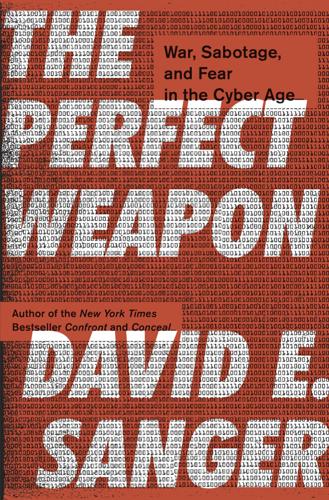
The Perfect Weapon: War, Sabotage, and Fear in the Cyber Age
by
David E. Sanger
Published 18 Jun 2018
Says Russian Hackers Penetrated Its Files, Including Dossier on Donald Trump,” New York Times, June 14, 2016, www.nytimes.com/2016/06/15/us/politics/russian-hackers-dnc-trump.html. A persona with the screen name Guccifer 2.0: Rob Price, “RESEARCHERS: Yes, Russia Really Did Hack the Democratic National Congress,” Business Insider Australia, June 21, 2016, www.businessinsider.com.au/security-researchers-russian-spies-hacked-dnc-guccifer-2-possible-disinformation-campaign-2016-6. said he was Romanian: Lorenzo Franceschi-Bicchierai, “Alleged Russian Hacker ‘Guccifer 2.0’ Is Back After Months Of Silence,” Vice, January 12, 2017, motherboard.vice.com/en_us/article/9a3m7p/alleged-russian-hacker-guccifer-20-is-back-after-months-of-silence. The transcript of Lorenzo’s interview with Guccifer 2.0 is viewable at motherboard.vice.com/en_us/article/yp3bbv/dnc-hacker-guccifer-20-full-interview-transcript.

New Laws of Robotics: Defending Human Expertise in the Age of AI
by
Frank Pasquale
Published 14 May 2020
Thus, even protective plans can seem aggressive, as in the case of Ronald Reagan’s Strategic Defense Initiative (SDI). Popularly known as Star Wars, SDI would have relied on lasers in space to shoot down Soviet missiles. Had it worked, it would have upset a fragile balance of deterrence (mutually assured destruction via nuclear annihilation). Now, LAWS, automated cyberattacks, and disinformation campaigns threaten to disrupt long-settled expectations about the purpose and limits of international conflict. We must find new ways of limiting their development and impact. War may at first appear as a state of exception, where ordinary ethical reasoning is suspended (or at least radically circumscribed).
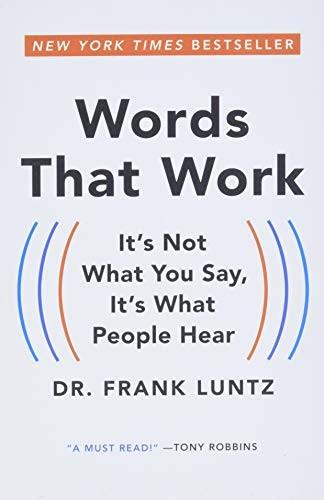
Words That Work: It's Not What You Say, It's What People Hear
by
Dr. Frank Luntz
Published 2 Jan 2007
The man who has been working behind the scenes for the past ten years—in debate prep sessions and television network green rooms, in the halls of Congress and in state capitals across the country—playing my own small part in the Republican ascension and in the Democratic collapse.* Why have I gone there, into what some of my clients and many of my colleagues would consider enemy territory? More importantly, why do the Hollywood elite welcome me? How do they know I’m not part of some nefarious Karl Roveian disinformation campaign, plotting political pranks and electoral sabotage? The answer is simple: Although my political clients may come from one side of the aisle, what I do is fundamentally nonpartisan. The ideas and principles about effective language I was to share with them in Brentwood that afternoon apply equally to Democrats and Republicans.
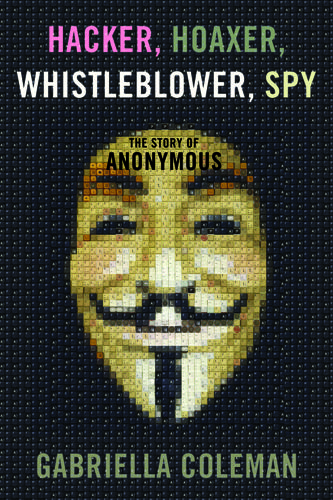
Hacker, Hoaxer, Whistleblower, Spy: The Story of Anonymous
by
Gabriella Coleman
Published 4 Nov 2014
This directly contradicts statements made by one of his handlers and reported by Jana Winter for Fox News. “About 90 percent of what you see online is bulls---,”21 said the handler, in reference both to posts from Sabu’s Twitter account and also “interviews” he gave to the press. Whether this is the truth or an even more elaborate, recursive disinformation campaign, the implication is that Sabu parroted whatever the FBI wanted him to say. There were some tweets—“If god forbid I am arrested, I’ll admit to my crimes, and take myself down. I do not believe in bringing others down for my own sins. Thanks”—that we now know were unadulterated nuggets of FBI-influenced BS.22 I barely got a word in edgewise, but I did manage to ask Sabu whether he met me at the behest of the FBI.
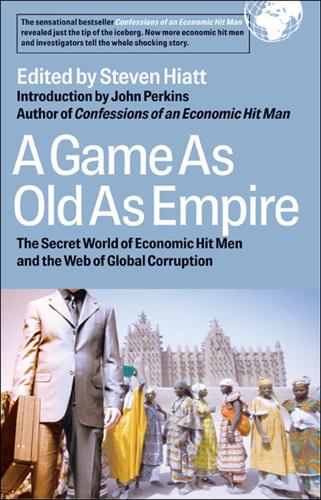
A Game as Old as Empire: The Secret World of Economic Hit Men and the Web of Global Corruption
by
Steven Hiatt; John Perkins
Published 1 Jan 2006
More muscular action was not possible, however: the Korean War absorbed the attention of the U.S. and Britain, and Soviet intervention in support of Iran was a threat. A more subtle approach was needed, and the CIA devised Operation Ajax, directed by Kermit Roosevelt. The first step was to create political turmoil to undermine Mossadegh’s political support: a CIA disinformation campaign worked overtime spreading rumors designed to split secular democrats from Islamic nationalists. Finally, the military made its move in August 1953, and Mossadegh was arrested, a new prime minister was appointed, the Shah was restored to power, and the oil industry was denationalized. The U.S. did demand a price for its help, however: British Petroleum now had to share its access to Iranian oilfields with several U.S. companies.
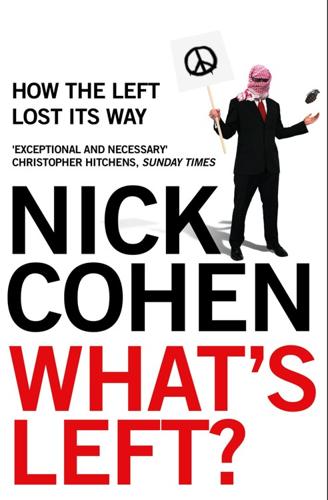
What's Left?: How Liberals Lost Their Way
by
Nick Cohen
Published 15 Jul 2015
Political cults create their own reality as effectively as the Scientologists or the Exclusive Brethren. Their leaders cannot allow members to take at face value evidence that contradicts their teachings. It has to be the result of a capitalist plot or a Jewish conspiracy or the machinations of Freemasons or a disinformation campaign by the security services. To maintain control the cult must blacken the world beyond its walls. Families are the most credible source of dissonant information. Parents, husbands, wives, lovers and children are the people whose cries of ‘Get a grip!’ or ‘Don’t be daft’ are most likely to hit home.
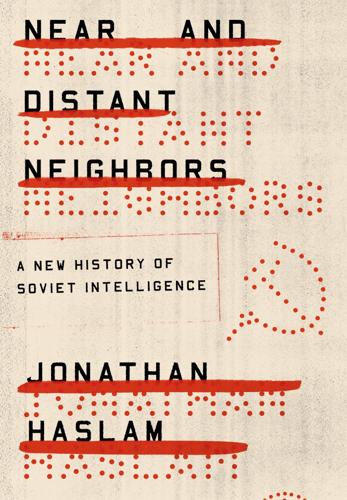
Near and Distant Neighbors: A New History of Soviet Intelligence
by
Jonathan Haslam
Published 21 Sep 2015
Also, they were crucially dependent on the agent “Dolly” (one of few as yet unidentified, working for Soviet military intelligence) at the War Office, who gave the Russians access to Japanese diplomatic decrypts initially and, later, to German military decrypts on a vast scale throughout the latter half of the war.8 Technological backwardness meant that the Russians had no hope of winning the decryption race,9 and not until the end of the decade were top mathematicians in the Soviet Union drawn into code and cipher cracking.10 Instead, the Russians had to make do with human intelligence. After the Soviet counteroffensive that followed the disasters of 1941, Hitler issued secret directive No. 41 on April 5, 1942, for an all-out attack on the Caucasus, code-named “Blau” (Blue.) As in 1940, he launched a disinformation campaign, this time to confuse Stalin with the idea that instead of heading south, the Germans would immediately head east, to Moscow. The Germans simultaneously moved to destroy Soviet intelligence operations in Central and Western Europe. Key spies within Germany, including Schultze-Boysen and Harnak, were arrested.
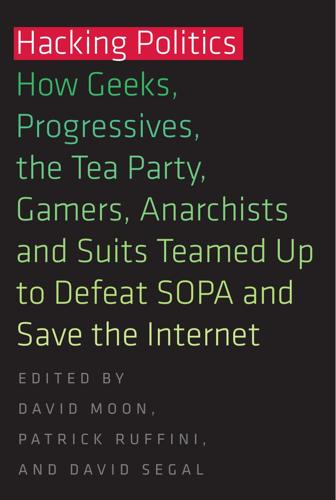
Hacking Politics: How Geeks, Progressives, the Tea Party, Gamers, Anarchists and Suits Teamed Up to Defeat SOPA and Save the Internet
by
David Moon
,
Patrick Ruffini
,
David Segal
,
Aaron Swartz
,
Lawrence Lessig
,
Cory Doctorow
,
Zoe Lofgren
,
Jamie Laurie
,
Ron Paul
,
Mike Masnick
,
Kim Dotcom
,
Tiffiniy Cheng
,
Alexis Ohanian
,
Nicole Powers
and
Josh Levy
Published 30 Apr 2013
Both of them, being Southern California Democrats, took massive amounts of money from Hollywood. Sherman took a populist line throughout the campaign, and at the debate he called SOPA “not well-designed.” Berman, still in thrall to Hollywood cash, described SOPA as a “property rights” issue, and chalked up the recent takedown of the legislation to a “disinformation campaign.” You couldn’t drive around the Valley without seeing Berman campaign material after that. Berman held fundraising events at the homes of just about every big donor in Hollywood. He was even a special guest when President Obama held a fundraiser at George Clooney’s house. They just finished the campaign.
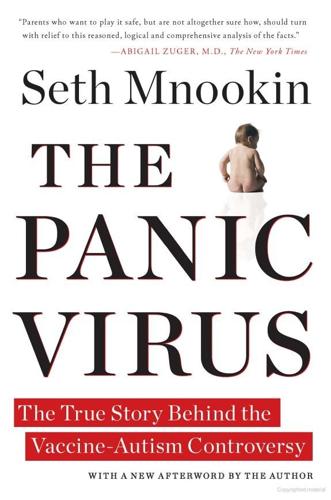
The Panic Virus: The True Story Behind the Vaccine-Autism Controversy
by
Seth Mnookin
Published 3 Jan 2012
I care about kids.” In her e-mail to me, Fisher wrote, “As you know, character assassination in order to demonize and marginalize individuals or groups belonging to a minority in society is a classic form of propaganda. Historically, it has been used as a component in overt and covert political disinformation campaigns designed to neutralize individuals and groups dissenting from the majority opinion.” Then, citing the fact that Wired shares a corporate parent with Vanity Fair, where I am a contributing editor, she wrote, “I hope you understand why I cannot subject myself to another opportunity to have my position mischaracterized and my reputation further damaged by foolishly trusting again and cooperating with a journalist I don’t know, who works for Condé Nast.”
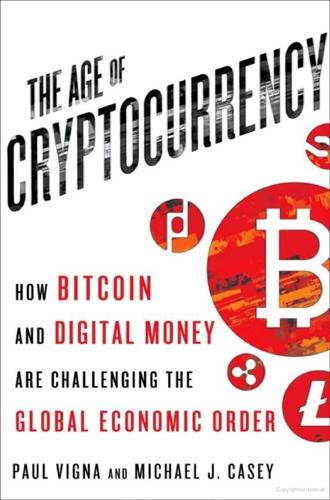
The Age of Cryptocurrency: How Bitcoin and Digital Money Are Challenging the Global Economic Order
by
Paul Vigna
and
Michael J. Casey
Published 27 Jan 2015
Davis’s work was inconclusive, but Clear’s comment, which he later said was intended as a harmless joke, meant the Irishman was inundated with e-mails. He has since vehemently denied creating bitcoin and has pleaded with people to leave him alone. Convinced that Davis was caught out by a probable disinformation campaign by the founder—as if Nakamoto’s Britishisms and Times of London reference were planted to throw trackers off the scent—New York University journalism professor Adam Penenberg turned his attention elsewhere. In an article for Fast Company he pointed to three names who’d jointly filed cryptocurrency-relevant encryption patents around the time of bitcoin’s release: Neal King and Charles Bry, who both resided in Germany, and Vladimir Oksman, living in the United States.
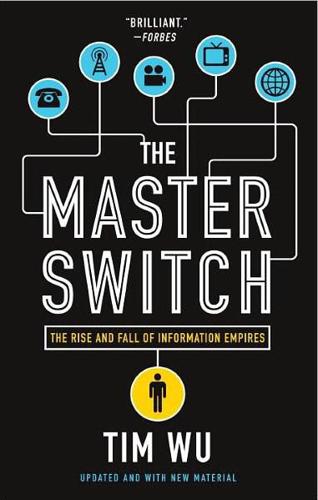
The Master Switch: The Rise and Fall of Information Empires
by
Tim Wu
Published 2 Nov 2010
“A glass of water was poured before the microphone in Yonkers; it sounded like a glass of water being poured and not, as in the ‘sound effects’ on ordinary radio, like a waterfall.” By such enthusiastic efforts Armstrong managed to convince a few like-minded people to found FM stations, and by 1941, yielding to the technological reality, the FCC allocated spectrum between 50 and 60 MHz.9 But, as mentioned, the disinformation campaign’s trump card was television, and the Radio Trust’s insistence that it, not FM, was the future. Many standard histories in fact ascribe the slow development of FM to the rise of television. Of course, there is no denying that television was the greater leap. But insofar as television never has supplanted radio, the Radio Trust was presenting a false choice.

Imaginable: How to See the Future Coming and Feel Ready for Anything―Even Things That Seem Impossible Today
by
Jane McGonigal
Published 22 Mar 2022
Outdoorsy people with practical suggestions for avoiding ticks. People who manage indoor sports and activity centers, like rock-climbing walls, spin studios, and indoor playgrounds. “Exit counselors,” or experts who specialize in helping people recover from false conspiracy theory addiction and disinformation campaigns, to deal with “Alpha Gals” conspiracy theories and disinformation. Whom else would you add to this list? Finally, how will you use your unique strengths to help others in this future? Think about the skills, abilities, knowledge, passions, communities, and values you identified as your own signature strengths.
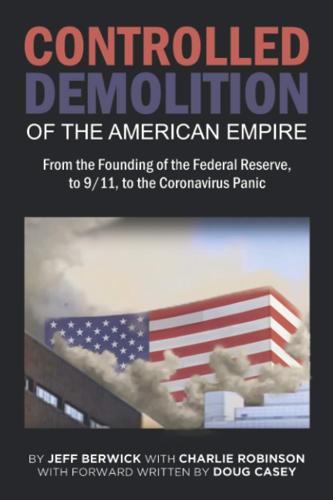
The Controlled Demolition of the American Empire
by
Jeff Berwick
and
Charlie Robinson
Published 14 Apr 2020
The CIA could use the media to lie directly to the American people, they could demonize people while deifying others, they could misdirect and send the viewers on wild goose chases, and they could create and maintain the narrative of who the “good guys” are, and who the “bad guys” are that Americans must watch out for. And the CIA could do all of this without firing a single shot. Former Director of the CIA, William Casey, was quoted as saying that they [the CIA] would know that their disinformation campaign was a success when everything that the American people believed was wrong. So this begs the question of why MSNBC would hire former CIA Director John Brennan to be a Senior National Security and Intelligence Analyst on their network? They are obviously trying to compete with CNN and their stable of spooks like former Director of the CIA & former Director of the NSA, Michael Hayden, and former Director of National Intelligence, James Clapper, a man that is on video lying to Congress.
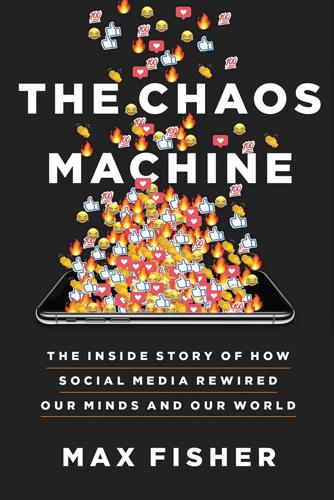
The Chaos Machine: The Inside Story of How Social Media Rewired Our Minds and Our World
by
Max Fisher
Published 5 Sep 2022
Death threats remain a constant presence, as do whispers of suspicion even from like-minded peers. “I am exhausted. It’s been seven years,” she said, covering her face with her hands. “It broke me. This is the worst part for me. I feel alone.” Lionço is Brazilian. In the fall of 2018, the fringe lawmaker and YouTuber who’d launched the disinformation campaign against Lionço six years earlier, a man named Jair Bolsonaro, ran to become her country’s president. Everyone had expected him to lose. Instead he won in a 10-point landslide. It was the most significant event in global politics since the election of Donald Trump. The world’s sixth-largest country came under the command of a far-right conspiracist.
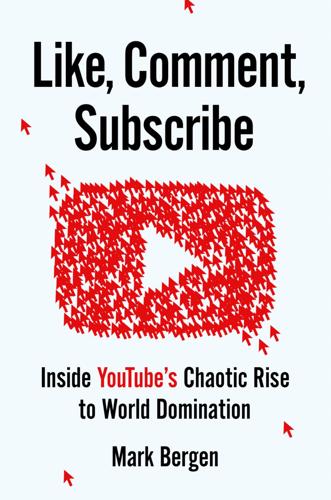
Like, Comment, Subscribe: Inside YouTube's Chaotic Rise to World Domination
by
Mark Bergen
Published 5 Sep 2022
He appeared on an RT segment to celebrate the network’s milestone of one billion YouTube views, praising RT for being “authentic” and not pushing “agendas or propaganda.” U.S. politicians disagreed. After Trump’s election, federal officials forced RT to register as a “foreign agent.” Senator Mark Warner, a Virginia Democrat, called YouTube RT’s “go-to platform” and a “target-rich environment for any disinformation campaign.” YouTube, feeling the heat, removed RT from its premium slate and added labels for all state-backed media outlets. Yet just as pressure on YouTube mounted, Facebook tripped again. Four days after Wojcicki was grilled in Texas over conspiracies, the Cambridge Analytica scandal broke. A consulting firm had scraped Facebook data to make psychological profiles for Trump’s campaign.
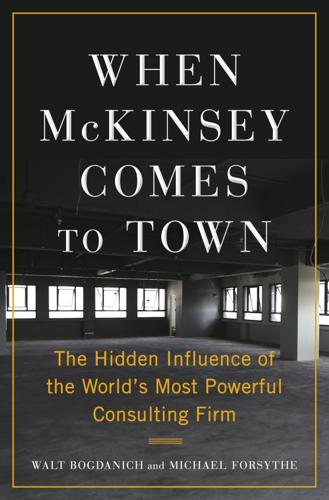
When McKinsey Comes to Town: The Hidden Influence of the World's Most Powerful Consulting Firm
by
Walt Bogdanich
and
Michael Forsythe
Published 3 Oct 2022
But, significantly, nicotine is later added to achieve the desired nicotine content. By the mid-1950s, cigarettes were already under assault after a stream of disturbing reports linking smoking and lung cancer. As researchers, doctors, and public health officials tried to warn Americans that smoking can be lethal, Philip Morris joined an industry-led disinformation campaign aimed at discrediting critics. No evidence can be found in industry records indicating that McKinsey played a role in this deception, but for a company so deeply involved in Philip Morris’s business, it strains credibility to believe the consultants were not aware of it. One fact is undeniable.

Farewell
by
Sergei Kostin
and
Eric Raynaud
Published 14 Apr 2011
By firmly establishing Ludmila’s greed, they improved Vetrov’s image in the eyes of his colleagues. It came as a surprise to see how easily well-informed and rational men such as intelligence operatives accepted this version, which was a complete fabrication. Was it male solidarity? Rejected men, many of whom had courted Ludmila to no avail? It is plausible. The disinformation campaign launched within Directorate T seems to have succeeded. Today, its officers admit that Ludmila’s image had been made up following Vetrov’s case. As far as Ludmila was concerned, nothing had changed. Bright, cheerful, good-looking, she thought she was surrounded by well-meaning people showing her affection and friendship.
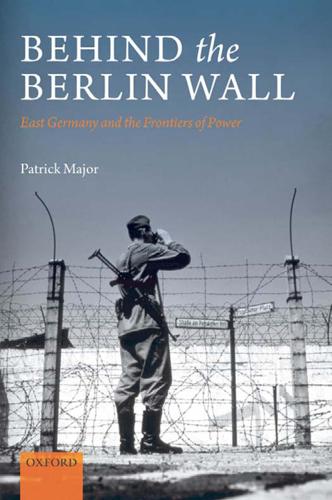
Behind the Berlin Wall: East Germany and the Frontiers of Power
by
Patrick Major
Published 5 Nov 2009
All of this was captured by western cameras and the photograph of Fechter’s lifeless body being carried away became an icon of West German anticommunism.²²² Soviet vehicles were subsequently stoned by West Berliners as they passed through the checkpoint, and among eastern onlookers the Stasi reported ‘extremely negative discussions’.²²³ The regime was understandably keen to suppress news of such incidents, and East German trigger-happiness even led to calls for restraint from Soviet superiors.²²⁴ MfS disinformation campaigns denied any killings at the Wall. The wounded were held in isolation wards, and only close relatives of the dead were informed, sometimes with misleading death certificates, but never permitted to view the body, which was often pre-emptively cremated.²²⁵ By far the bloodiest years were the 1960s.

Wall Street: How It Works And for Whom
by
Doug Henwood
Published 30 Aug 1998
One check on this confederacy of optimists are professional shorts — people who look for companies with inflated reputations and stock prices, dig out the info, short the stock, and then leak the bad news to reporters eager for a hot tip. If the news takes, then the stock will suffer damage. Sometimes it doesn't matter whether the bad news is true; if the short can take a position and undertake a successful disinformation campaign, he or she can profitably cover the short. 35. For the "real" sector, however, borders still matter, and the "global assembly line" is a bit of an exaggeration. 36. The correlation coefficient is a measure of how tightly two sets of numbers are related to each other, ranging from -1 (a perfect mirror image) through 0 (no relation at all) to PLAYERS +1 (perfect lockstep).

Diet for a New America
by
John Robbins
Their goal has been to “reposition global warming as theory rather than fact,” according to an internal strategy memo unearthed by journalist Ross Gelbspan.17 Their motives are transparent. ExxonMobil made more money in 2006, 2007, and 2008 than any other company in the history of the world. Chevron was close behind. To some extent, this disinformation campaign has been successful. Many of us believe that considerable controversy about global warming still exists. Are scientists sure it is a reality? And even if the planet is warming, is the trend being caused by human activities or by natural events? But the consensus seems quite clear. In 2010, a study published in the Proceedings of the National Academy of Sciences found that 97 percent of scientific experts agree that it is “very likely that anthropogenic [human-caused] greenhouse gases have been responsible for most of the unequivocal warming of the Earth’s average global temperature in the second half of the twentieth century.”18 What about the 3 percent who remain unconvinced?
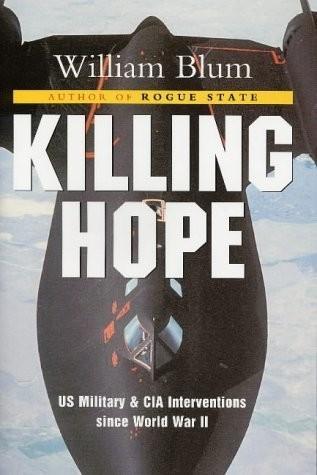
Killing Hope: Us Military and Cia Interventions Since World War 2
by
William Blum
Published 15 Jan 2003
So the safe explanation becomes "Communist-inspired subversive insurgency." The word for this in the Philippines is Huk.24 The most insidious part of the CIA operation in the Philippines was the fundamental manipulation of the nation's political life, featuring stage-managed elections and disinformation campaigns. The high-point of this effort was the election to the presidency, in 1953, of Ramon Magsaysay, the cooperative former defense department head. Lansdale, it was said, "invented" Magsaysay.25 His CIA front organizations— such as the National Movement for Free Elections—ran the Filipino's campaign with all the license, impunity, and money that one would expect from the Democratic or Republican National Committees operating in the US, or perhaps more to the point, Mayor Daley operating in Chicago.
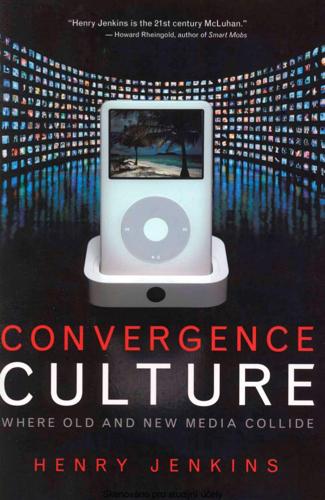
Convergence Culture: Where Old and New Media Collide
by
Henry Jenkins
Published 31 Jul 2006
Every week, the eagerly anticipated results are fodder for water cooler discussions and get reported as news, even on rival networks. Survivor is television for the Internet age—designed to be discussed, dissected, debated, predicted, and critiqued. The Survivor winner is one of television's most tightly guarded secrets. Executive producer M a r k Burnett engages i n disinformation campaigns trying to throw smoke i n viewers' eyes. Enormous fines are written into the contracts for the cast and crew members if they get caught leaking the results. A n d so a fascination has g r o w n u p around the order of the "boots" (the sequence i n w h i c h the contestants get rejected from the tribe), the "final f o u r " (the last four contestants i n the competition), and especially around the "sole survivor" (the final w i n ner of the million-dollar cash prize).
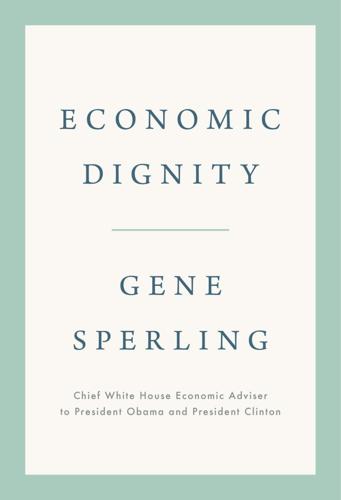
Economic Dignity
by
Gene Sperling
Published 14 Sep 2020
The increasing pressure on middle-class manufacturing and service jobs due both to technological advances and to competition from countries like China and India, the rise of spreading hate through social media, and high levels of refugee flows, all in the context of a major global financial crisis, have no doubt put pressure on elements of even nations with strong economic security policies. Part of the story in Sweden’s radical far-right rise is that as in numerous other Western democratic states, the rise of nativist sentiment has been fueled in part by an online disinformation campaign coming from Russian and American far-right entities.18 Indeed, the deep economic pain caused by a severe global financial crisis—and the resentment of remedies that were seen as protecting either wealthy financial culprits or undeserving fellow citizens—may have lit on fire these brewing economic pressures.
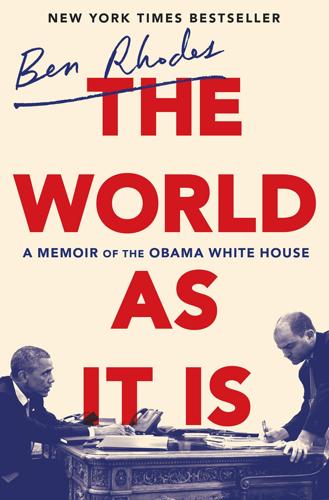
The World as It Is: A Memoir of the Obama White House
by
Ben Rhodes
Published 4 Jun 2018
It was decided that that would be a bridge too far—we rarely sanctioned heads of governments, and usually only where we favor regime change. I did a press call to announce the measures. I chafed at the Russian denials. “There are facts,” I said, “and then there are things that Russia says.” In the back of my head, I wondered what I could say that might trigger the Russians to mount a disinformation campaign against me. I dismissed those worries, but the fact that the thought even crossed my mind sent a chill through my body: If I’m thinking this, I thought, every public official in a Western democracy is going to think twice before criticizing Russia. On January 5, the leadership of the intelligence community filed into the Oval Office to brief Obama on the report on Russian meddling.
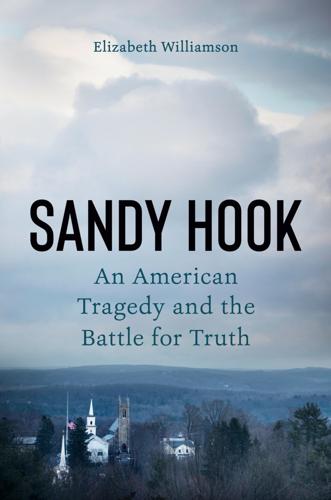
Sandy Hook: An American Tragedy and the Battle for Truth
by
Elizabeth Williamson
Published 8 Mar 2022
But she doesn’t recall any conspiracy theories or harassment. “The reaction to Virginia Tech was much the same as the reaction to Sandy Hook. That this could happen was beyond comprehension, that someone could shoot your children down in cold blood,” Haas told me. “We didn’t have the disinformation campaigns and the fuel that social media platforms generally give them.” In 2007, the major social media platforms hosted only a fraction of the users they did just five years later, when Sandy Hook ignited millions of posts pushing false claims. Facebook, by far the largest social platform, had twenty million global users in 2007, compared with more than a billion in December 2012.

Coders: The Making of a New Tribe and the Remaking of the World
by
Clive Thompson
Published 26 Mar 2019
After he left Facebook, he wrote a report for New America arguing that “the form of the advertising technology market perfectly suits the function of disinformation operations.” Political misinformation “draws and holds consumer attention, which in turn generates revenue for internet-based content. A successful disinformation campaign delivers a highly responsive audience.” Adtech, the engine of rapidly scaling web business, is “the core business model that is causing all the negative externalities that we’ve seen,” he tells me. “The core business model was to make a tremendously compelling and borderline addictive experience, like the Twitter feed or Facebook messenger or the News Feed.”

Ashes to Ashes: America's Hundred-Year Cigarette War, the Public Health, and the Unabashed Triumph of Philip Morris
by
Richard Kluger
Published 1 Jan 1996
Frank’s article, nothing more than a rehash of the industry line (e.g., “Statistics alone link cigarettes with lung cancer”), was then made yet more simplistic, given a pseudonymous byline, retitled “Cigarette Cancer Link Is Bunk,” and run in a March issue of the National Enquirer, the nation’s foremost scandal sheet, thus exposing another million or more readers to the disinformation campaign fueled by the tobacco companies. Not only was the industry unapologetic about the health hazard it was selling to the public, but in launching 100 mm. brands with higher tar and nicotine yields than anything then on the market, it blithely compounded the medical peril. And when reputable parties like the FTC, Consumers Union, and the Roswell Park cancer institute called the public’s attention to the heightened yields, the industry claimed that inadequate test samples and undependable measuring techniques had been used and invoked the straw man of science’s continuing failure to prove that “any particular ingredient as found in cigarette smoke actually causes any human disease.”
…
When little Liggett, whose buccaneer proprietor tried to insulate his failing company from liability and reimbursement claims by striking a deal with suing state attorneys general, agreeing to pay over a quarter of its slender profits during the next twenty-five years and confessing that it had indeed long been aware of the unhealthful properties of its chief product, tobacco’s kingpins were shaken. As part of its accord, the runt of the industry agreed to turn over intercompany documents that threatened to further-illuminate the extent of the cigarette makers’ concerted disinformation campaign. Soon Philip Morris’s tough-guy CEO Geoffrey Bible was at the bargaining table with his RJR sidekick, beginning to negotiate a possible “global settlement” with state officials and Tobacco-Free Kids counsel Matthew Myers, back at center stage as the antismoking forces’ chief bargainer, while the White House monitored the talks.
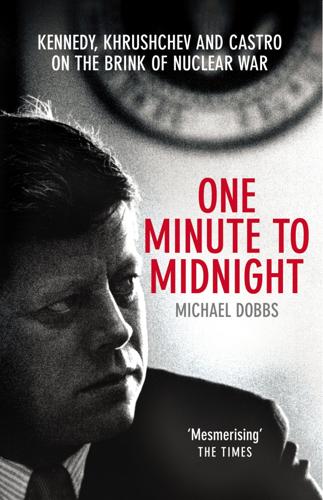
One Minute to Midnight: Kennedy, Khrushchev and Castro on the Brink of Nuclear War
by
Michael Dobbs
Published 3 Sep 2008
Lippincott, 1966), 51. 20 According to Harvey's record: Chronology of the Matahambre Mine Sabotage Operation; Harvey memo on sabotage operation, October 19, 1962, JFKARC. 21 "I don't want that man": Reeves, 182. 22 America had "the Russian bear": Brugioni, Eyeball to Eyeball, 469. 22 As many as 70 million: Reeves, 175. 23 "These brass hats": O'Donnell and Powers, 318. 23 "the military always screws up": Stern, 38; Beschloss, 530. 24 Every aspect of the operation had:Author's interview with Pedro Vera, January 2006; Harvey memo to Lansdale, August 29, 1962, JFKARC; Cuban army interrogation of Vera and Pedro Ortiz, Documentos de los Archivos Cubanos, November 8, 1962, Havana 2002. 24 "the Farm":Also known by the code word "ISOLATION"; Chronology of the Matahambre Mine Sabotage Operation. 24 "You do it":Warren Hinckle and William Turner, Deadly Secrets (New York: Thunder's Mouth Press, 1992), 149. 25 "If the Americans see us": Malakhov reminiscences, Archives of Mezhregional'naya Assotsiatsia Voinov-Internatsionalistov, Moscow (hereafter MAVI). 25 the 79th missile regiment:V. I. Yesin et al., Strategicheskaya Operatsiya Anadyr': Kak Eto Bylo (Moscow:MOOVVIK, 2004), 381. Except where noted, all references to this book are to the 2004 edition. Some of the names of the missile regiments were changed for Operation Anadyr as part of the Soviet disinformation campaign. The 79th missile regiment was also referred to as the 514th missile regiment in Cuba. The CIA incorrectly reported that a missile site near San Cristóbal was the first to achieve combat-ready status. 26 given a special "government assignment": Sidorov's account of the deployment is contained in A.
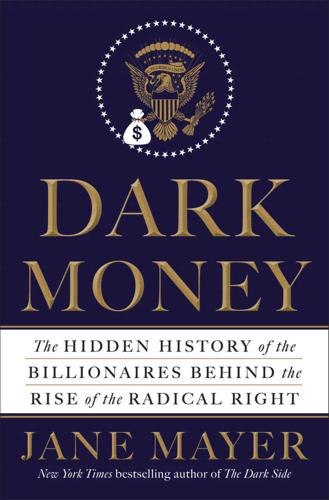
Dark Money: The Hidden History of the Billionaires Behind the Rise of the Radical Right
by
Jane Mayer
Published 19 Jan 2016
It used its youth-oriented front group, Generation Opportunity, to post online advertisements featuring a tasteless cartoon version of Uncle Sam jumping between the legs of a young woman undergoing a gynecological exam to spread fear about the government’s interference in private health-care matters. (The Kochs’ front group seemed to have no such qualms about government intrusion into reproductive health issues.) The organization also sponsored student-oriented protests at which mock Obamacare insurance cards were burned like draft cards during the Vietnam War. The disinformation campaign spread fear and confusion. News reports reflected a widespread belief, particularly in desperately poor areas, that the government was setting up “death panels.” In the summer and fall of 2013, as Meadows was gathering co-sponsors for his open letter, Americans for Prosperity spent an additional $5.5 million on anti-Obamacare television ads.
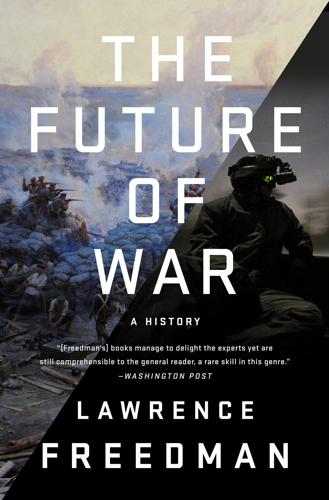
The Future of War
by
Lawrence Freedman
Published 9 Oct 2017
And on the other, it takes on the other definition of “cool,” in that it involves the latest cutting-edge technologies in ways that are changing the paradigm of conflict to a much greater degree than any of those employed during the Cold War—which was, after all, about old-fashioned geopolitical jockeying for advantage in anticipation of potential old-school total warfare.15 The risks attached to major war and the reluctance to commit substantial forces to lesser conflicts have led major powers to search for ways, whether subversion of the political process, economic coercion, cyber-attacks, or brazen disinformation campaigns, to influence events while keeping their liabilities limited and risks managed. Again there was the difficulty that these methods were unlikely to bring much to a conclusion but instead encouraged niggling, persistent conflicts until at some point a way was found to sort out the underlying issues or else some spark moved them out of the grey zone and back into open warfare.

Baghdad at Sunrise: A Brigade Commander's War in Iraq
by
Peter R. Mansoor
,
Donald Kagan
and
Frederick Kagan
Published 31 Aug 2009
Although located just outside the exclusionary zone, the mosque’s location approximately eight hundred feet south of the Husayn Shrine made any military maneuver in the area an extremely sensitive operation. Before the war the facility had been used to wash bodies before burial, but the previous fall Sadr’s forces had occupied the area and designated the facility a mosque in order to seek protected status against coalition searches. Sadr’s Karbala 315 disinformation campaign succeeded in making the new designation stick, and the coalition therefore needed the acquiescence of Iraqi authorities to search the premises. After consultations with the Iraqi governor of Karbala, who clearly understood the machinations of Sadr’s propaganda machine regarding the Mukhayem “Mosque,” Brigadier General Gruszka received Iraqi consent to conduct operations to seize the facility and eject Sadr’s militia from it.
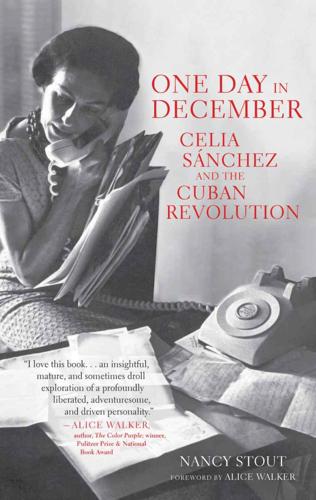
One Day in December: Celia Sánchez and the Cuban Revolution
by
Nancy Stout
Published 2 Feb 2013
The M26 leadership seized on the idea that Fidel must become visible, alive and well, to the international press. Faustino Pérez had been sent to Havana to handle just this sort of thing. He sought contact with Ruby Hart Phillips, a stringer for the New York Times, offering an exclusive on Fidel’s story. In the days following the landing, Phillips and her editor had fallen for the army’s disinformation campaign, and the Times had printed Fidel’s obituary on its front page. Fidel was alive, and the Times should acknowledge the fact. MEANWHILE, EUTIMIO HAD STARTED to travel full-time with the guerrillas, as their mountain guide. But on January 28, he separated from them. He apologized to Fidel, leaving him and his fighters on their own only because his mother was ill, and pledging to return no later than the end of the week.
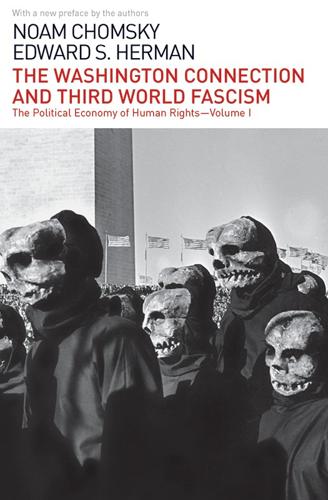
The Washington Connection and Third World Fascism
by
Noam Chomsky
Published 24 Oct 2014
For discussion, see Chomsky, “The Pentagon Papers as Propaganda and as History,” in Pentagon Papers, Gravel ed., v. V, Critical Essays. The same is true with regard to intelligence analyses. It is necessary to study the record to see how dominated the intelligence agencies were by the framework of propaganda that they themselves were helping to construct in their disinformation campaigns. To mention one striking example, the Pentagon Papers analysts were able to discover only one staff paper in a record of more than two decades “which treats communist reactions primarily in terms of the separate national interests of Hanoi, Moscow, and Peiping,” rather than regarding Hanoi simply as an agent of International Communism, directed from abroad.

After the Cataclysm
by
Noam Chomsky
Published 17 Dec 2014
This fact alone might have suggested that this journal is hardly a trustworthy source, had the question been of any concern. 126. See chapter 2 of this volume, p. 29-30, for one of many examples. It is difficult to imagine that the CIA, with its long history of deception in Indochina, has suddenly ceased its disinformation campaigns. Ed Bradley of CBS news, asked on the MacNeil/Lehrer Report to comment on the “allegation that there is a disinformation network at work spreading these allegations” of Cambodian atrocities, responded: “I don’t have any doubts that there is some element of truth in it...,” a plausible surmise.

The Enemy Within
by
Seumas Milne
Published 1 Dec 1994
Meanwhile, a good part of MI5’s ‘counter-subversion work’ – which the security service itself claims to have abandoned – has been absorbed by the police, both in the form of the Special Branch and newer outfits such as the National Domestic Extremism Unit and the National Public Order Intelligence Unit (both originally under the control of the opaque and unaccountable Association of Chief Police Officers). They have already become notorious for the infiltration of undercover agents and agents provocateurs into environmental, animal rights, anti-racist and other protest groups, as well as for disinformation campaigns, while evidence has grown of systematic Special Branch collaboration with private corporations to blacklist trade unionists. Of course, the global blanket surveillance of mobile phone, email and internet traffic by the US National Security Agency and Britain’s GCHQ – revealed by the NSA whistleblower Edward Snowden in 2013 – is on another scale entirely from the then unprecedented operations they carried out against the British miners’ union and its international solidarity network in 1984–5.
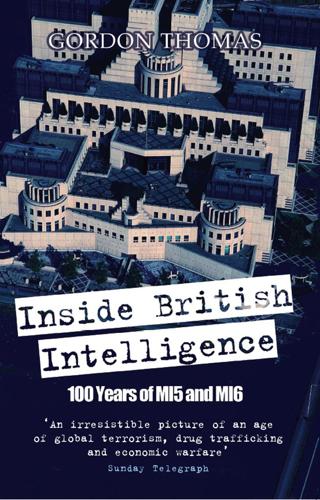
Inside British Intelligence
by
Gordon Thomas
Cryptologists at Fort Meade, who had been placed on standby, began trying to decipher the messages, but there was no way they could break the codes. Allen and John Foster Dulles both concluded the volume of signal traffic could be the precursor of Israel asking for French support to be allowed to launch an attack on Jordan if the Iraqi army invaded the Hashemite kingdom. That possibility had been part of the Mossad disinformation campaign. By midnight, agreement had been reached in the château. Israel would launch a ground attack on Egypt across the Sinai Desert and aim to reach the Suez Canal within twenty-four hours, a promise Moshe Dayan had shortened to “if not sooner.” Britain and France would then issue an ultimatum to Nasser that he should allow their troops to enter the Canal Zone as temporary peacekeepers, after which the Israeli forces would withdraw to the Sinai side of the waterway.
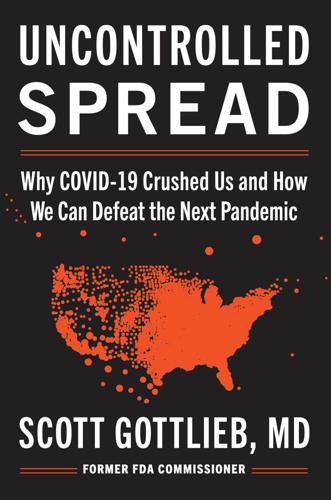
Uncontrolled Spread: Why COVID-19 Crushed Us and How We Can Defeat the Next Pandemic
by
Scott Gottlieb
Published 20 Sep 2021
Then in May, the same hackers were accused by US authorities of probing a California diagnostic firm that was developing coronavirus testing kits. 18.Julian E. Barnes, “Russia Is Trying to Steal Virus Vaccine Data, Western Nations Say,” New York Times, December 14, 2020. 19.Michael R. Gordon and Dustin Volz, “Russian Disinformation Campaign Aims to Undermine Confidence in Pfizer, Other Covid-19 Vaccines, U.S. Officials Say,” Wall Street Journal, March 7, 2021; and Denis Y. Logunov et al., “Safety and Efficacy of an rAd26 and rAd5 Vector-Based Heterologous Prime-Boost COVID-19 Vaccine: An Interim Analysis of a Randomised Controlled Phase 3 Trial in Russia,” Lancet 397, no. 10275 (2021): 671–81. 20.Bret Schafer et al., “Influence-Enza: How Russia, China, and Iran Have Shaped and Manipulated Coronavirus Vaccine Narratives,” German Marshall Fund, March 6, 2021; and Alexander Smith, “Russia and China Are Beating the U.S. at Vaccine Diplomacy, Experts Say,” NBC News, April 2, 2021. 21.Barnes and Venutolo-Mantovani, “Race for Coronavirus Vaccine Pits Spy Against Spy.” 22.Kenneth W.

Dawn of the Code War: America's Battle Against Russia, China, and the Rising Global Cyber Threat
by
John P. Carlin
and
Garrett M. Graff
Published 15 Oct 2018
We need something like a “Dead Man’s Switch” for our election system. A body like the National Intelligence Council (NIC), the group of career analysts who help issue consensus national intelligence assessments, could be designated in advance to analyze whether a foreign actor is seeking to interfere with an election—whether through disinformation campaigns, hacking candidates or political parties, or actual attacks on the election infrastructure. Then, on a certain date—say 100 days before a national election—that team and the intelligence community should be obligated to report to Congress whether they have witnessed any suspicious foreign interference and then issue a second report if they later do detect interference.
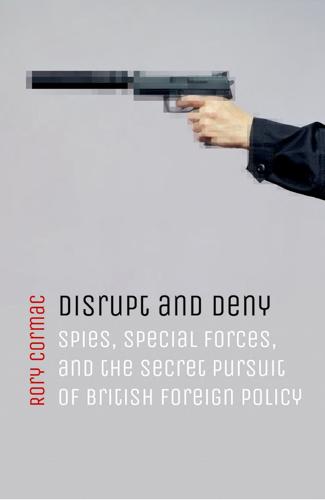
Disrupt and Deny: Spies, Special Forces, and the Secret Pursuit of British Foreign Policy
by
Rory Cormac
Published 14 Jun 2018
UK/US working groups 135–8 undermining Soviet Union 63–70, 80–8 use of special forces 4, see also special forces Whitehall infighting 68 and Yugoslavia 34 see also Foreign Office; GCHQ; ISC; JIC; propaganda; PWE; SIS; SOE; special forces; Suez Ukraine SIS airdrop into 76, 79 SIS and resistance 34, 35 UN post-war membership 3 Security Council, UK membership 1 Soviets in 24 United Arab Republic 129, 137 Urban, George 219, 222 Urban, Mark 213 Uruguay, disinformation campaign in 186 US Anglo-American relationship 29 anti-communist propaganda 27 CIA see CIA covert action in Cold War 2, 27 criticism of UK 78 and Cuba 149–50 Iranian oil deals 103 resource-for-expertise deal 35 State Department see State Department UK concerns over 27 UK/US cooperation 42–6, 51–6, 74, 77–80, 83, 92, 96–108, 149–54 UK/US working groups 135–8 USS Cole 264 UVF (Ulster Volunteer Force) 211 Vance, Cyrus 224 Vatican 228, 229 Vietnam, SIS and 162–3 Vietnam News Agency 71 Vietnam War 162–3 Voice of Britain radio 116 Waldegrave, William 243 Walker, David 235, 237, 238 Walker, Patrick Gordon 189, 213 Walker, Walter 159 Wallace, Colin 200 war criminals, SAS snatches of 246–7 Warner, Christopher 20–1, 28, 29, 62 Warner, Gerry 232, 242 Watson, Adam 121, 122 West, Nigel 248 White, Dick 84, 123, 124, 126, 127–8, 130, 140, 144, 164–5, 169, 170–1, 173, 181, 203, 278 Whitelaw, William 206 Whitney, Ray 195 Wilber, Donald 100, 101, 107 Williams, Clive 206 Williams, Richard 255 Wilson, Harold 149, 167, 169, 171, 173, 181, 182, 183–4, 185, 207, 208, 268 Wilson, Richard 250 Wisner, Frank 43, 51, 79, 84, 130–1 Woodfield, Philip 203 Woodhouse, John 172 Woodhouse, Monty 93, 94, 98–9, 100, 101, 103, 106 Wright, Patrick 157, 183, 232 Yemen and Aden 114, 137, 155–6, 269 covert action in 113, 114, 128, 137, 157, 258, 263, 264, 269 paramilitary training 265 secret war in 161–77, 176–7 and SIS 137 Yom Kippur War (1973) 183 Young, George Kennedy 70, 84, 111, 113, 115, 116, 117, 118–19, 121, 122, 123, 128, 145, 271, 285 Younger, Alex 265, 266, 272, 285 Yugoslavia 34, 41, 51, 53–4 Zaehner, Robin 31, 93–5, 98–9 Zahedi, Fazlullah 101–2, 103, 104, 105, 106 Zaid, Sheikh 188–9 Zambia, covert action in 147 Zanzibar, covert action/revolution in 157–8 Zia, Muhammed 226, 234–5 Zia, Sayyid 93, 94, 95 Zog, King 45–6, 121, 274

Empire of AI: Dreams and Nightmares in Sam Altman's OpenAI
by
Karen Hao
Published 19 May 2025
Once it was time to reveal the model, its extra polish and refinement would help establish AI safety norms, in the same way the initial withholding of GPT-2 shifted norms for releasing research. With a version of GPT-2 now out in the world, there was also evidence that the dangers of pure language models weren’t all that bad. As far as OpenAI knew, it hadn’t been used in coordinated mass disinformation campaigns—and such campaigns were certainly better than the potential existential risks of AGI. “Obviously misuse is not good,” Amodei told me. “But a language model is a lot less powerful than an AGI. I’m very worried about language models being weaponized for disinformation and this sort—that is very scary to me—but at the same time, it’s a relatively singular and clear and defined concern.”

The Secret World: A History of Intelligence
by
Christopher Andrew
Published 27 Jun 2018
Stalin was less suspicious of Hitler than of Churchill, who had preached an anti-Bolshevik crusade in the Civil War twenty years before and, Stalin believed, had been plotting against the Soviet Union ever since. Behind many of the reports of impending German attack, Stalin claimed to detect a disinformation campaign by Churchill designed to continue the long-standing British plot to embroil him with Hitler. Churchill’s personal warnings to Stalin of preparations for BARBAROSSA only heightened his suspicions. From the intelligence reports sent by the London residency, Stalin almost certainly knew that until June 1941 the British Joint Intelligence Committee (JIC) did not believe that Hitler was preparing an invasion.
…
The JIC assessments were probably regarded by Stalin as further proof that Churchill’s warnings were intended to deceive him. Stalin’s deep suspicions of Churchill and of British policy in general were cleverly exploited by the Germans. As part of the deception operation which preceded BARBAROSSA, the Abwehr spread reports that rumours of an impending German attack were part of a British disinformation campaign.73 Lavrenti Beria sought to protect his position as head of the NKVD in succession to Yezhov by expressing mounting indignation at those inside and outside the NKVD who dared to send reports of preparations for German invasion. On 21 June 1941 he ordered four NKVD officers who had patriotically persisted in sending such reports to be ‘ground into concentration camp dust’.
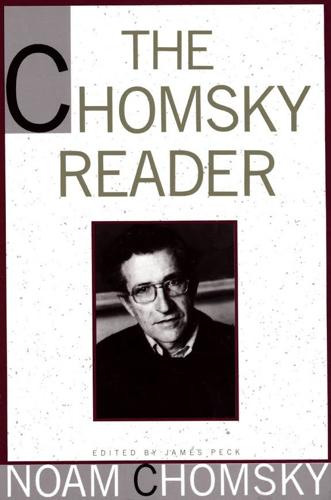
The Chomsky Reader
by
Noam Chomsky
Published 11 Sep 1987
The president claimed in July 1983 that they had “literally made a contract to establish a true democracy” with the OAS before taking power in July 1979. This claim is without foundation; Roy Gutman observes that this charge, constantly reiterated by apologists for U.S. atrocities, was concocted as part of a “successful U.S. disinformation campaign.… According to the OAS, in a July 16, 1979, telex to then General Secretary Alejandro Orfila the Sandinistas said they planned to convoke ‘the first free elections in this century’ but made no reference to timing and said nothing about creating a ‘true democracy.’ ” But although the charge has no merit with regard to the Sandinistas, it does apply to Israel; with considerably more force, in fact.
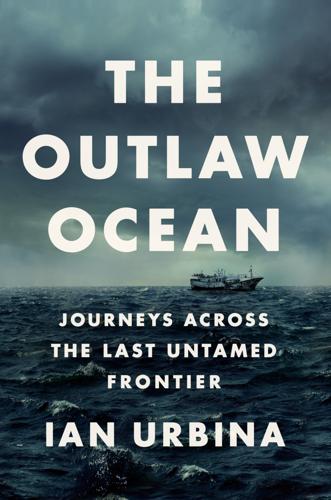
The Outlaw Ocean: Journeys Across the Last Untamed Frontier
by
Ian Urbina
Published 19 Aug 2019
If the bloom was eaten: The experiment in 2012 was not George’s first foray into geo-engineering. As chief executive of a company called Planktos, he had proposed in 2007 a similar iron-fertilization project in the equatorial Pacific west of the Galápagos Islands, with the hope of selling carbon offsets. The project was canceled in 2008 after what George’s company called a “disinformation campaign” by environmentalists and others who made it impossible to attract investors. “You get on board”: I interviewed Frith by phone several times in 2017. While much of my reporting took me to derelict: To learn about crime on cruise ships, I read Curt Anderson, “ICE Dive Unit in Miami Targets Smugglers Using Freighter, Cruise Ship Hulls to Ferry Drugs,” Associated Press Newswires, Feb. 28, 2011; Robert Anglen, “Comprehensive Reports of Cruise-Ship Crime Made Public, Led by Phoenix Man,” Arizona Republic, Oct. 13, 2016; Donna Balancia, “Crew Member Sues Carnival,” Florida Today, Feb. 13, 2008; “Brazil ‘Rescues’ Cruise Workers from ‘Slave-Like Conditions,’ ” BBC News, April 4, 2014; Jonathan Brown and Michael Day, “Cruise Ship Limps In—but Costa’s Nightmare Goes On,” Independent, March 2, 2012; Michael Day, “Costa Concordia: Shipment of Mob Drugs Was Hidden Aboard Cruise Liner When It Hit Rocks off Italian Coast, Investigators Say,” Independent Online, March 30, 2015; Richard Foot, “Gangs Smuggle Passengers on Cruises,” CanWest News Service, Nov. 23, 2005; John Honeywell, “The Truth About Crime on a Cruise Ship,” Telegraph Online, June 5, 2017; Vincent Larouche and Daniel Renaud, “Three Quebecers Charged with Smuggling $30M in Cocaine on Cruise Ship in Australia,” Toronto Star, Aug. 30, 2016; Jim Mustian, “Feds Arrest Cruise Ship Crewmen in Alleged Plot to Smuggle Cocaine into New Orleans,” New Orleans Advocate, Jan. 10, 2016; Natalie Paris, “Cruise Lines Defend Treatment of Staff,” Telegraph Online, April 7, 2014; “Ten Individuals Charged with Importing Hundreds of Pounds of Cocaine, Heroin into United States Aboard Cruise Ships,” Hindustan Times, June 10, 2005; U.S.
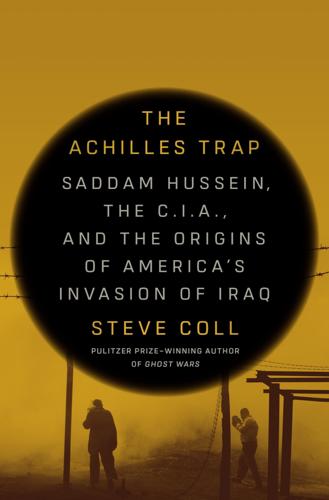
The Achilles Trap: Saddam Hussein, the C.I.A., and the Origins of America's Invasion of Iraq
by
Steve Coll
Published 27 Feb 2024
Saddam oversaw publicity campaigns about child mortality that were so transparently designed to manipulate international opinion that they hurt campaigners’ efforts to challenge the morality of sanctions. In a typical example, an Iraqi official urged the Ministry of Health to hoard the bodies of dead children for a mass procession in which the corpses would be paraded in child-size coffins draped with Iraqi flags.[16] Von Sponeck regarded the “systematic disinformation campaigns” by the U.S. and its allies, which sowed doubt about the true humanitarian picture in Iraq, to be just as appalling. U.N. headquarters, too, he recalled, sometimes downplayed or questioned reliable evidence of hunger and disease. The Iraqis attempted “to dramatize, to exaggerate, and to misrepresent,” the German diplomat remembered.
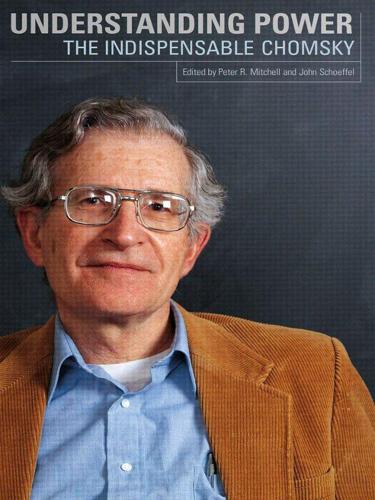
Understanding Power
by
Noam Chomsky
Published 26 Jul 2010
In 1981 the C.I.A. leaked a story to the press about U.S. efforts to assassinate Qaddafi, in the hope that this would lead Qaddafi to some kind of erratic reaction which we could then use as an excuse to bomb him. Okay, that was exposed: the first reference to C.I.A. disinformation about Libya appeared in Newsweek in August 1981, when Newsweek stated that it had been subjected to a disinformation campaign by the government. 17 Since then, there have been about a half-dozen similar cases in which Washington floated some lunatic story about Libya and the media bought it, then discovered later that it was disinformation and pretended they were all surprised; I mean, at some point you’d think they would begin to ask what’s going on, but apparently not.

Lawrence in Arabia: War, Deceit, Imperial Folly and the Making of the Modern Middle East
by
Scott Anderson
Published 5 Aug 2013
Nevertheless, there was initially nothing about the evacuation of Jaffa to suggest it would be anything more than one of those little forgotten footnotes of war, another point of misery for a civilian population long grown accustomed to it. But in issuing his edict, Djemal Pasha unwittingly set in motion one of the most consequential disinformation campaigns of World War I. The first link in that chain of events occurred on the night of April 17, when a twenty-seven-year-old woman was helped aboard a British spy ship trolling off the coast of Palestine. IT WAS A poignant reunion. Aaron Aaronsohn hadn’t seen his younger sister Sarah in nearly a year, but there she was in Port Said, pale and weak but alive, having just come off the Managem from Athlit.
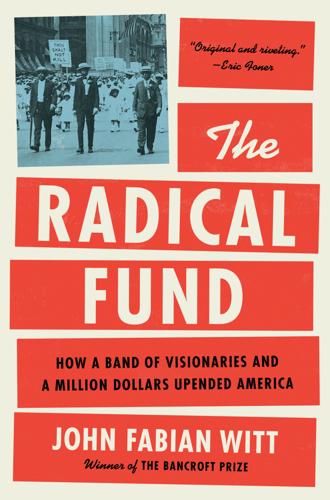
The Radical Fund: How a Band of Visionaries and a Million Dollars Upended America
by
John Fabian Witt
Published 14 Oct 2025
Today, much of what the Fund’s beneficiaries accomplished is under siege. Like the world in which Charles Garland and the Fund’s directors lived a century ago, the United States is a wealthy nation in crisis, plagued by unjustifiable economic inequalities, strained by racial divisions, and beset by disinformation campaigns that openly distort the democratic process. Detractors on the left and the right alike have turned on the Fund’s legacies.16 This book is an effort to recover the astonishing world of the American Fund and to tease out the lessons its history holds for our own. The Fund’s key figures—men and women, Black and white, working-class and outrageously privileged—were among the first to take up the challenge of remaking a recognizably contemporary mass capitalist society.
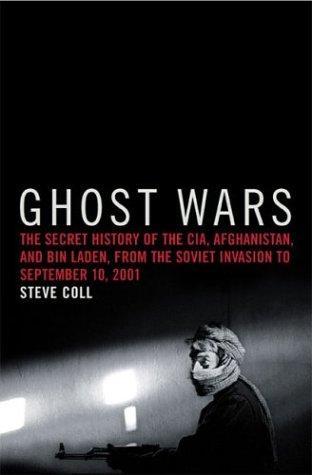
Ghost Wars: The Secret History of the CIA, Afghanistan, and Bin Laden, from the Soviet Invasion to September 10, 2011
by
Steve Coll
Published 23 Feb 2004
They issued dozens of such warnings in public and private in the weeks after the Africa attacks.5 They were aware that bin Laden and his leadership group were probably planting disinformation to distract them. They assumed that the more they closed embassies and issued alerts, the more they encouraged this disinformation campaign. Yet they could see no alternative. They had to collect as much threat information as they could, they had to assess it, and they had to act defensively when the intelligence looked credible. There was plenty that looked truly dangerous. The CIA pushed European security services, Pakistan, Egypt, Saudi Arabia, and other governments to crack down that autumn on known associates of bin Laden.

Rise and Kill First: The Secret History of Israel's Targeted Assassinations
by
Ronen Bergman
Published 30 Jan 2018
He was dead before his face hit the plate. Within thirty seconds, the two Flotilla 13 snipers who had fired the shots from two different spots on the beach were already on rubber dinghies, headed to a navy vessel. Back on the beach, they had left behind some cheap Syrian cigarettes, part of a disinformation campaign to make the assassination look like an internal Syrian affair. As a frantic search for the shooters got under way in the villa, the commander of Suleiman’s bodyguards called the presidential palace to notify Assad that his closest adviser had been killed. Six bullets, from two directions, and no one ever saw the assassins.
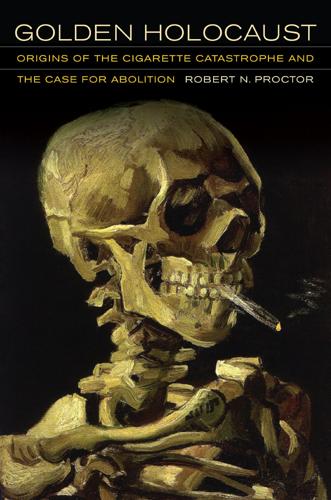
Golden Holocaust: Origins of the Cigarette Catastrophe and the Case for Abolition
by
Robert N. Proctor
Published 28 Feb 2012
An equally misleading propaganda piece, titled The Answers We Seek, had been shown to 324,512 viewers by 1982, including tens of thousands of children.22 TESTIMONIALS OF SMOKERS: THE CONSUMER LETTERS Public opinion polls show that millions of Americans still do not appreciate many of the dangers of tobacco use.23 That is perhaps not surprising in a nation where huge swaths of the population don’t know that humans share a common ancestor with apes, or cling to the preposterous notion that Iraq—or the CIA or Israel—conspired to blow up the Twin Towers of the World Trade Center or that Barack Obama is a secret Muslim. H. L. Mencken once observed that no one ever went broke underestimating the intelligence of the American public; of course the real issue is not lack of intelligence but rather the lingering effects from one of history’s most powerful disinformation campaigns. What can we say about knowledge, beyond what we’ve already learned from polls? The letters written to the tobacco companies are useful in this regard, since here we have the unfiltered testimony of consumers, or at least of those going to the trouble of writing and mailing a letter. Tens of thousands of letters by people from all walks of life are preserved in the industry’s archives, most of which are to or from R.

Judas Unchained
by
Peter F. Hamilton
Published 1 Jan 2006
As she said it, she realized how weak it sounded. ‘I should have absolute proof in a couple of days. That’s why I’m preparing the groundwork now.’ ‘They accused Doi of being a Starflyer agent. The President herself.’ ‘She’s not.’ Justine recalled the conversation she’d just had with Bradley Johansson. ‘That was part of a disinformation campaign to discredit the Guardians.’ He clicked his fingers. ‘Your interest in revisiting the Sorbonne Wood weekend. That’s a part of this as well.’ ‘We were being manipulated.’ ‘Preparing us for war. Yes, I see now. Just as the Guardians claim.’ ‘You say it with such scepticism.’ ‘And did you blindly follow your father’s belief?’
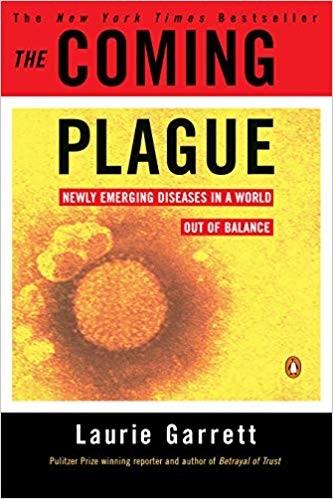
The Coming Plague: Newly Emerging Diseases in a World Out of Balance
by
Laurie Garrett
Published 31 Oct 1994
The publication also blamed AIDS on 1959 Nobel Prize recipient Bertrand Russell, saying, “These globalists are responsible for unleashing the AIDS virus upon the world’s population, they would be guilty of mass murder at levels heretofore not even conceived of in the most imaginative of monster movies.” 207 U.S. Department of State, “The U.S.S.R.’s AIDS Disinformation Campaign,” Foreign Affairs Note, July 1987. 208 Peter Duesberg’s views have been so widely published that it is difficult to narrow a list to key sources. For Duesberg’s perspective, see B. Guccione, Jr., Interview, September 1993: 95–108; P. H. Duesberg, “Human Immunodeficiency Virus and Acquired Immunodeficiency Syndrome: Correlation But Not Causation,” Proceedings of the National Academy of Sciences 86 (1989): 755–64; J.
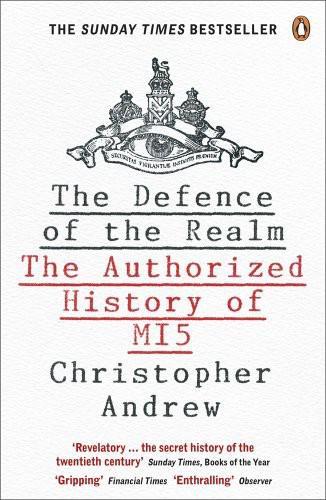
The Defence of the Realm
by
Christopher Andrew
Published 2 Aug 2010
All were, however, involved with the CIA, MI5 and SIS in a larger secret association with a similar agenda, codenamed CAZAB, which held its first meeting in Melbourne in November 1967.68 The meeting agreed to set up a joint counter-intelligence group (in association with the FBI) to seek to identify high-level Soviet penetration in the West, especially of intelligence agencies, and to uncover Soviet disinformation campaigns.69 Angleton brought Golitsyn with him to Melbourne, where, according to Peter Wright, Golitsyn ‘laid special emphasis on Britain, and the many penetrations which, he claimed, were as yet undiscovered, and which only he could locate. FJ was smiling the smile he reserved for particularly tiresome people.’70 Security Service officers continued to consult Angleton personally about the search for traitors in MI5’s own ranks.

Europe: A History
by
Norman Davies
Published 1 Jan 1996
Bezymenski, The Death of Adolf Hitler: Unknown Documents from the Soviet Archives (New York, 1968). (‘Bezymenski’ is probably a Russian pseudonym meaning ‘nameless’.) 5. Waite, ‘Hitler’s Guilt Feelings’, 236 ff. The subject of the Führer’s allegedly abnormal anatomy may ultimately derive from a secret disinformation campaign launched by SOE in the Arab countries in 1941: Independent, 5/6 Sept. 1994. 6. After ‘Fred Karno’s Army”, from Joan Littlewood, Oh What a Lovely War! (Theatre Workshop, London, 1976). BOGUMIL 1. See Steven Runciman, The Mediaeval Manichee: A Study of the Christian Dualist Heresy (Cambridge, 1947; repr. 1984). 2.